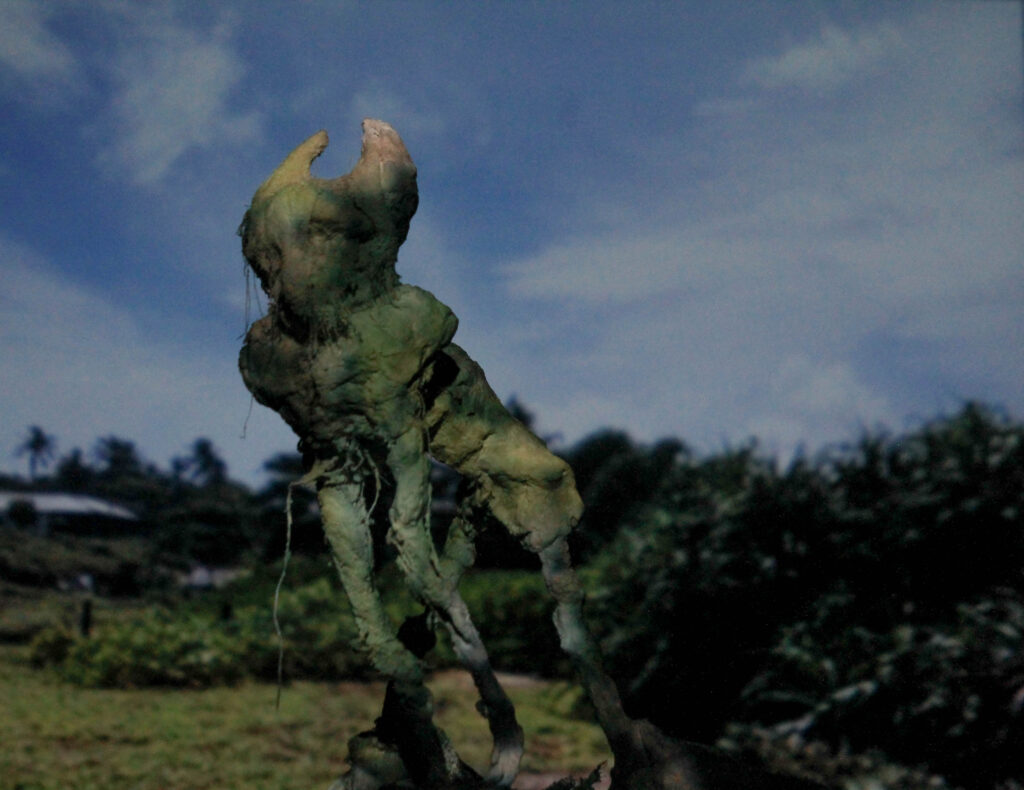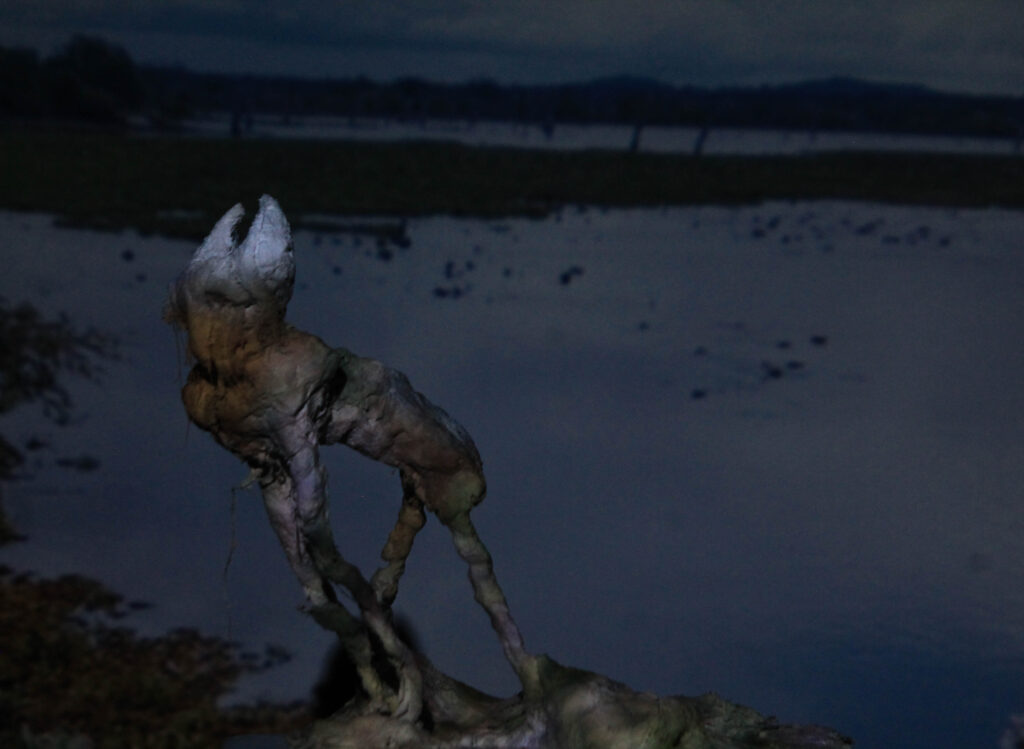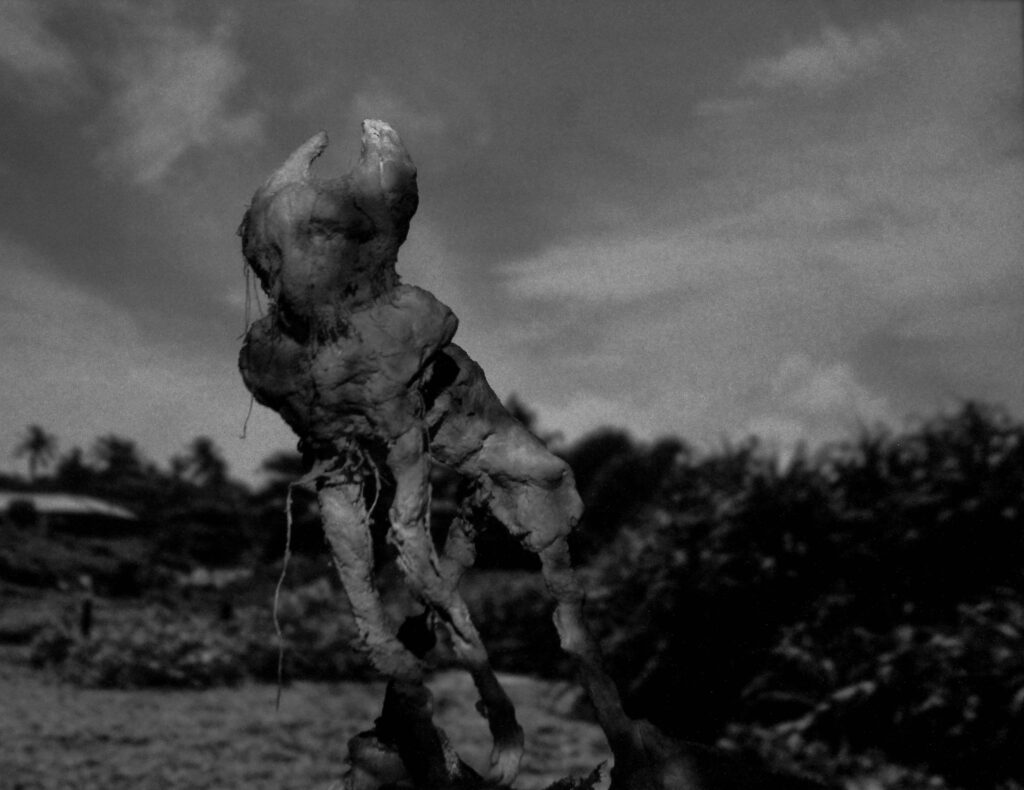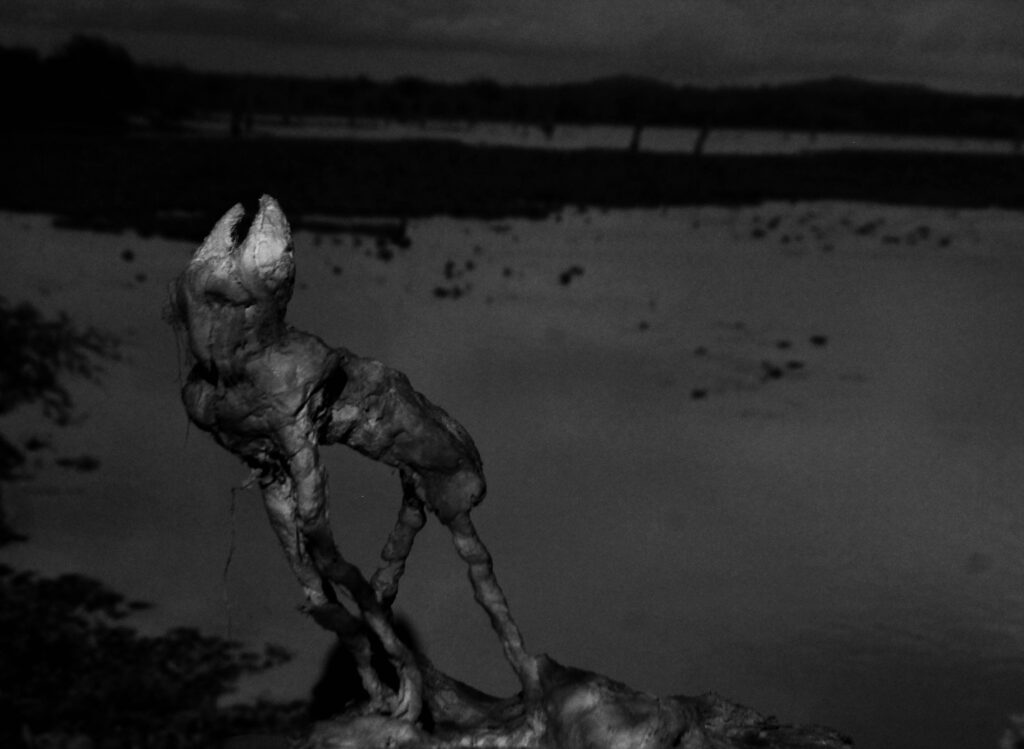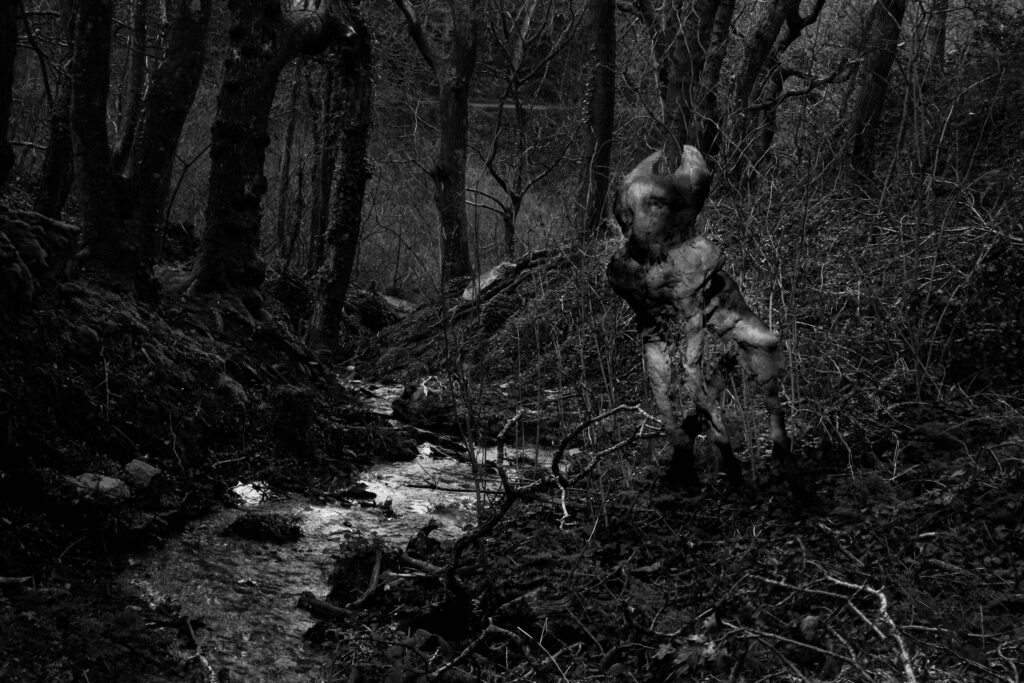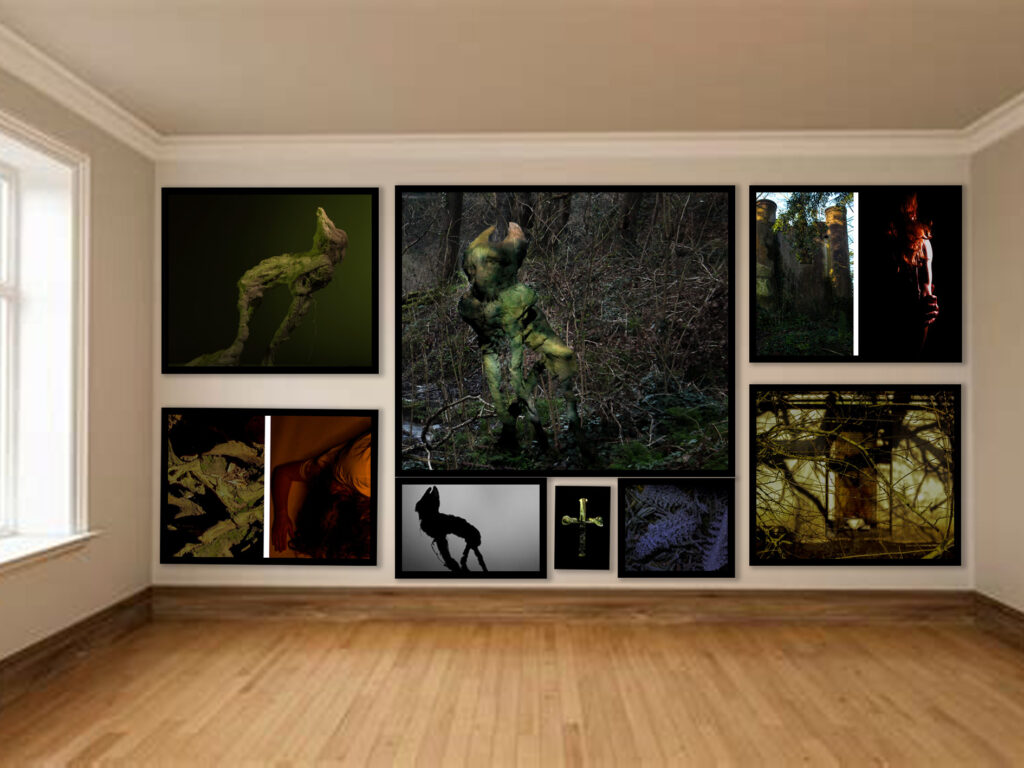
virtual gallery


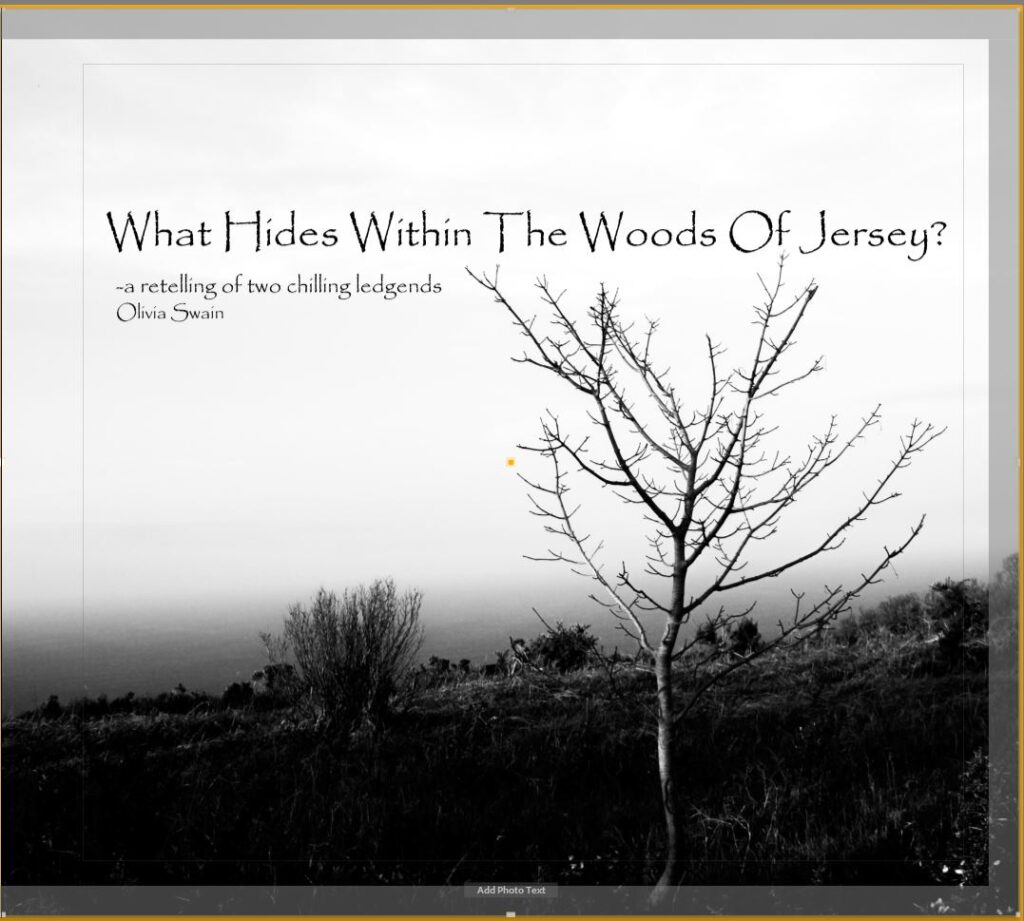

white space left for illustration post printing
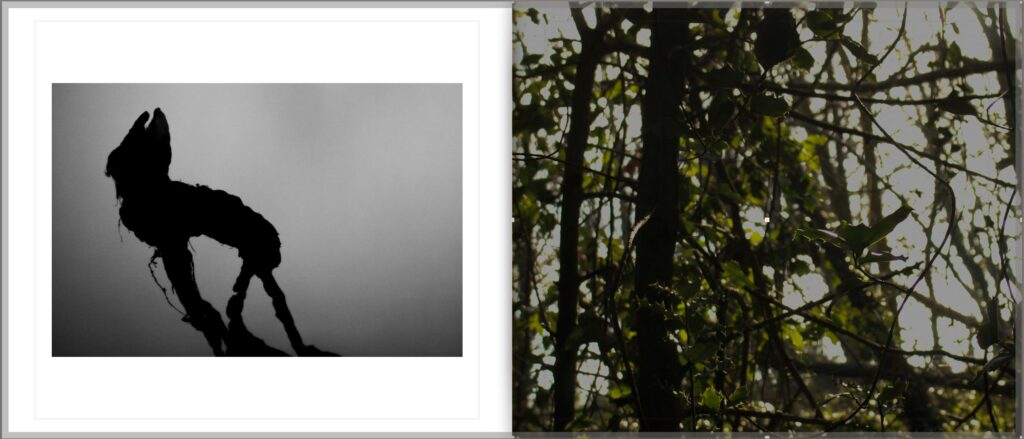
silhouetted picture of the fairy to peak interest and speculation
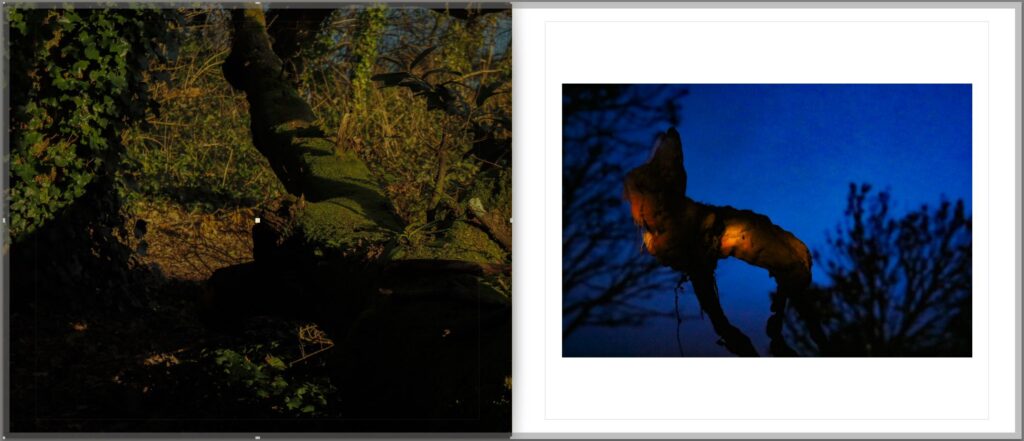
more clear image of the fairy but still dimly lit

the fairy is being slowly revealed as its approached, here we get our first glimpse of our nervous figure
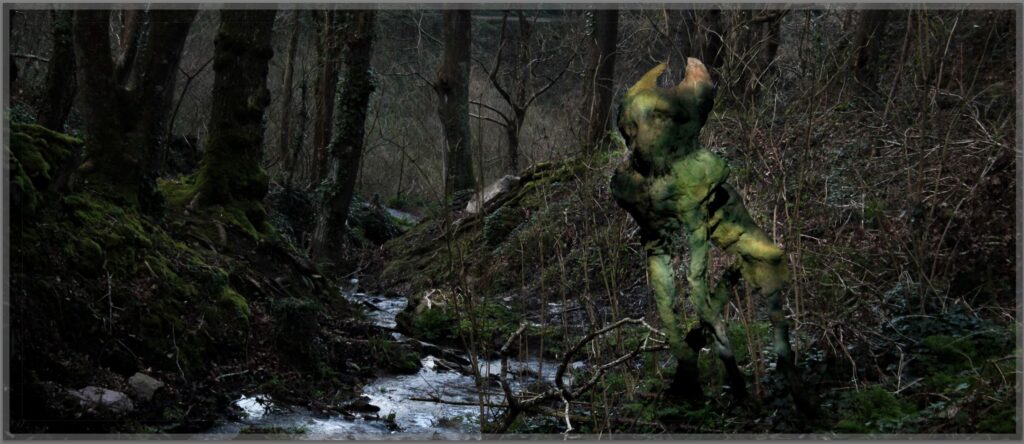
clear presentation of the fairy in the wild, indicated to be the size of small trees
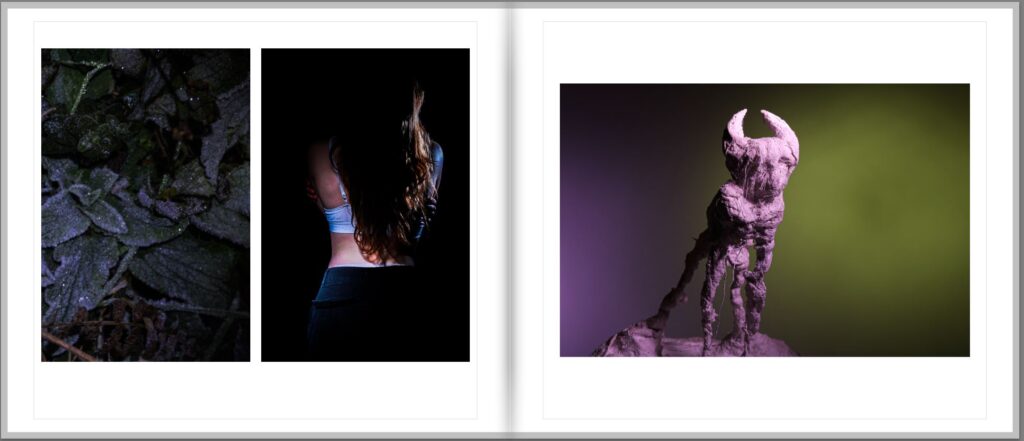

image above provided to atmosphere as our protagonist of revealed more and more and appears very tense
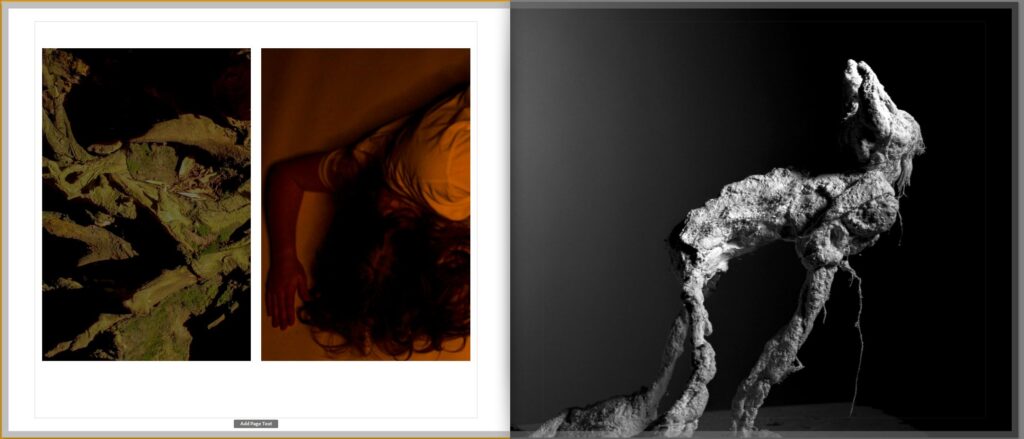
protagonist is pictured falling

clear, detailed and intimidating pictures of the fairy – he is close

the fairy becomes more and more obscured through a series of three images – the fairy leaves
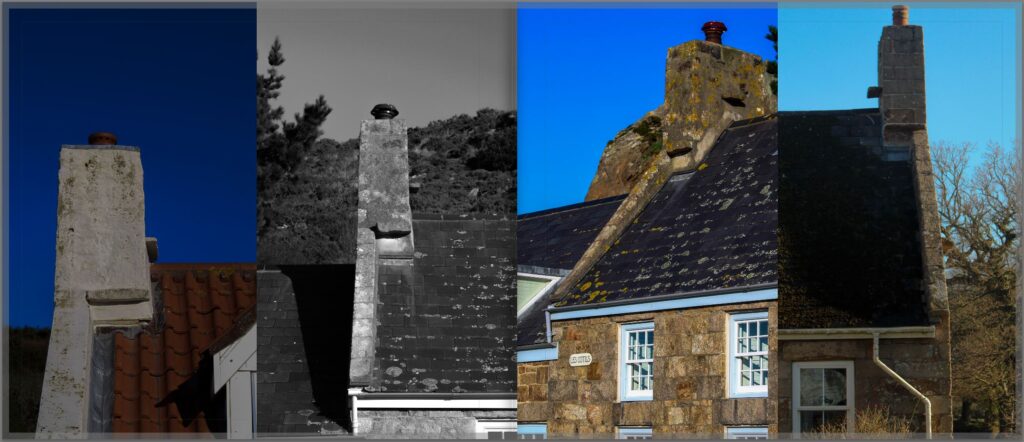
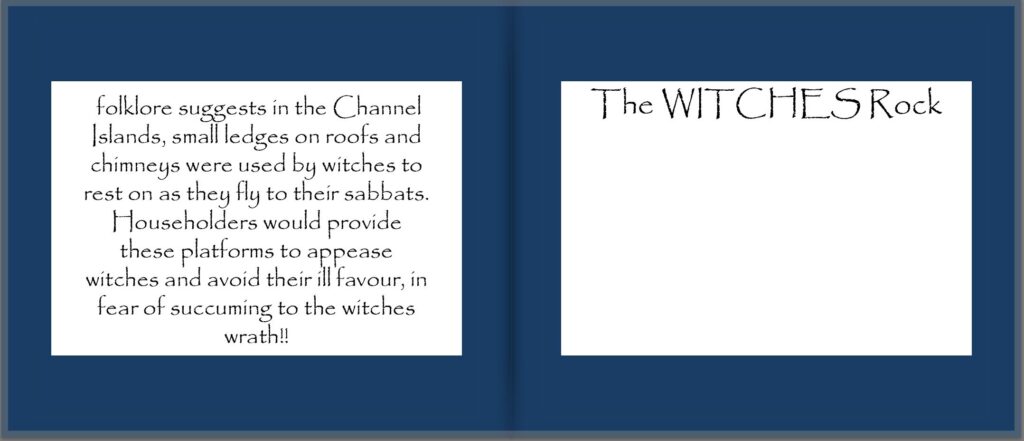
change of stories + brief informational page about witches seats ( bellow and above )
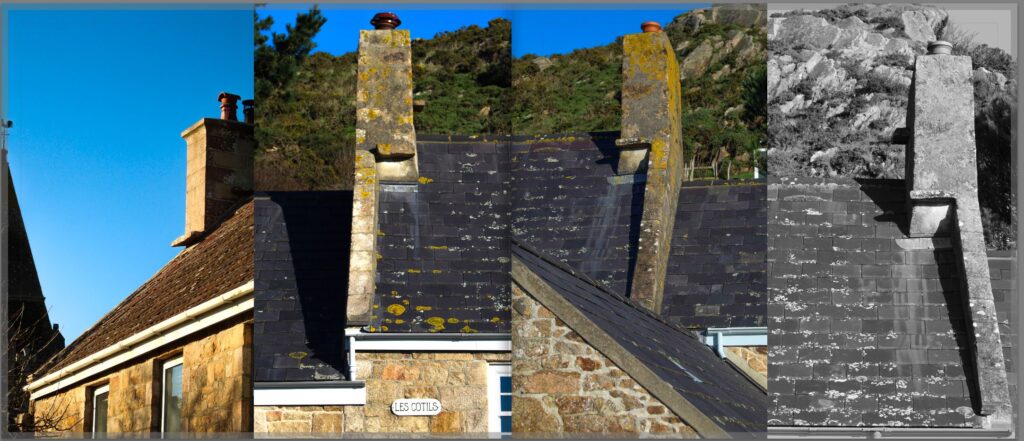
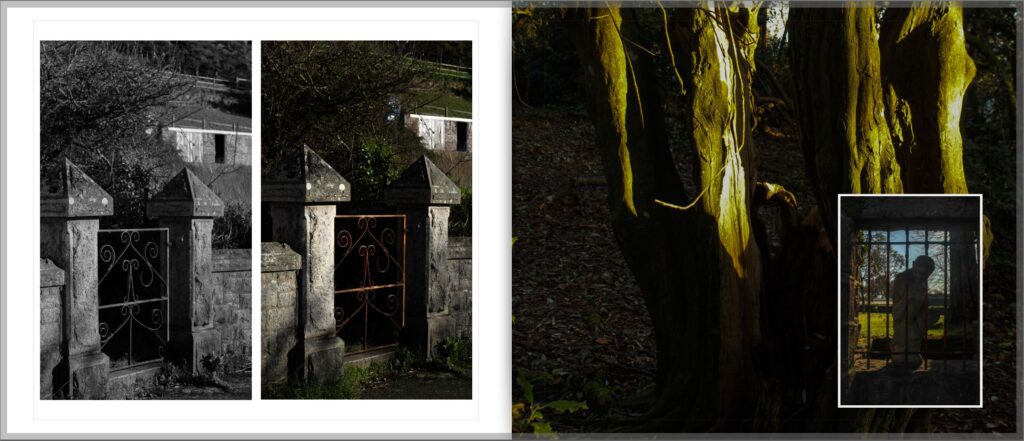
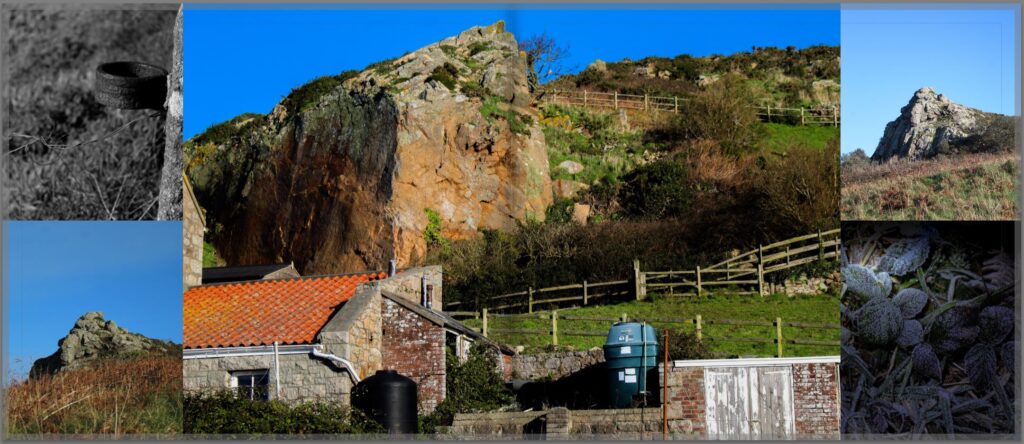
atmosphere setting
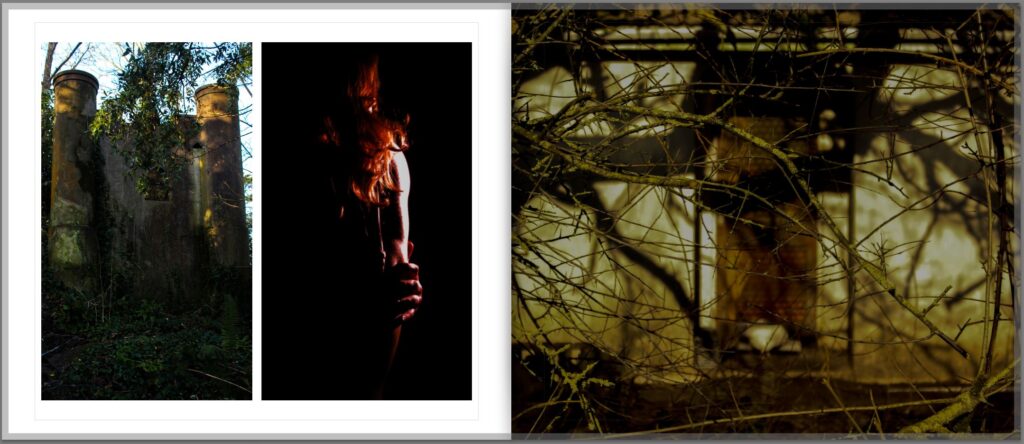
first view of the protagonist – establishing setting
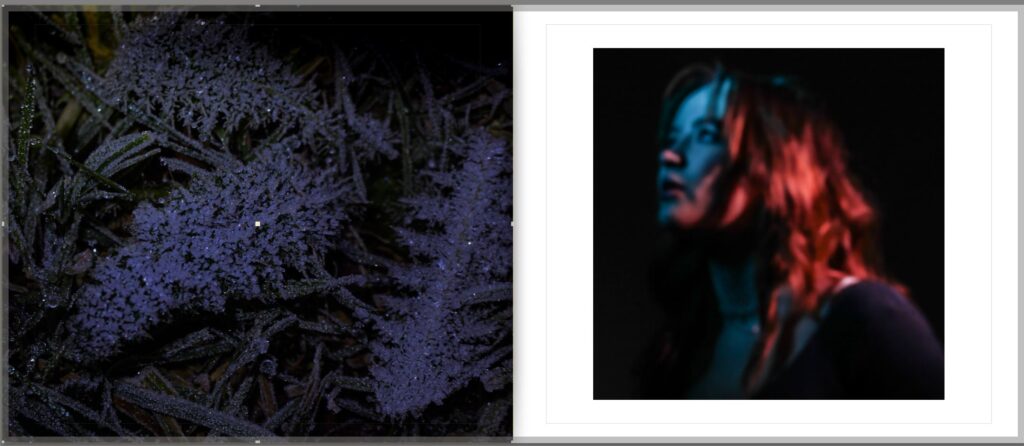
we can see more and more of her but not quite
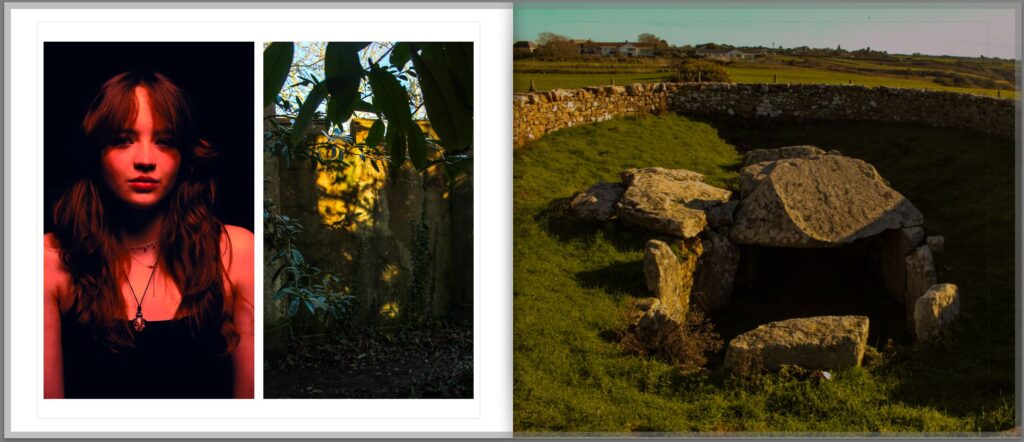
witch is revealed but the face is still obscured with shaddow and hair
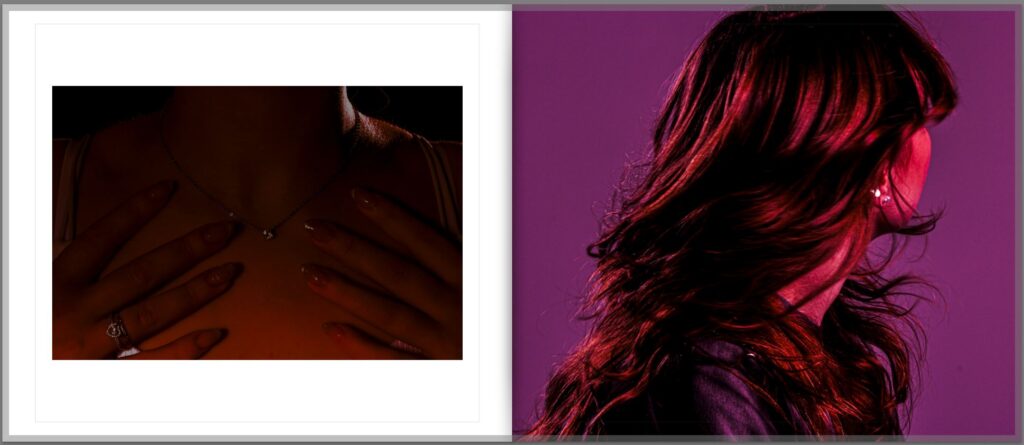
witch looks to be running

religious and occult influence
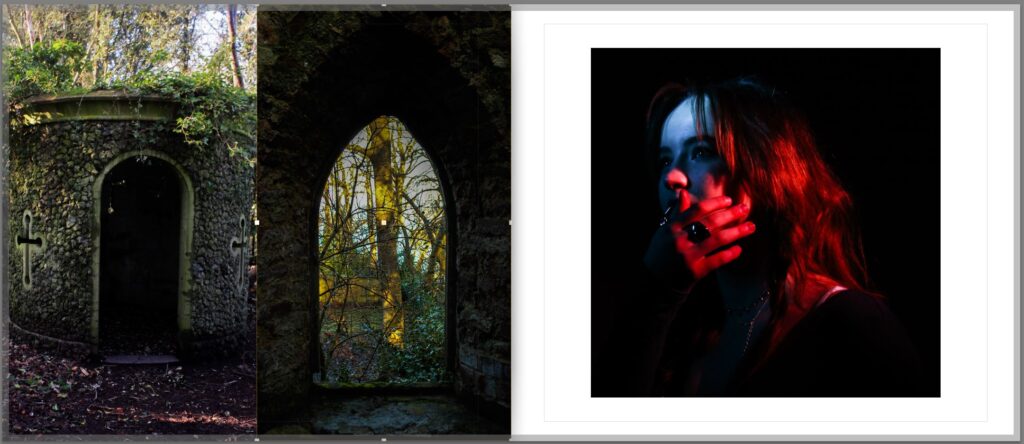
protagonist is seeming upset with unknown hand on her face

hands and face are bound and eyes bore into the viewer
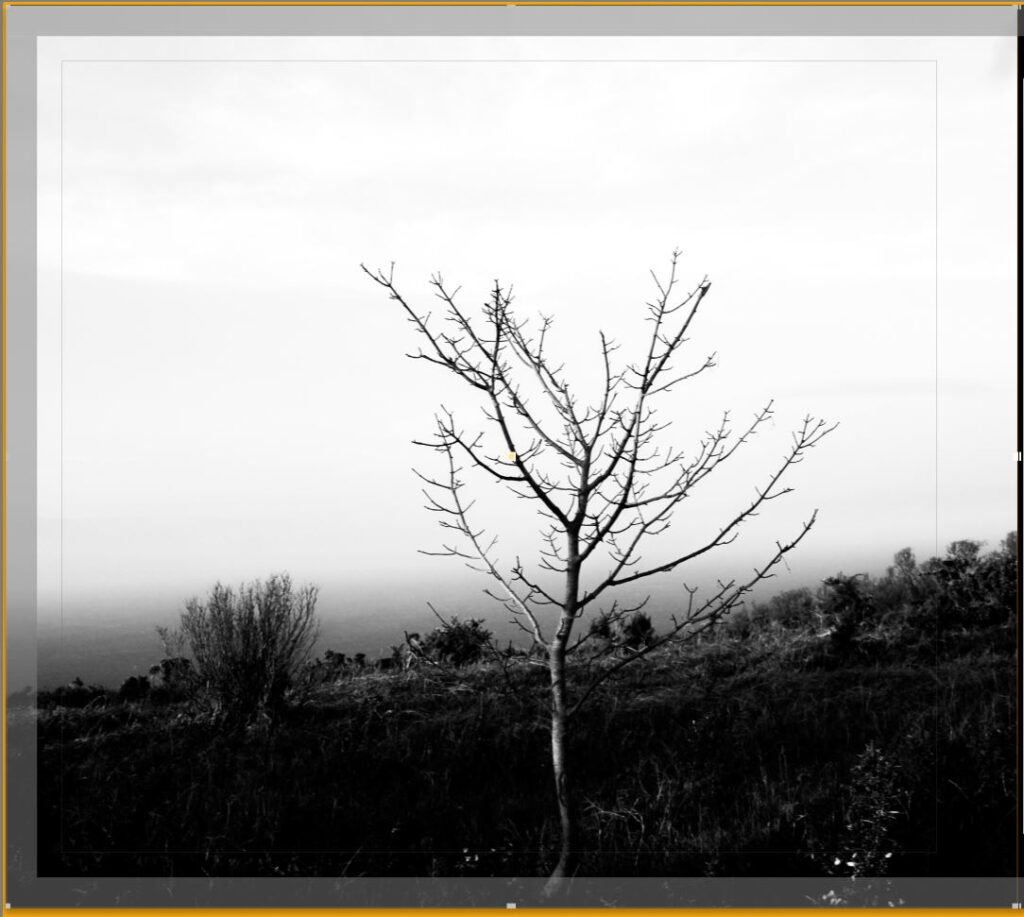
back cover

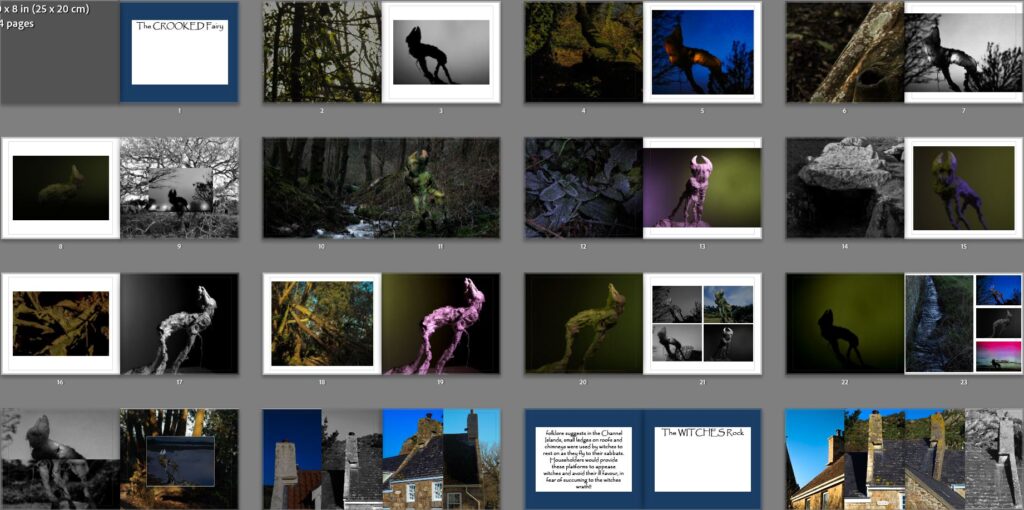
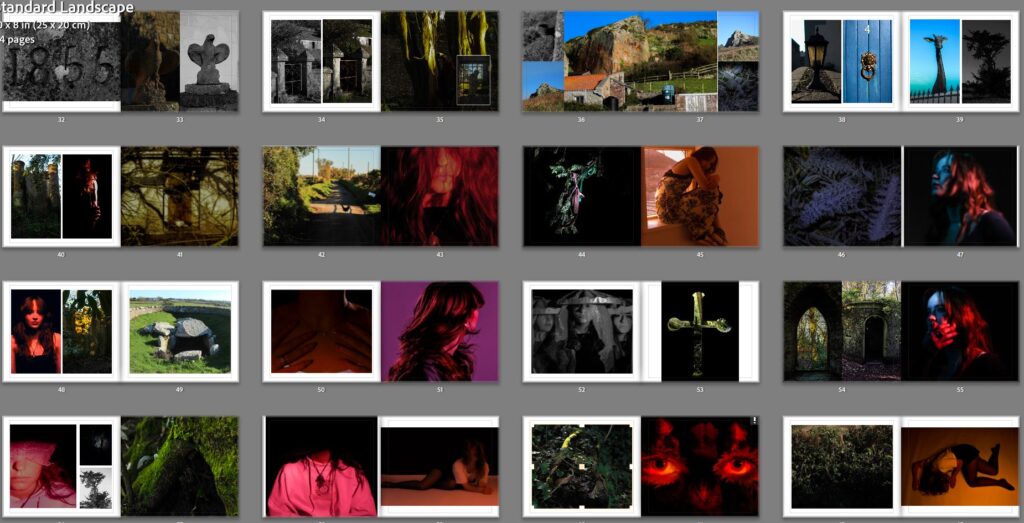
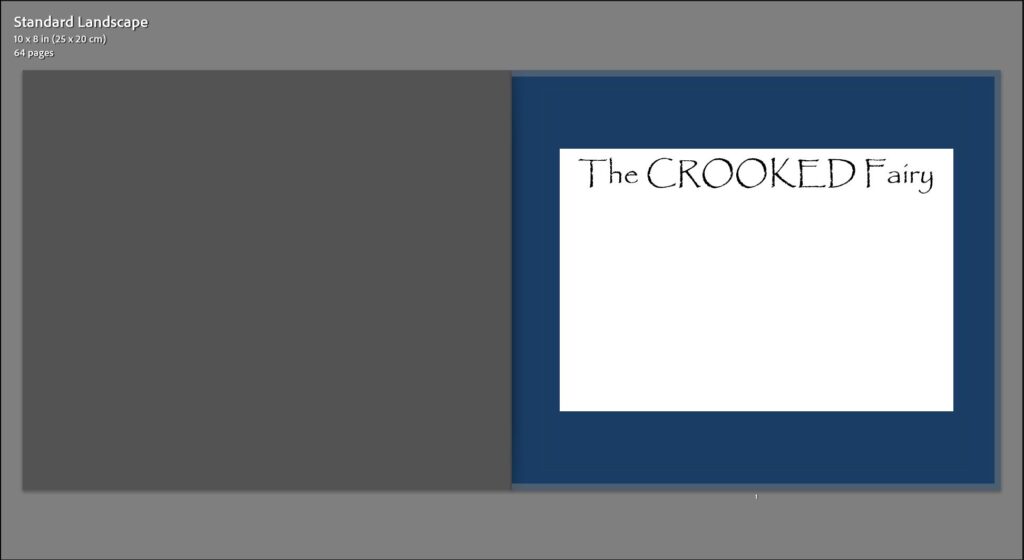
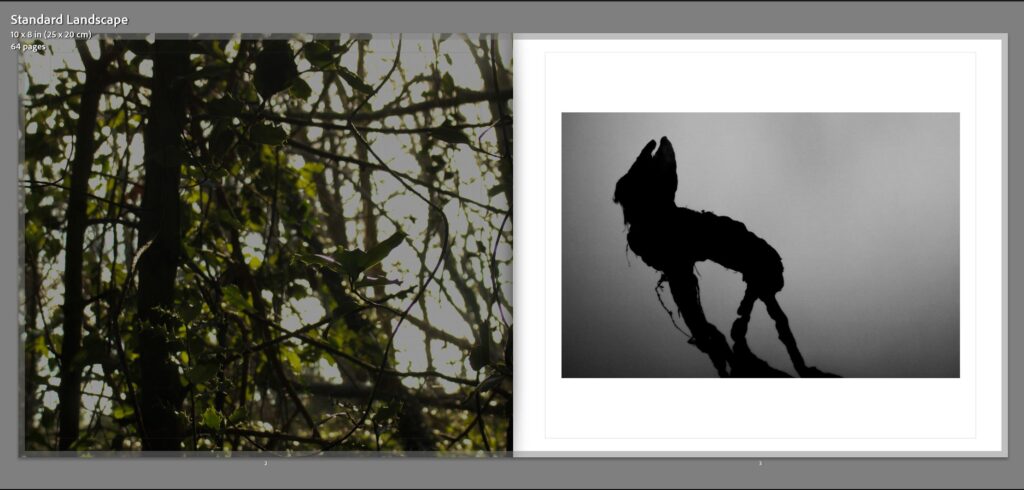
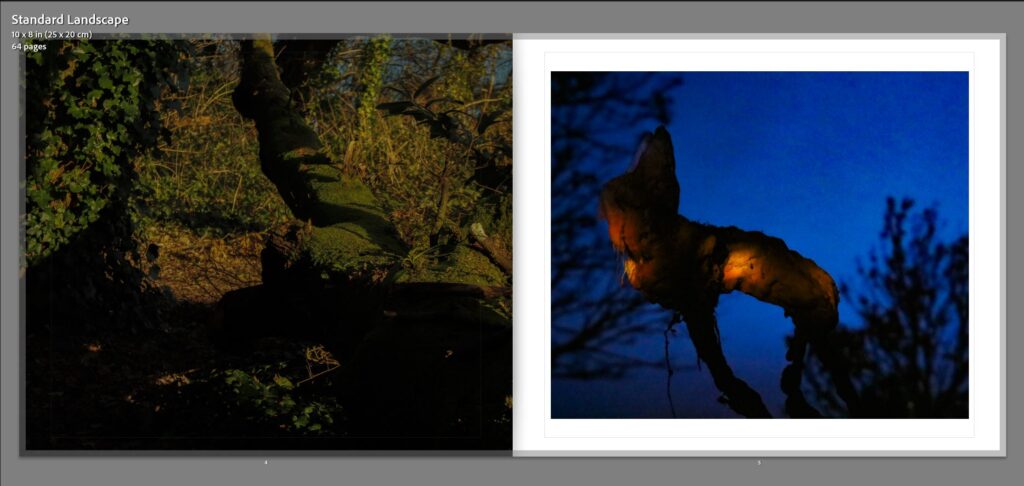
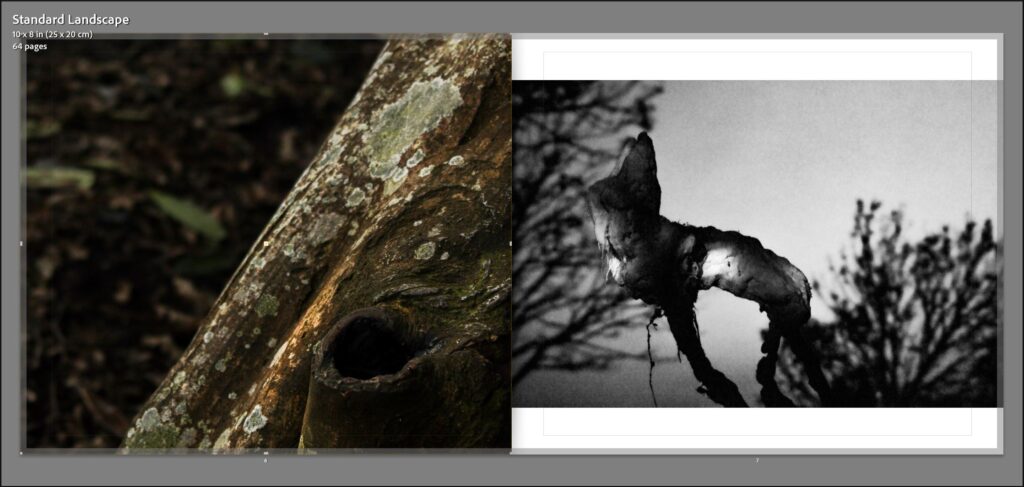

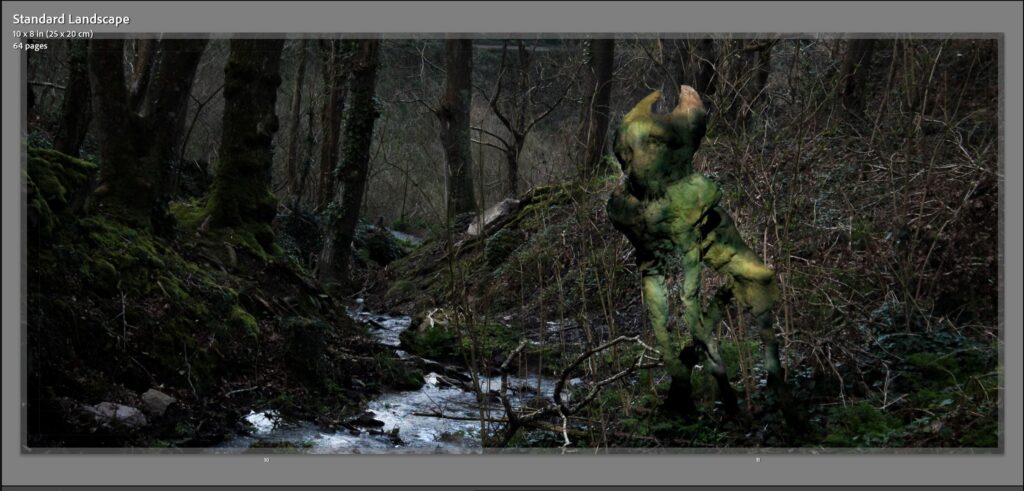
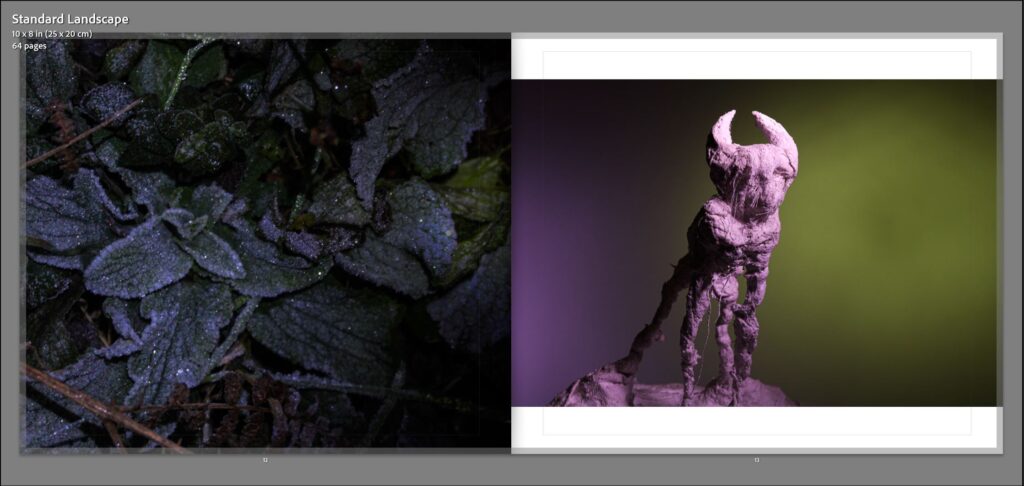
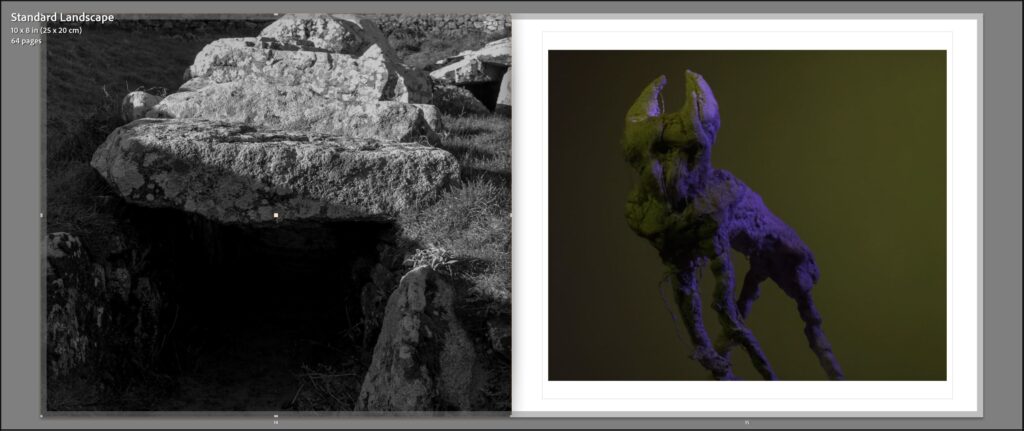
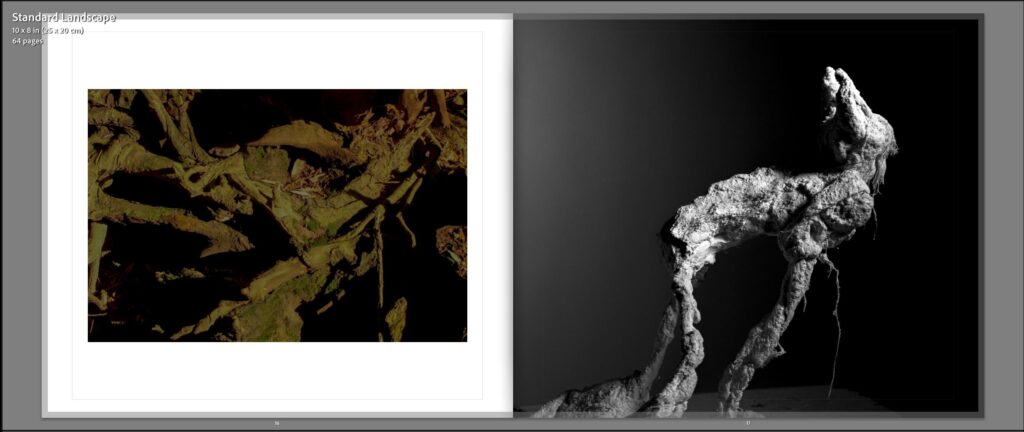
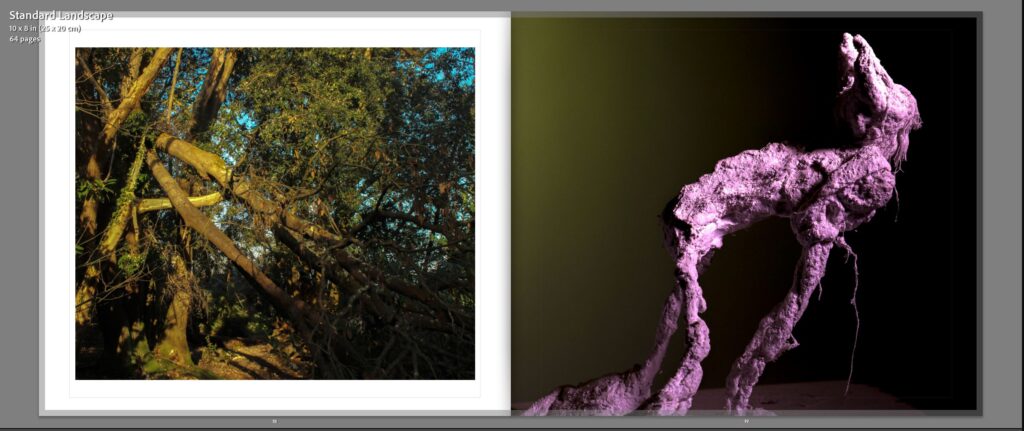



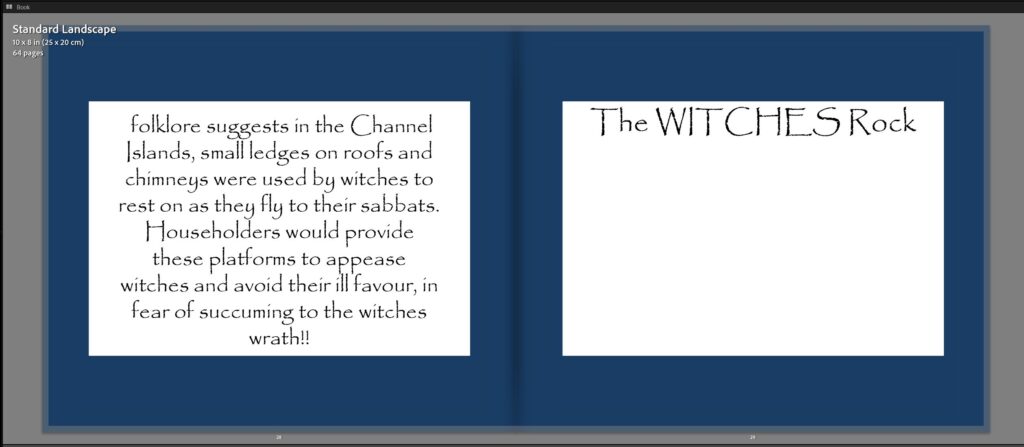

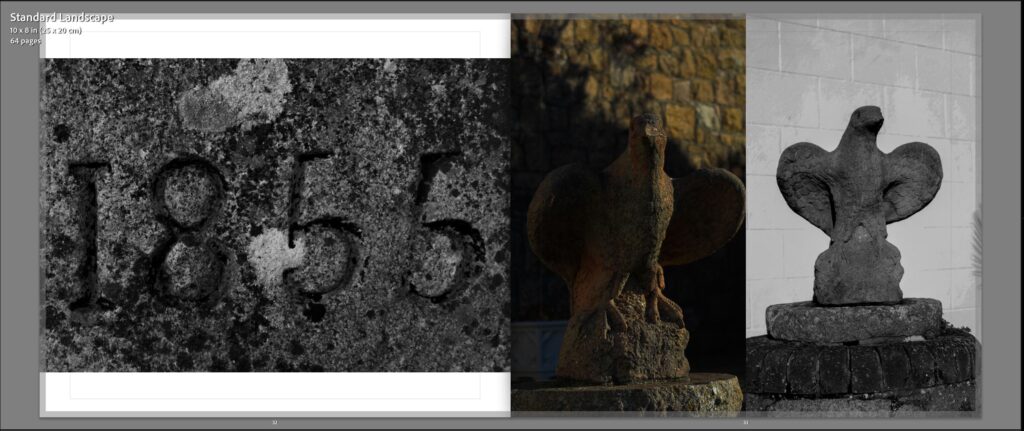
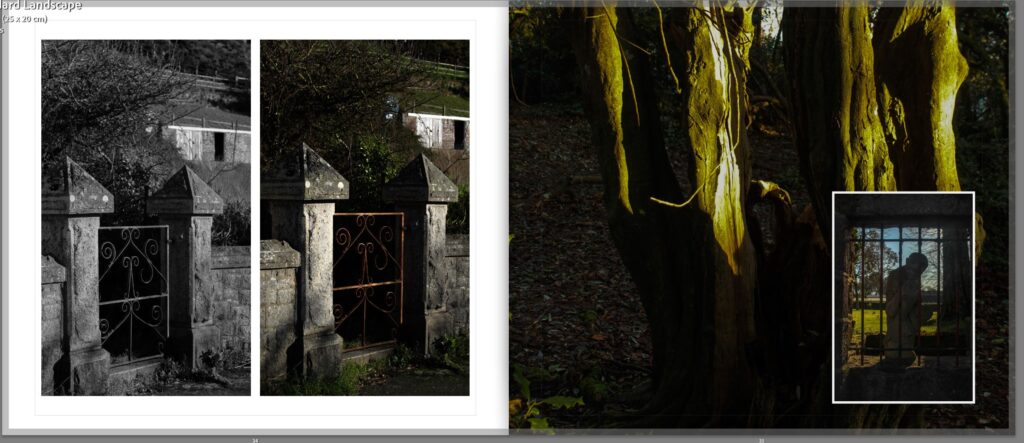
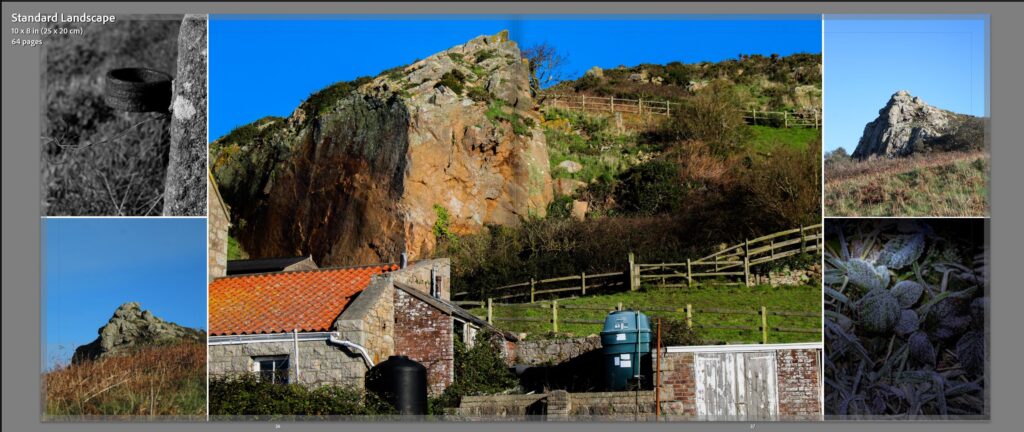
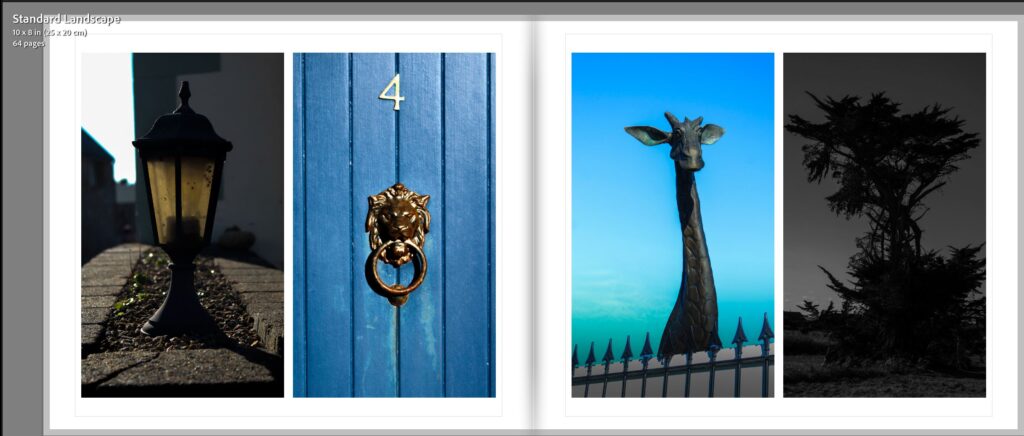

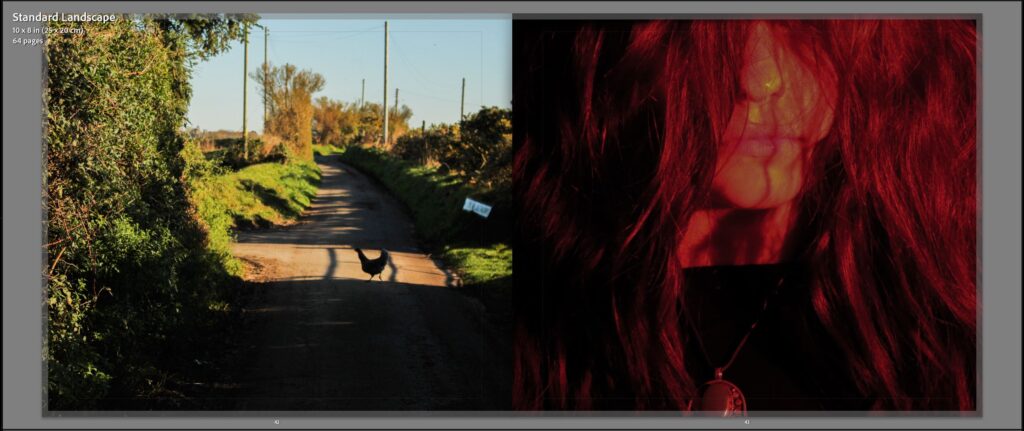

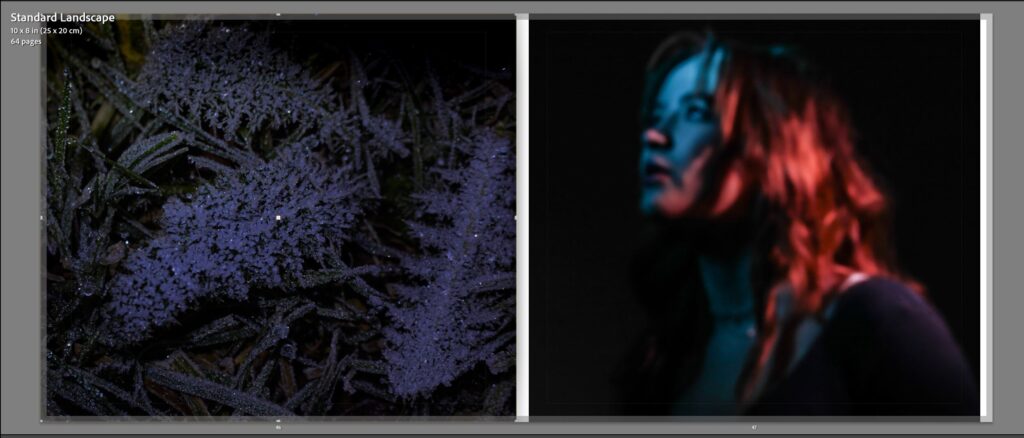

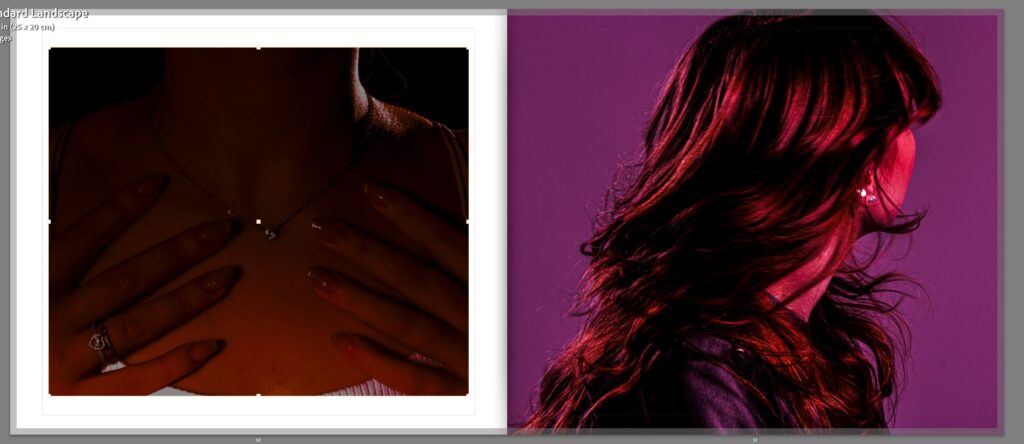
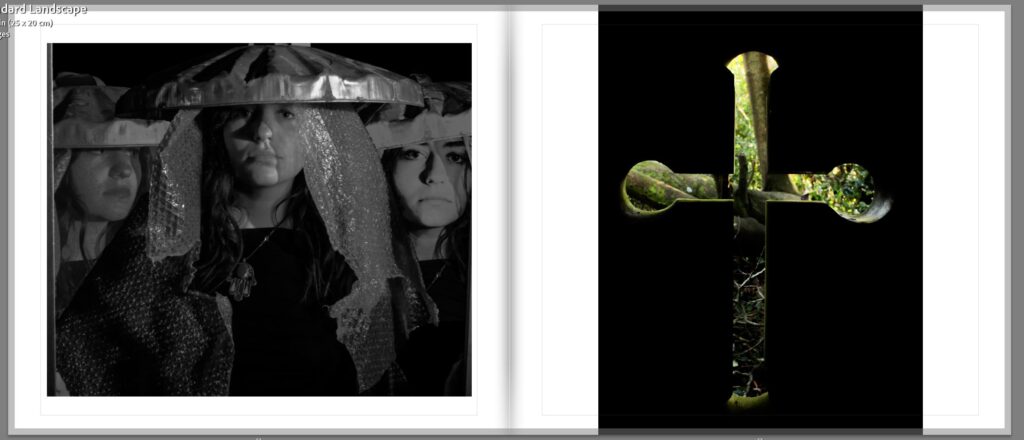
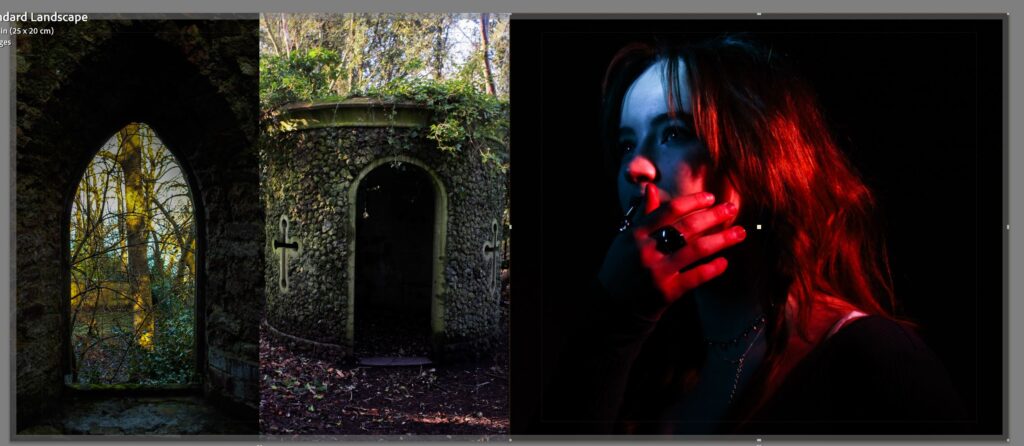
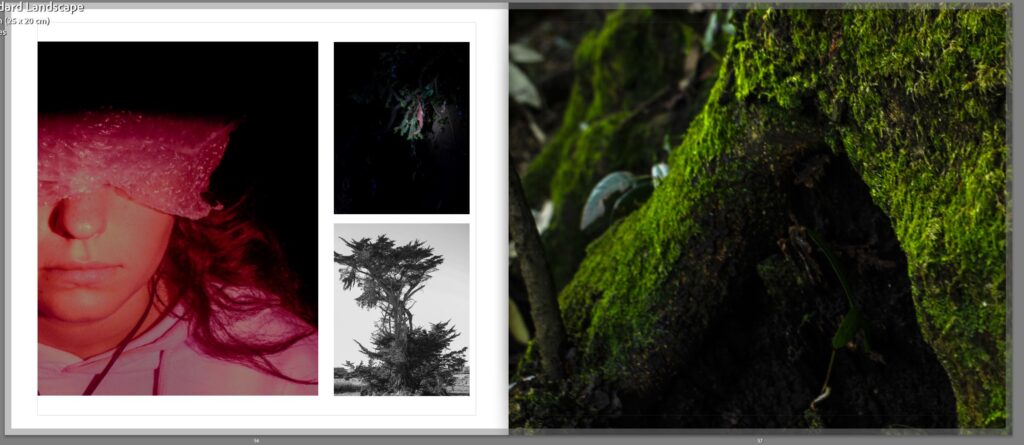
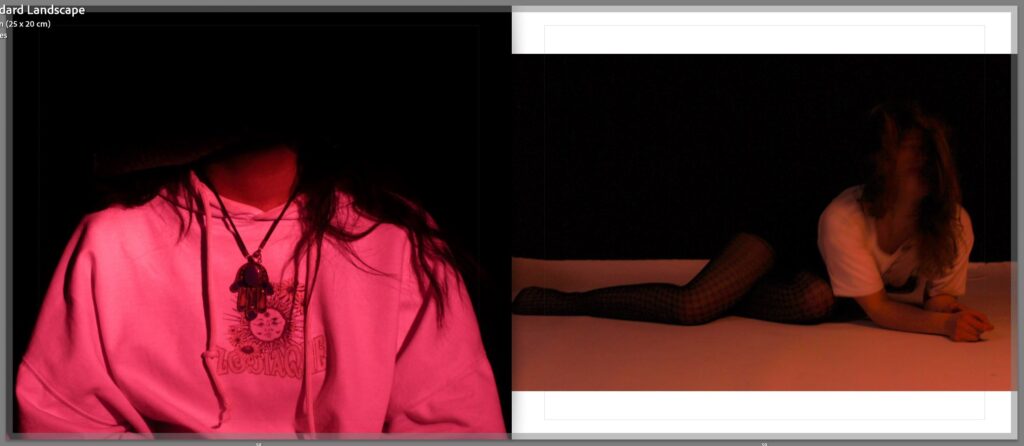
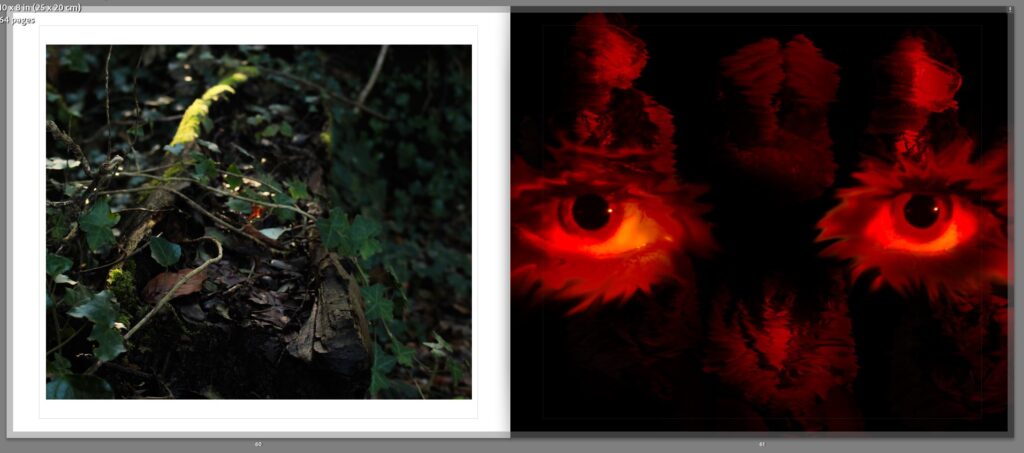



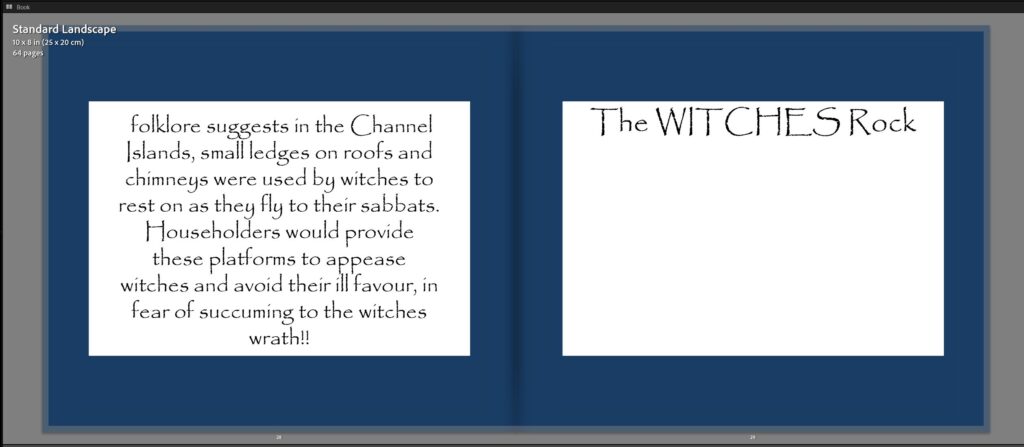
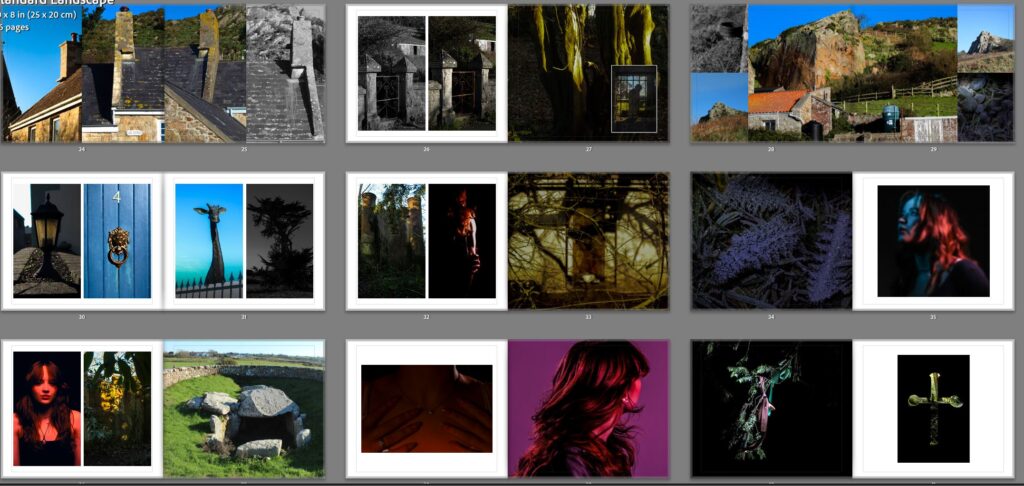

How did i improve?
I started with resizing images to create uniformity throughout the photobook and allow for breathing room between images.
I then removed any images I felt were not adding to my books overall aesthetic and narrative and/or were repeat images or too similar in nature.
I then introduced a anonymous figure, using faceless and dynamic photos to create more an atmosphere mystery and inquiry.
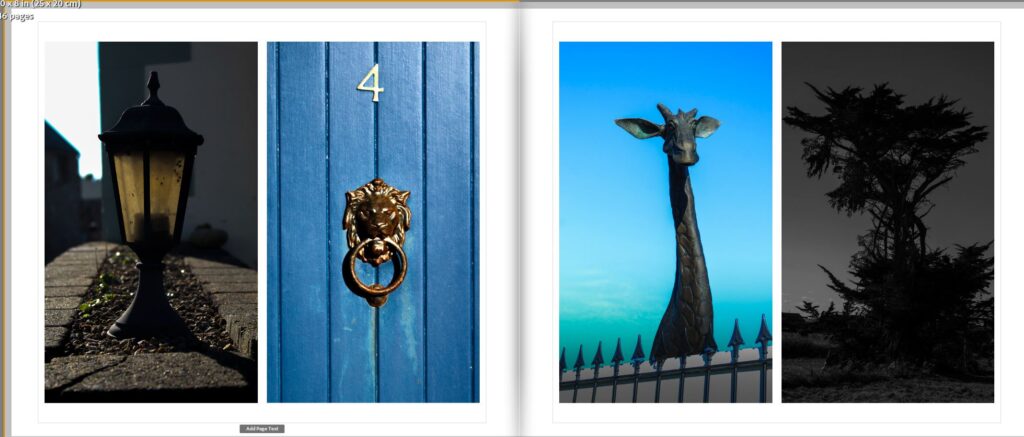
These particular images were chosen in order to combine two opposing elements in the same page spread, highlighting the interesting contrast between the height, contrast, colour and form of the images, this creates an eye-catching and thought-provoking collection of images to break up any potential monotony throughout the photo book that may have occurred.
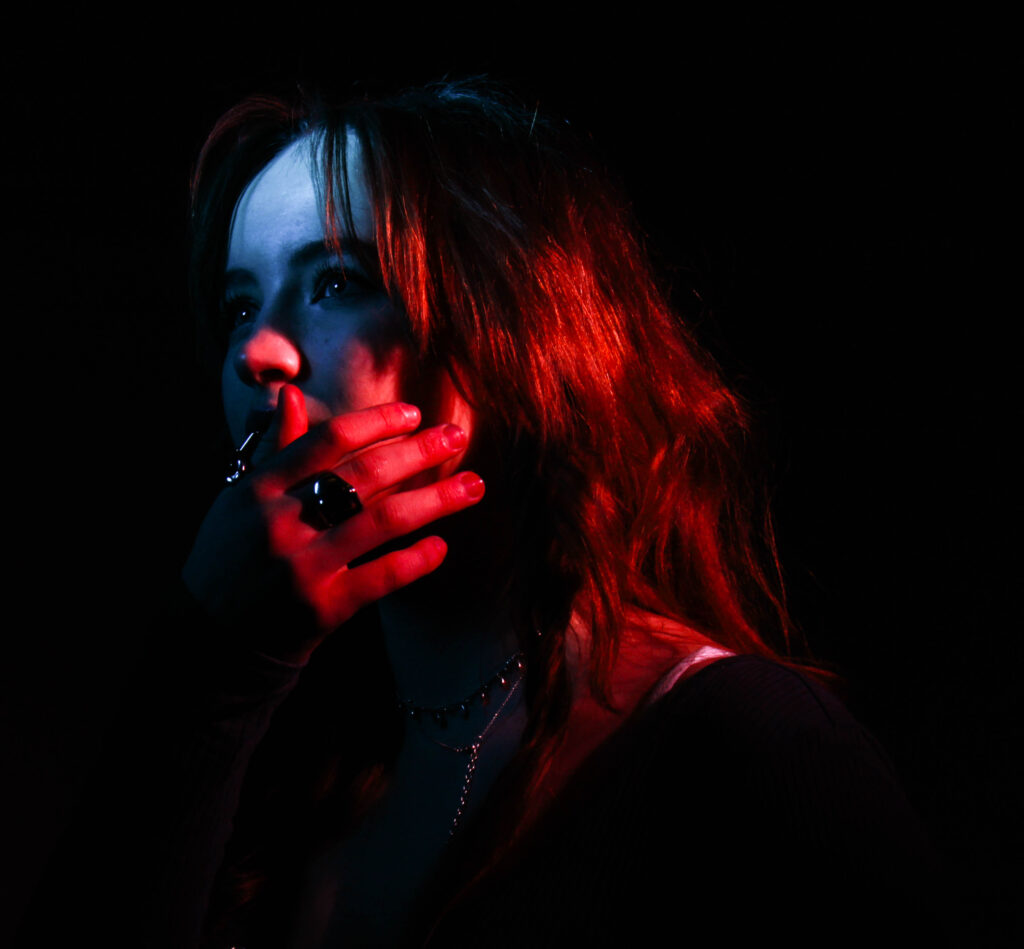

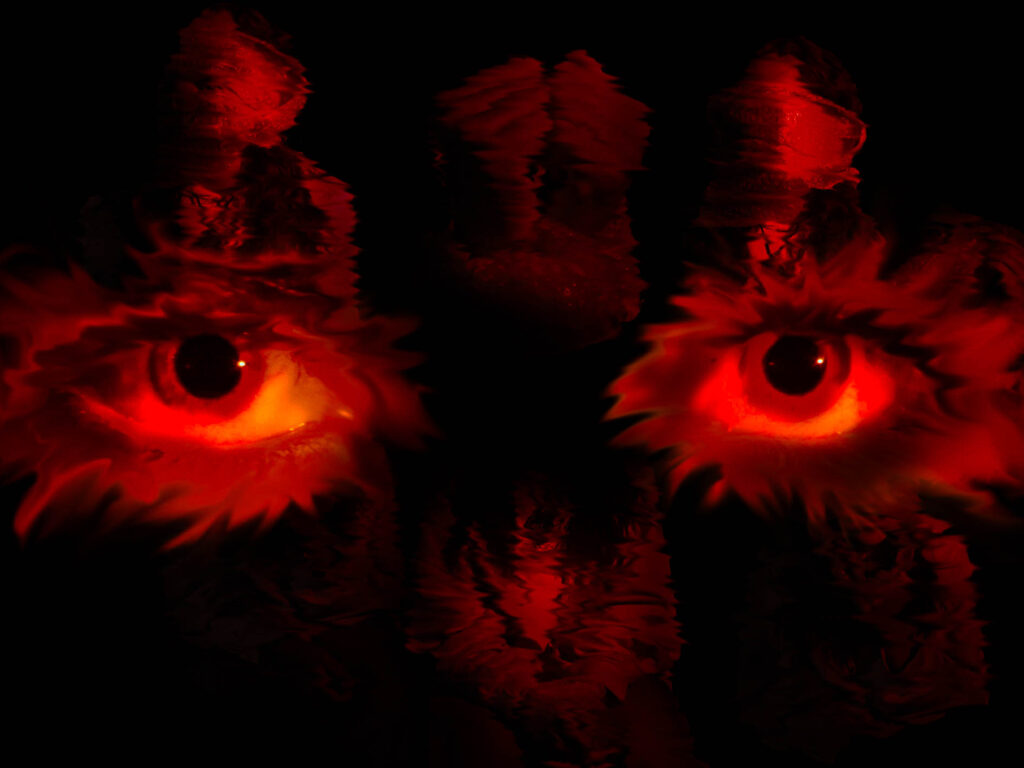
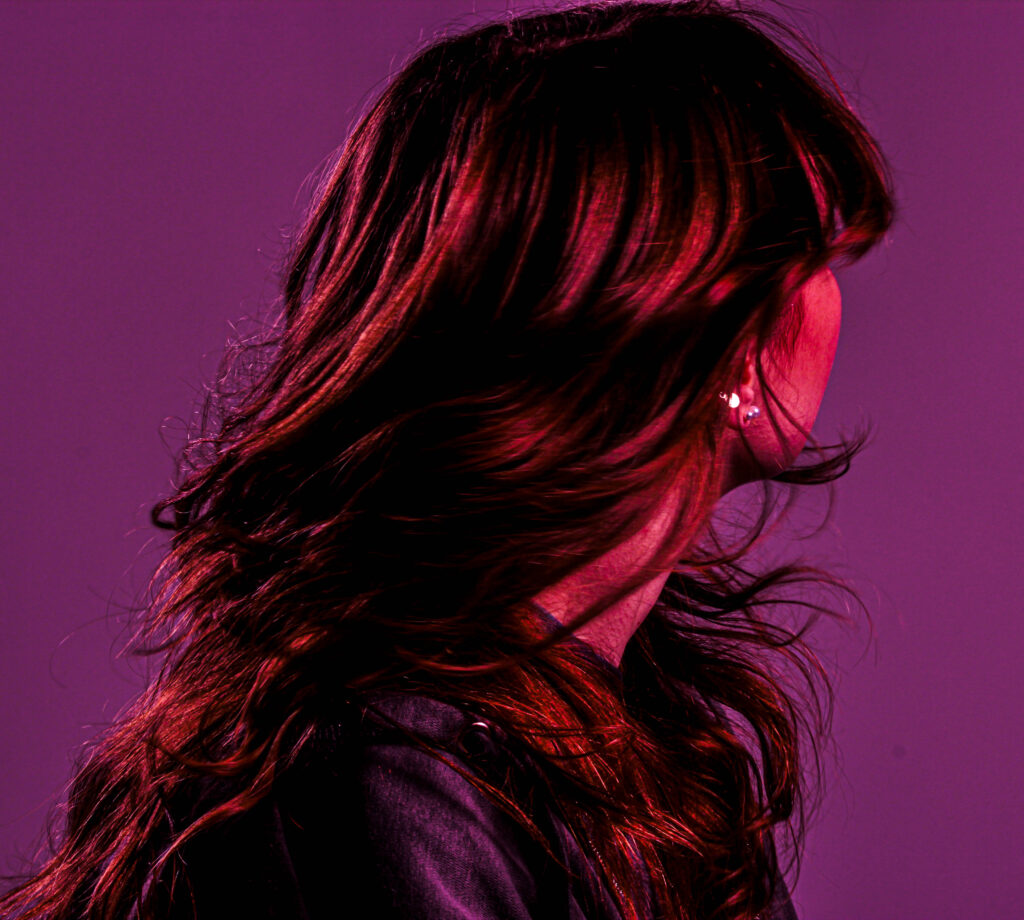

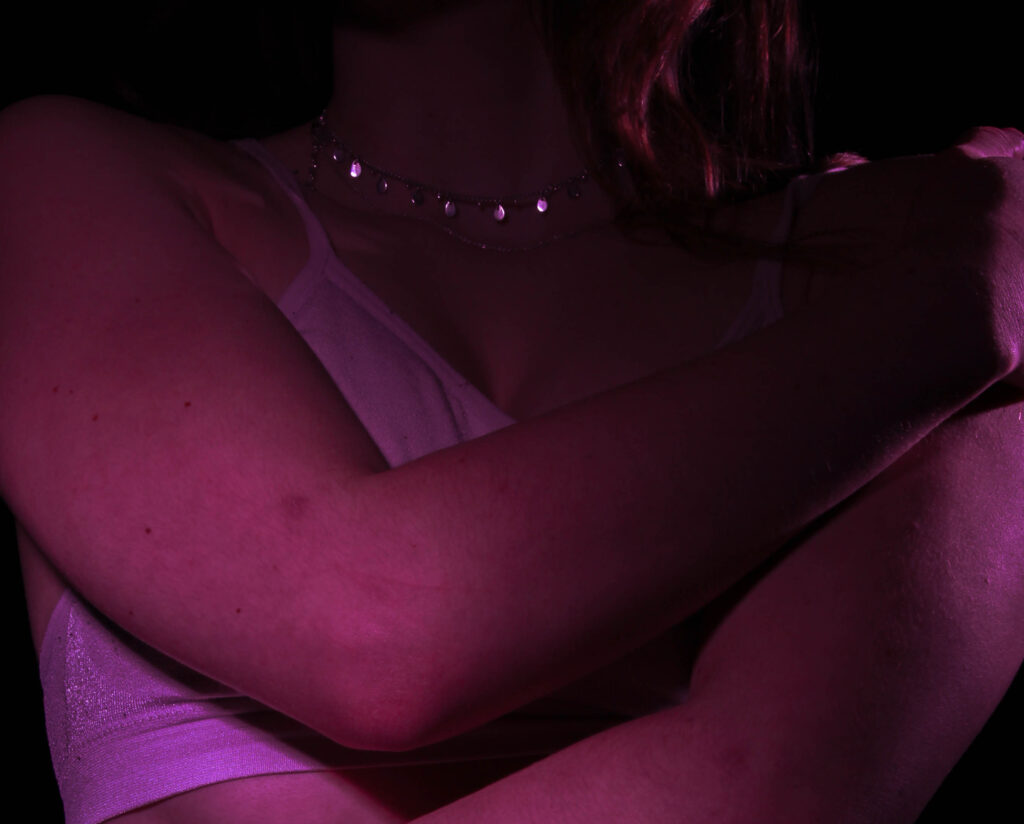

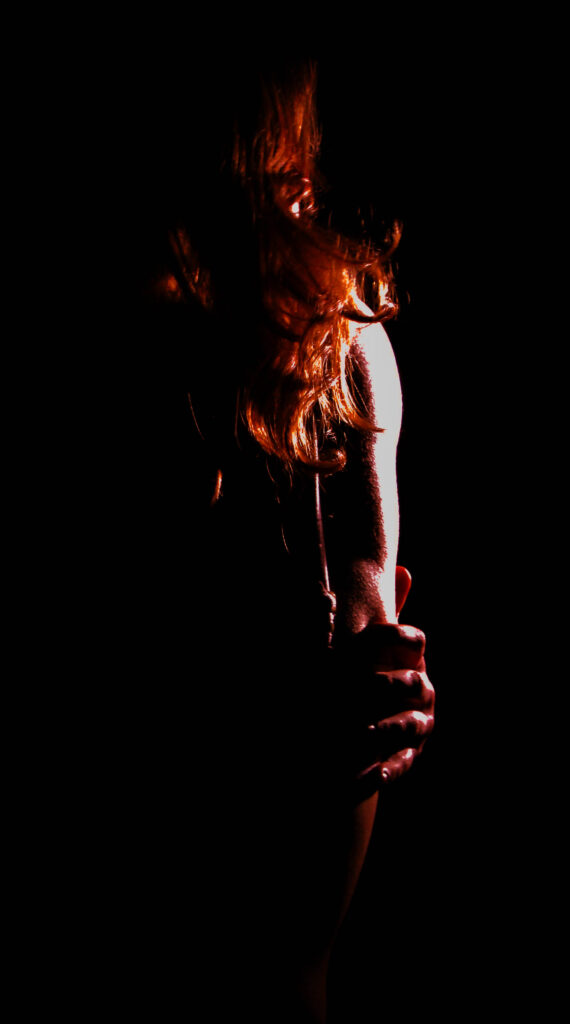
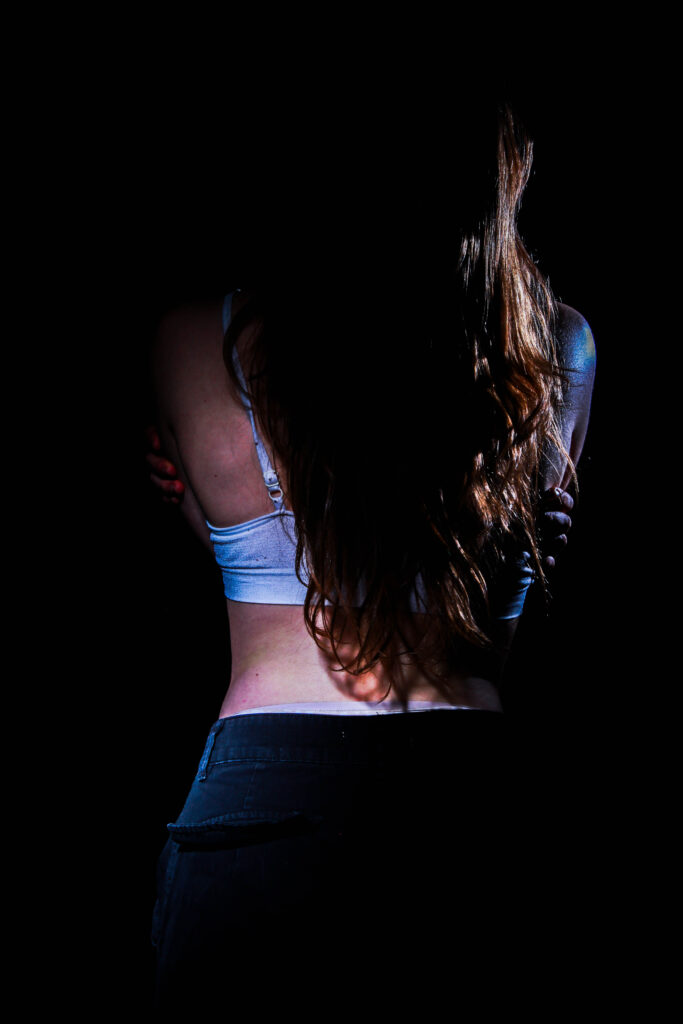
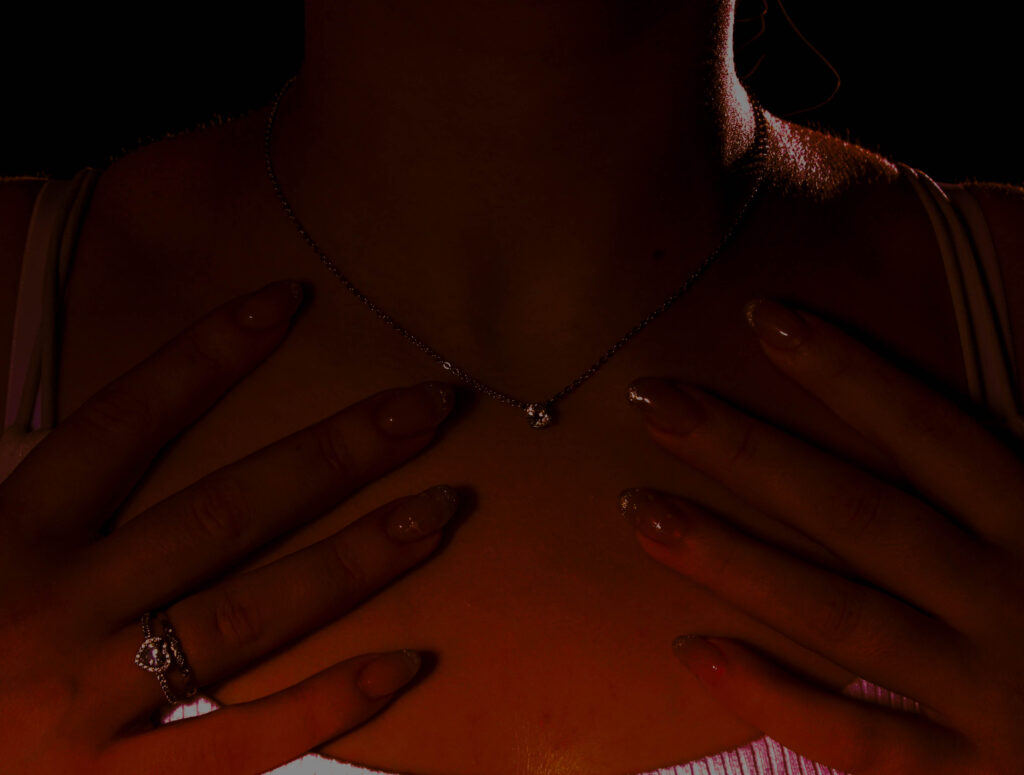
In my essay I looked into famously incredible photographic storytellers anna gaskell and duane michals and found a common lik throughout their compositions is the central character is often less anonymous and up to interpretation.
not all my images are faceless, however all of them are somewhat obscured by either, shadow, hands, hair or intentionally unfocused images , this creates a sense of mystery and allows the viewer to speculate. this fills in any gaps they may be left when trying to portray and pictorial and wordless narrative.
In the case of witches rock some of the images I selected were chose to create a sense of panic, witches were persecuted and feared, i wanted to portray the felling of being hunted and shunned by society.
i attempted this with tense images and false bindings, this is indented to create a feeling of anxiety within the viewer and worry for the witches in question, however in contrast with this the images i selected for the crooked fairy were to create an entirely different felling of fear and quierie, will this unknow creature harm our protagonist?
this is even more impactful because of the anonymity of the individual in the photos as viewers are encouraged to insert themselves into the character.
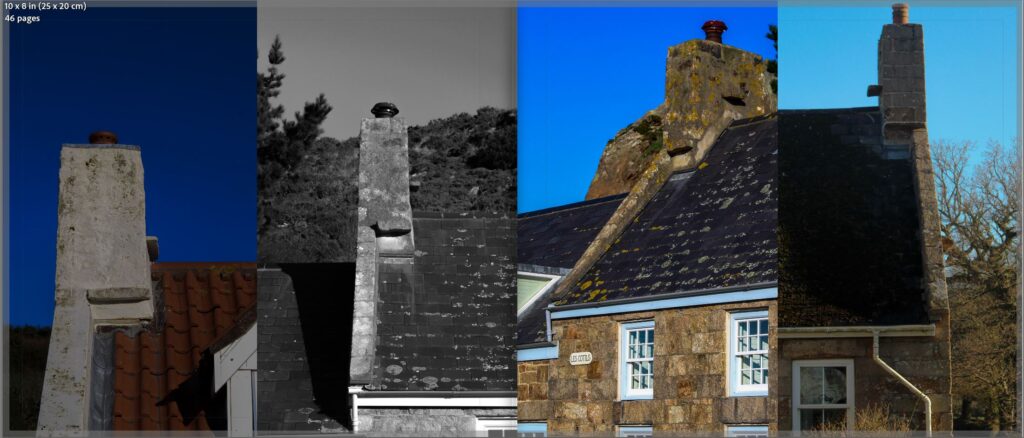
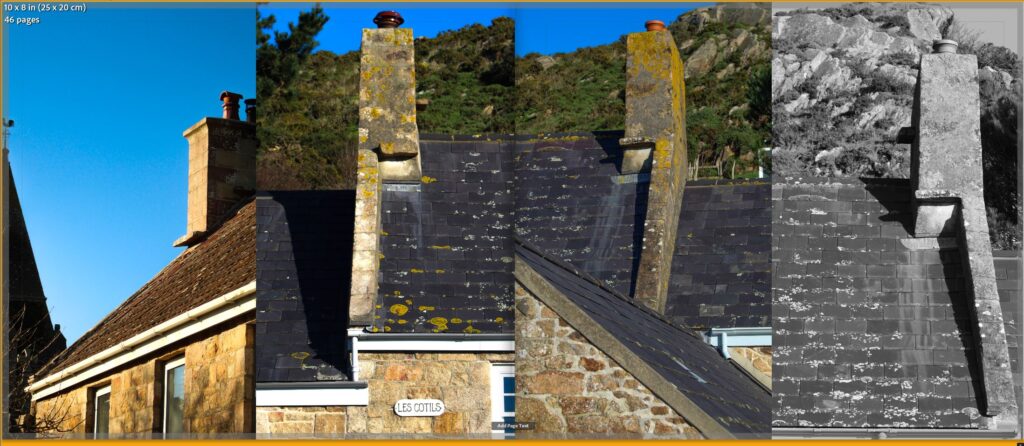
In order to create a juncture between the two stories I travelled around jersey photographing historical witches seats, when arranging these images i used a double page spread and aligned the houses so they carry on from each other, this is done to create a sense of community within the juncture and to illustrate just how prevalent these superstitions become in light of the folk tales and urban legends spreading across the channel islands, these beliefs created a community within the fearful so much in fact they had inbuilt infrastructure to prevent cursing and hexing from the local ‘witches’ on their journey to Sabbeth
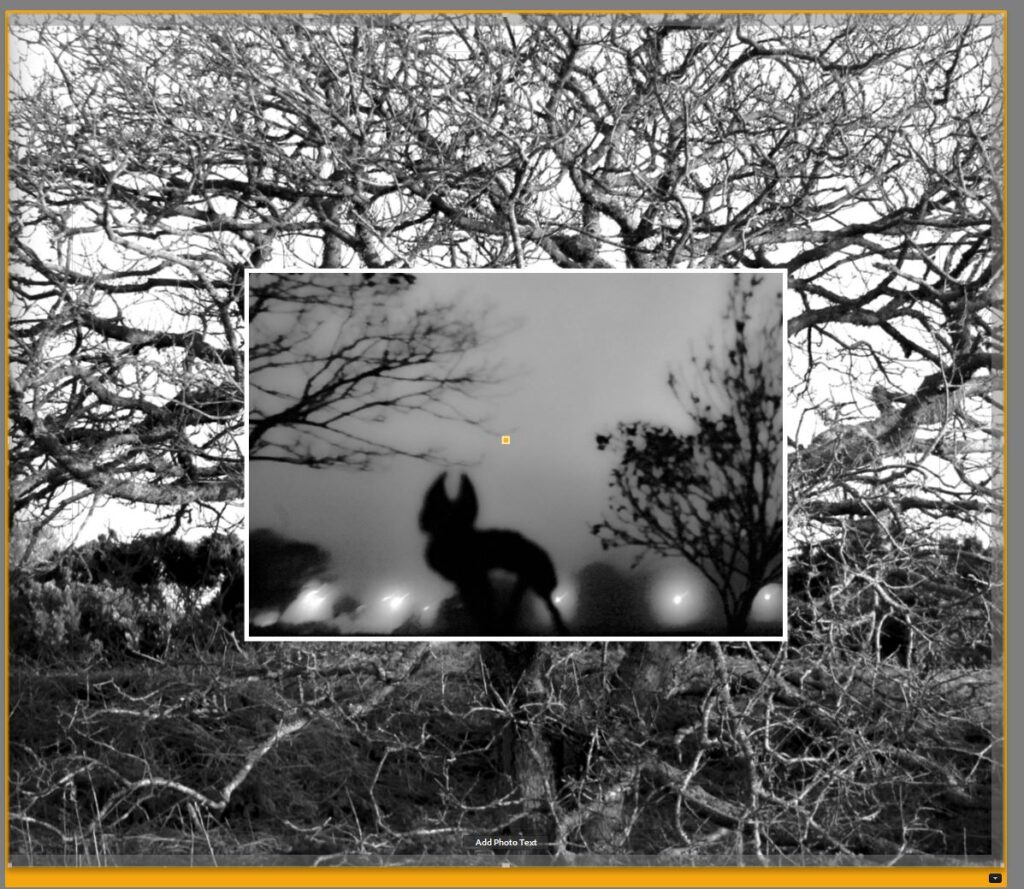
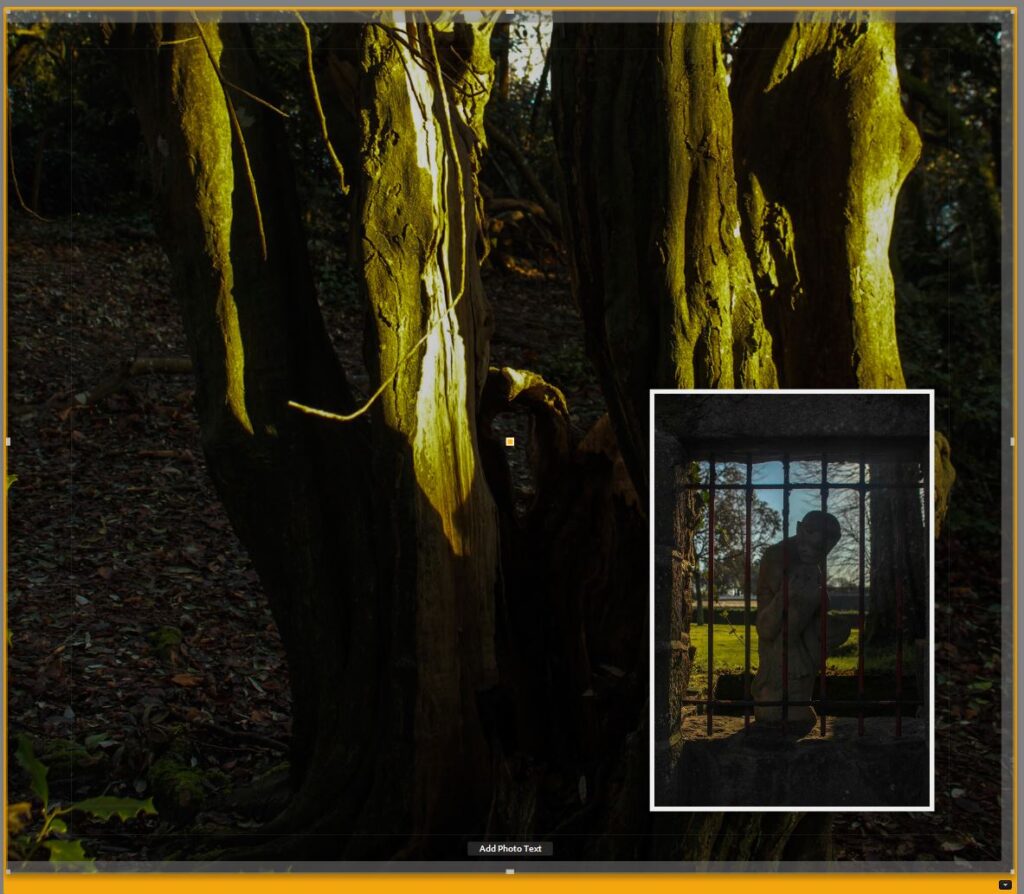
1. Write a book specification and describe in detail what your book will be about in terms of narrative, concept and design with reference to the same elements of bookmaking as above.
Narrative: What is your story?
Describe in:
Jersey Urban Legends
My photobook will be an attempt to retell and portray two Jersey urban legends, the Crooked fairy and Witches Rock.
I am attempting to capture the essence of 2 jersey folk law legends called the crooked fairy and witches rock, I will be doing this through individually selected images chosen to create an ambiguous and eerie atmosphere that coveys an open to interpretation narrative of my chosen legends.
Design: Consider the following
landscape , medium size
What Hides Within The Woods Of Jersey – a retelling of two chilling legends
subheadings
The CROOKED Fairy
The WITCHES Rock
two narratives conjoined by architectural images
pen illustrations separating stories
small description of witches seats and their history
essay at the end
What is a witches seat ?
Witches’ stones (in Jèrriais: pièrres dé chorchièrs) are flat stones jutting from chimneys in the islands of Jersey and Guernsey.[1]
According to folklore in the Channel Islands, these small ledges were used by witches to rest on as they fly to their sabbats. Householders would provide these platforms to appease witches and avoid their ill favour.
Traditional vernacular architecture in Jersey is in granite and such witches’ stones can be seen protruding from many older houses. The real origin of this architectural feature is to protect thatched roofs from seeping water running down the sides of the chimney stack. Thatched roofs being thicker than tiled roofs, the jutting stones would sit snugly on the thatch – as can be seen on the few remaining thatched roofs in Jersey. When thatch began to be generally replaced by pantiles in the 18th century, and later by slates, the witches’ stones were left protruding prominently from the chimney stack. This either gave rise to the belief in witches’ resting places, or reinforced an existing belief. Fear of witches was widespread in country areas well into the 20th century in Jersey.

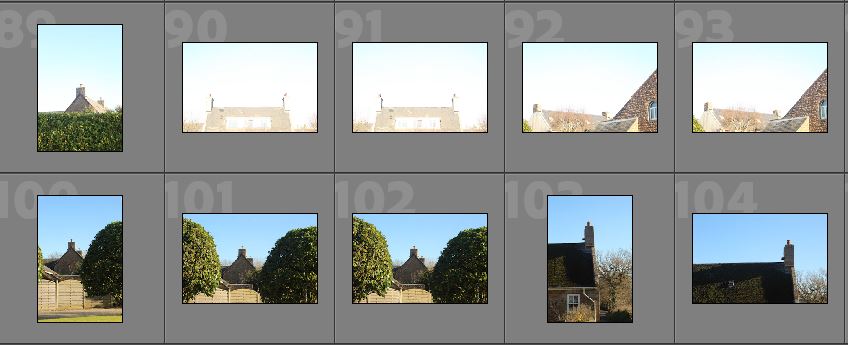
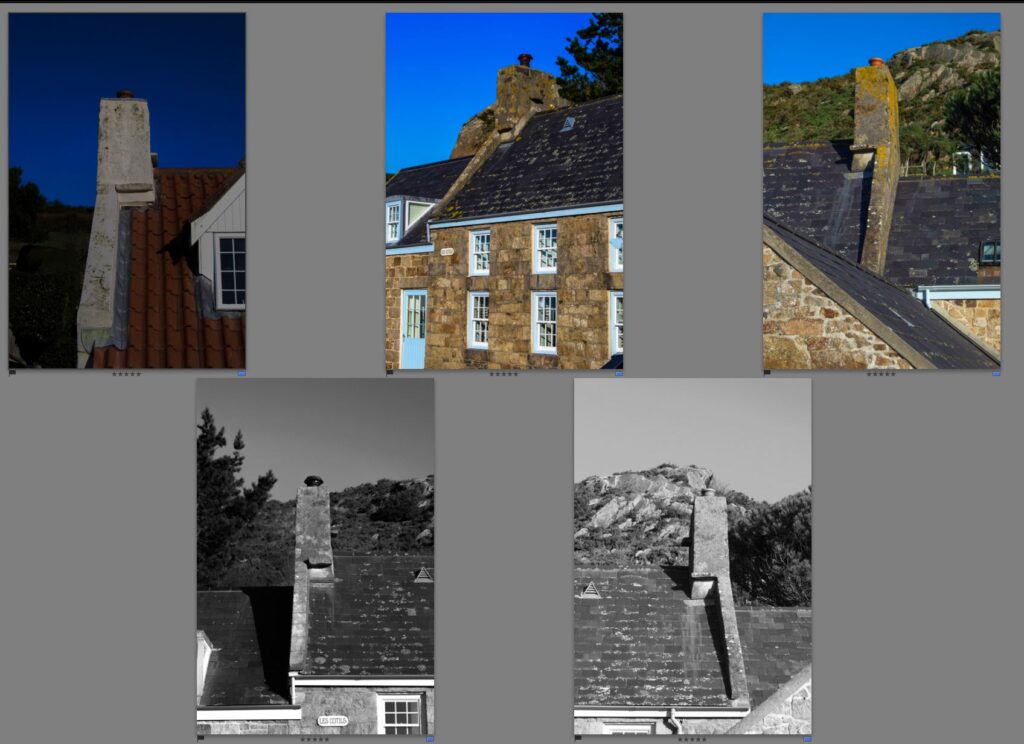



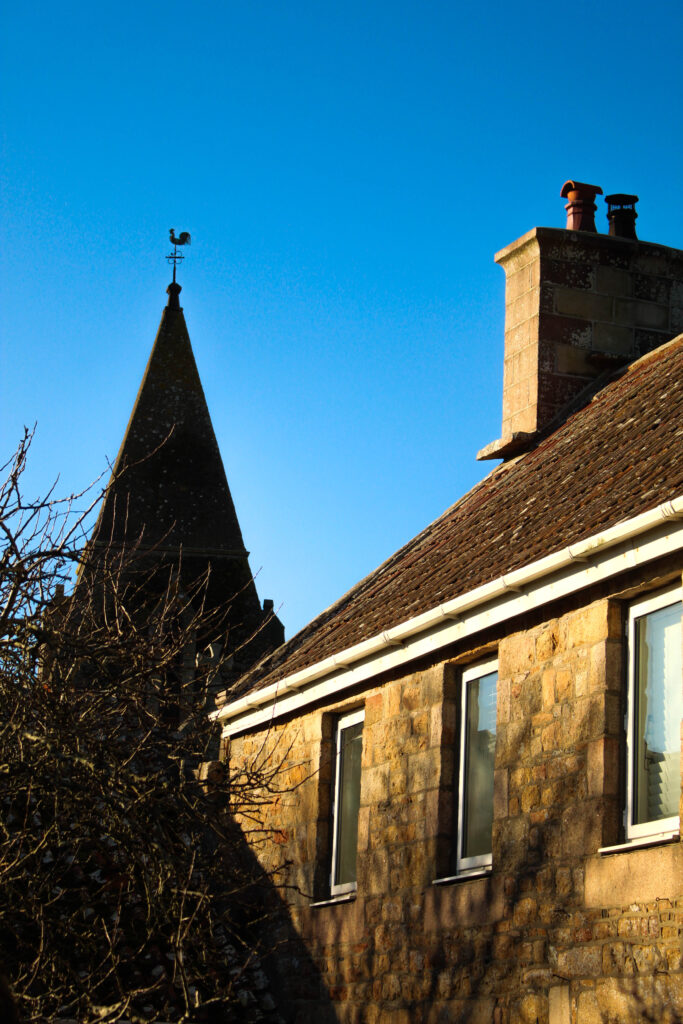
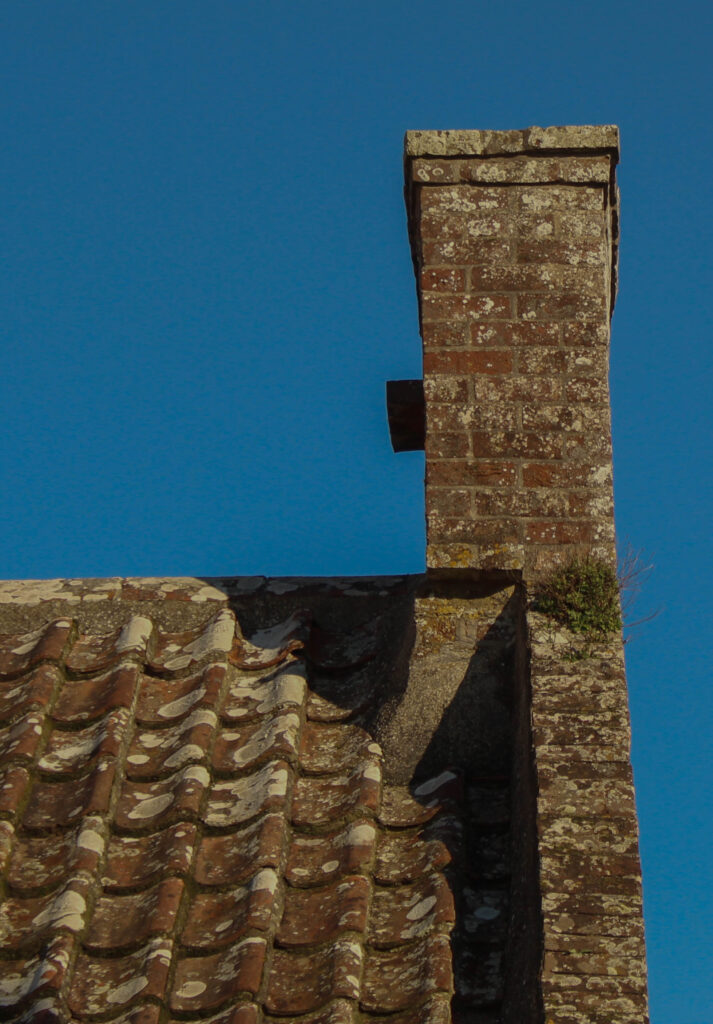
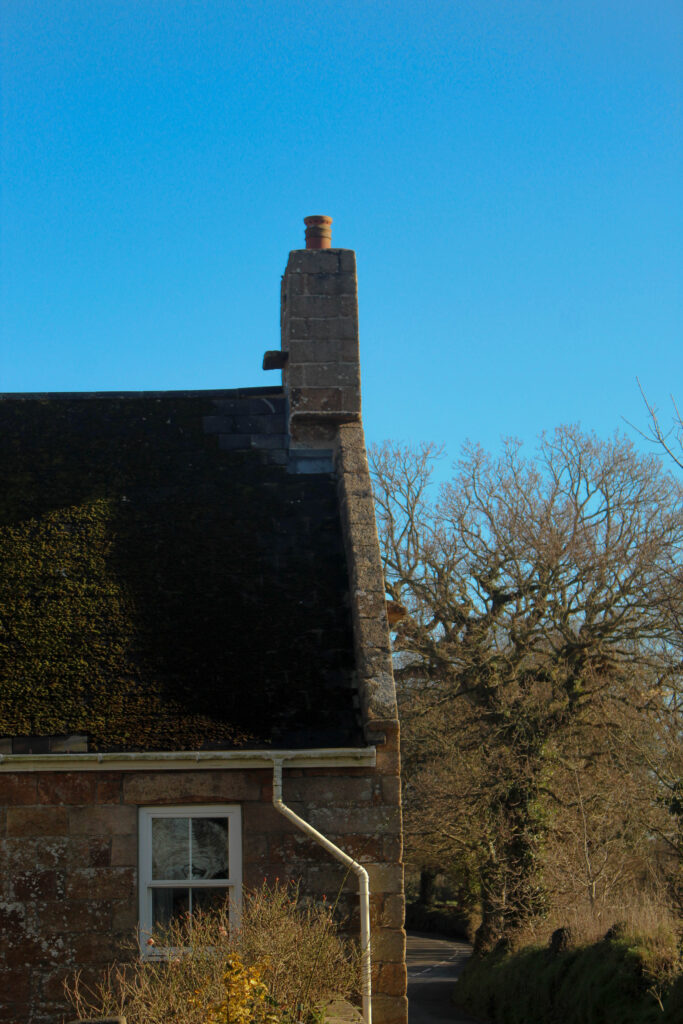
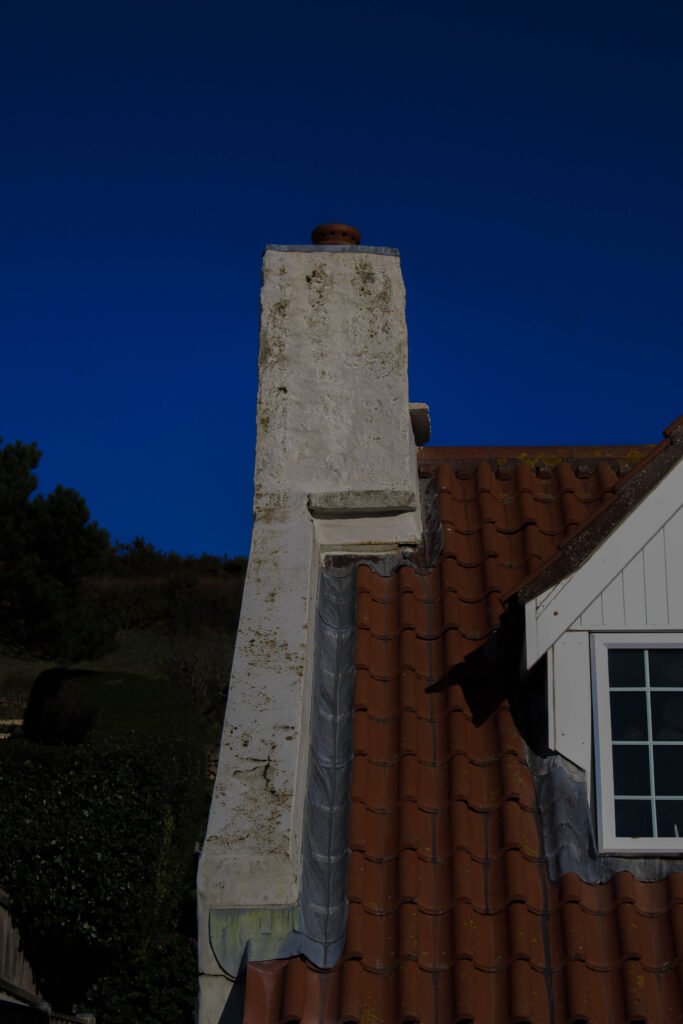
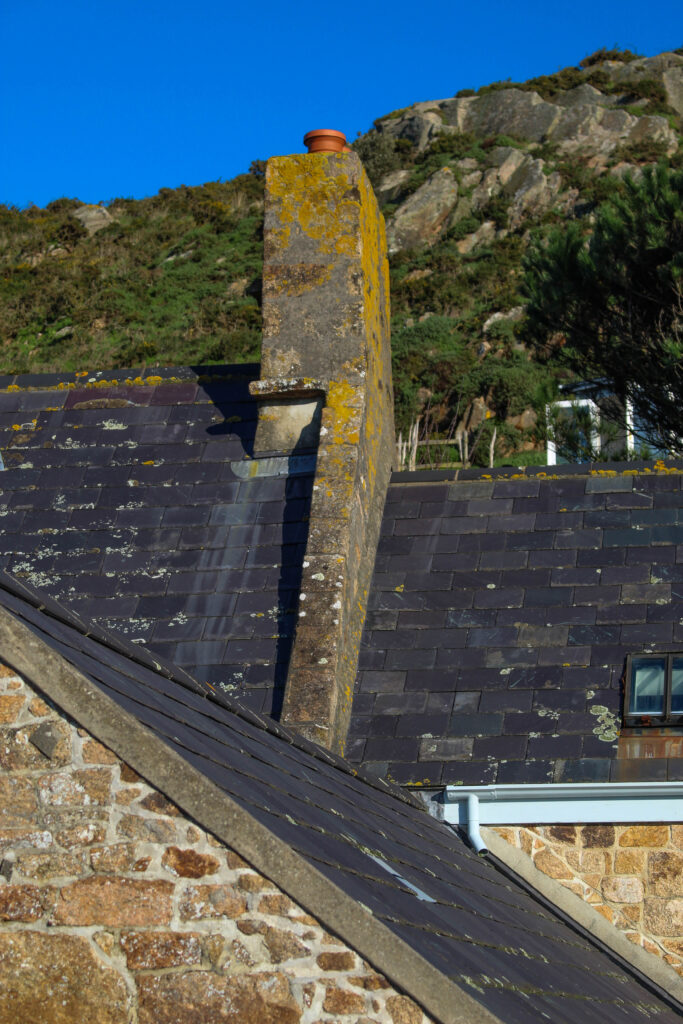
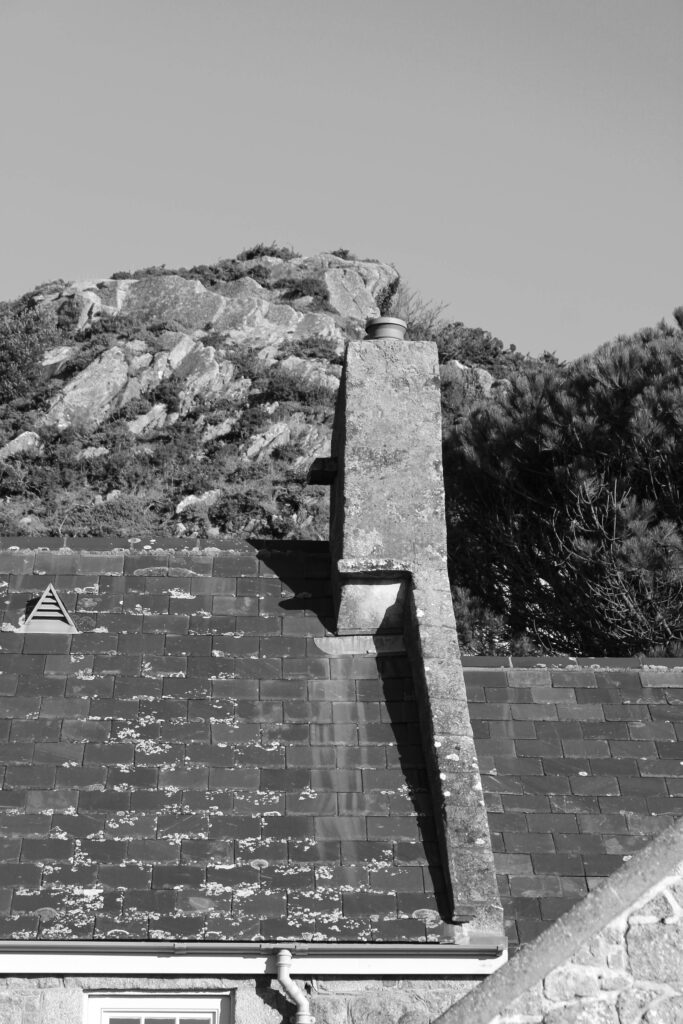


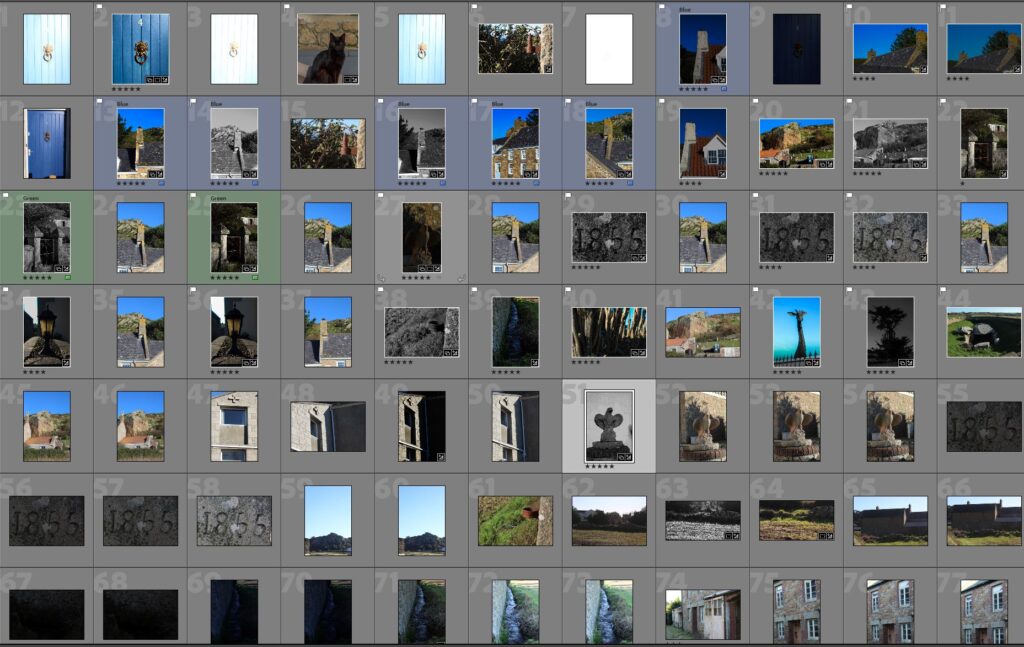
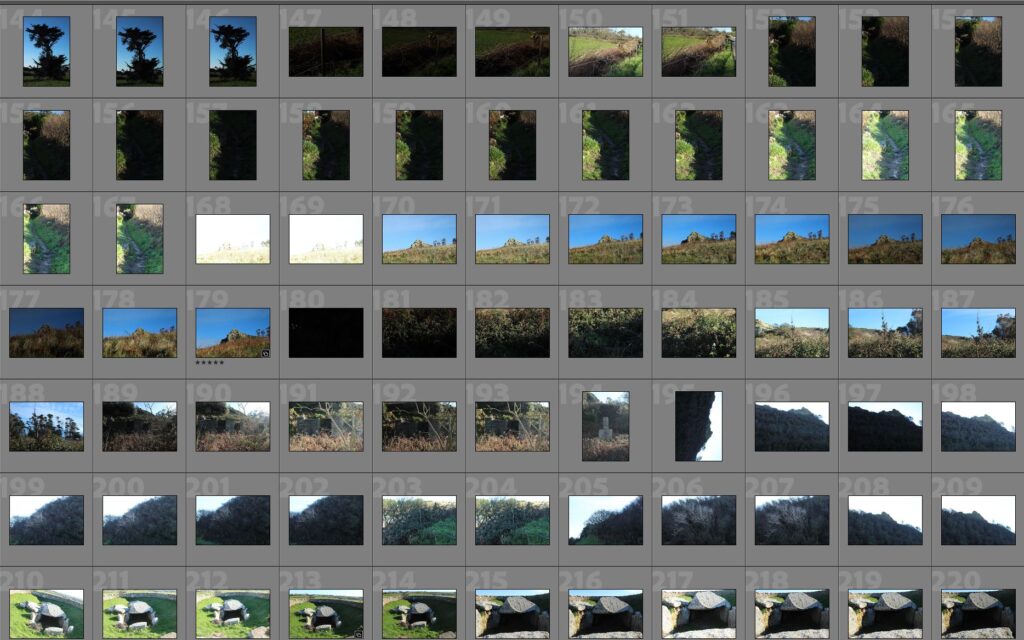



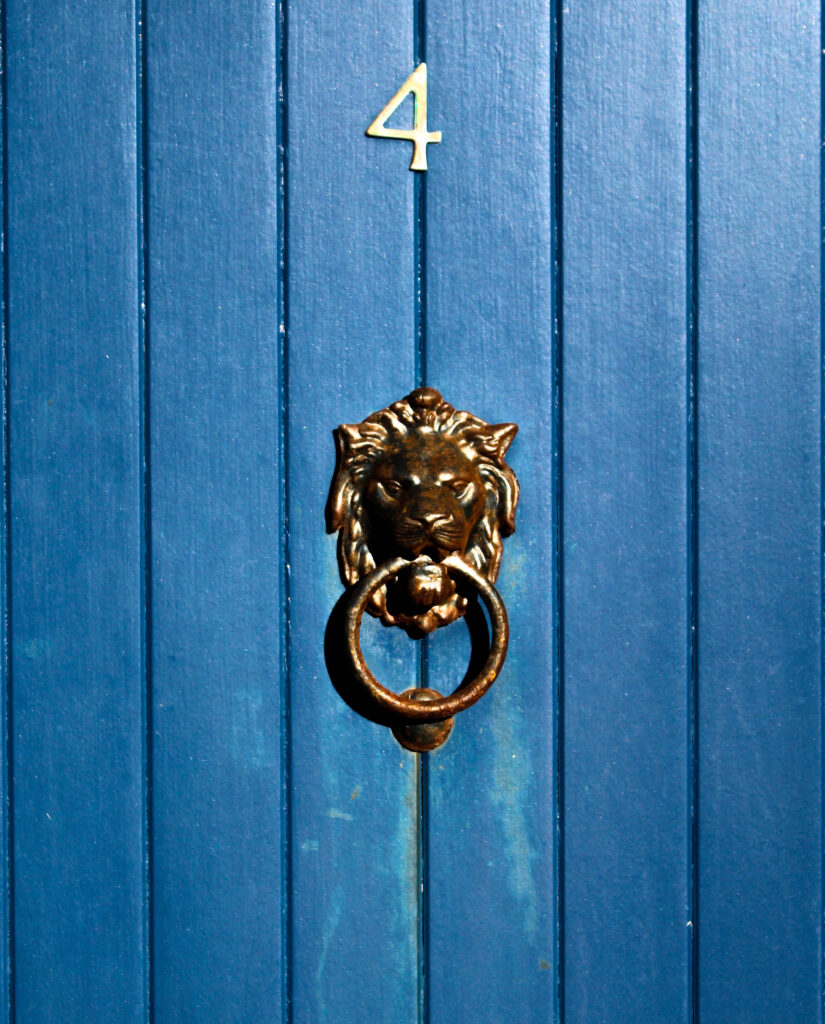
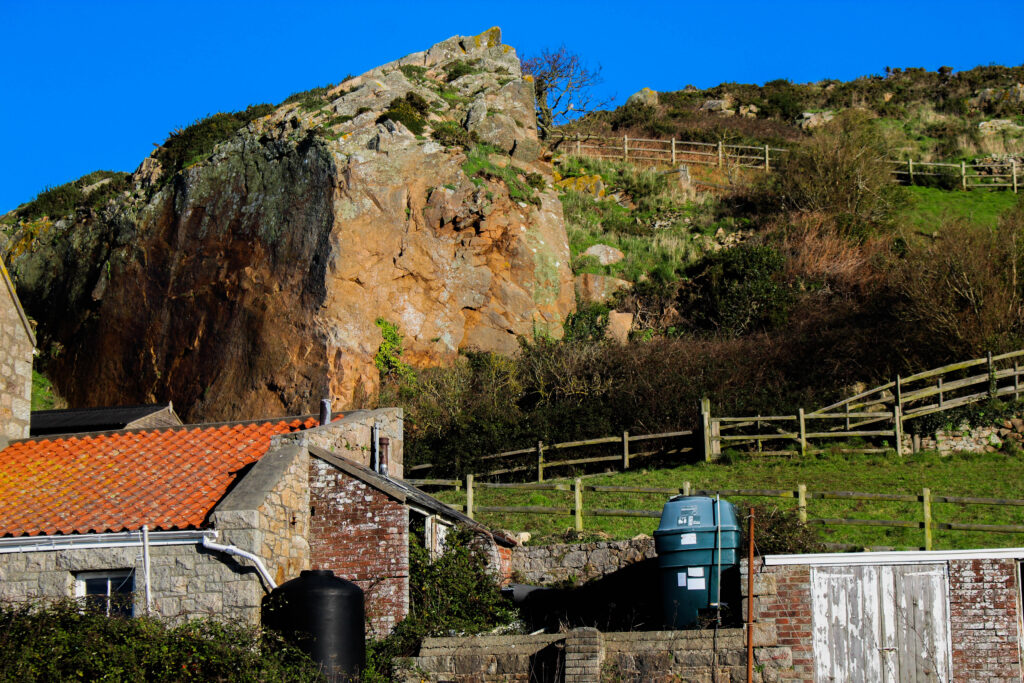
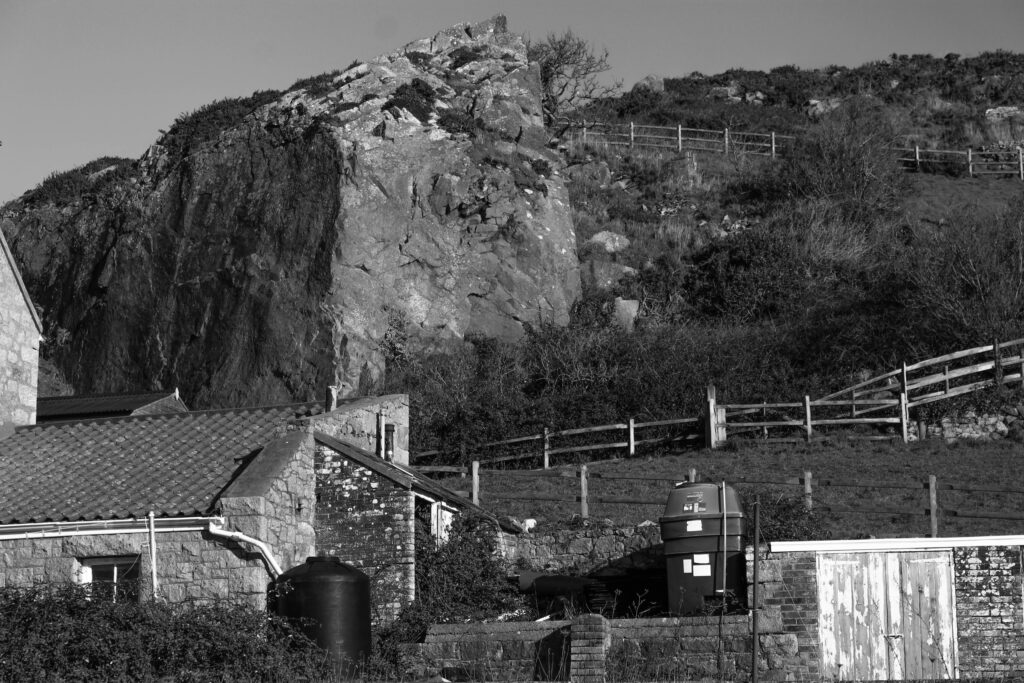
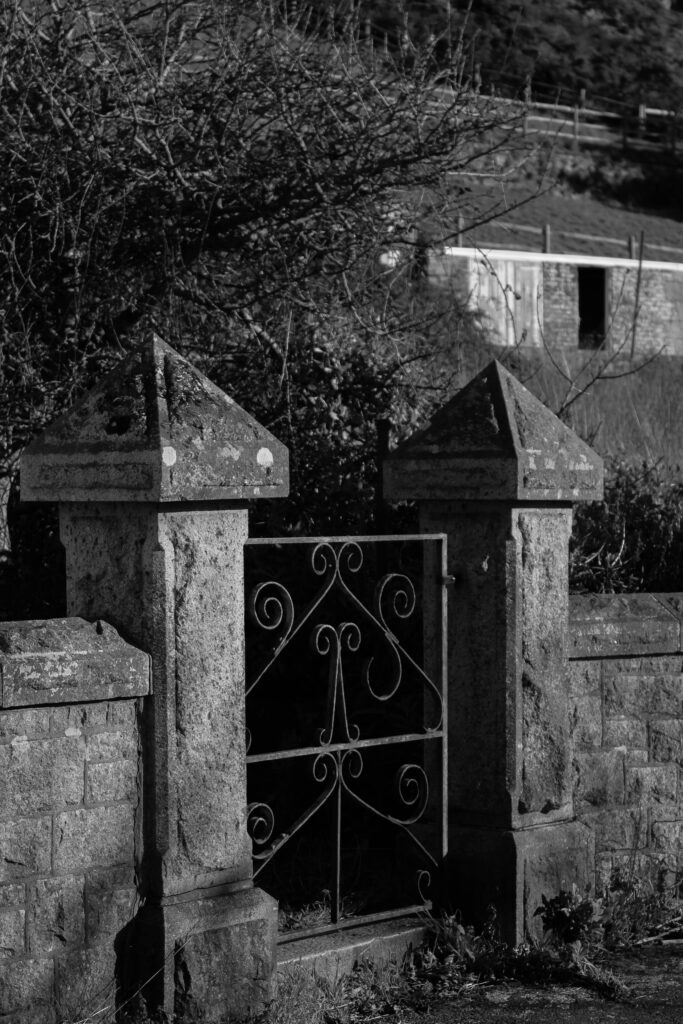



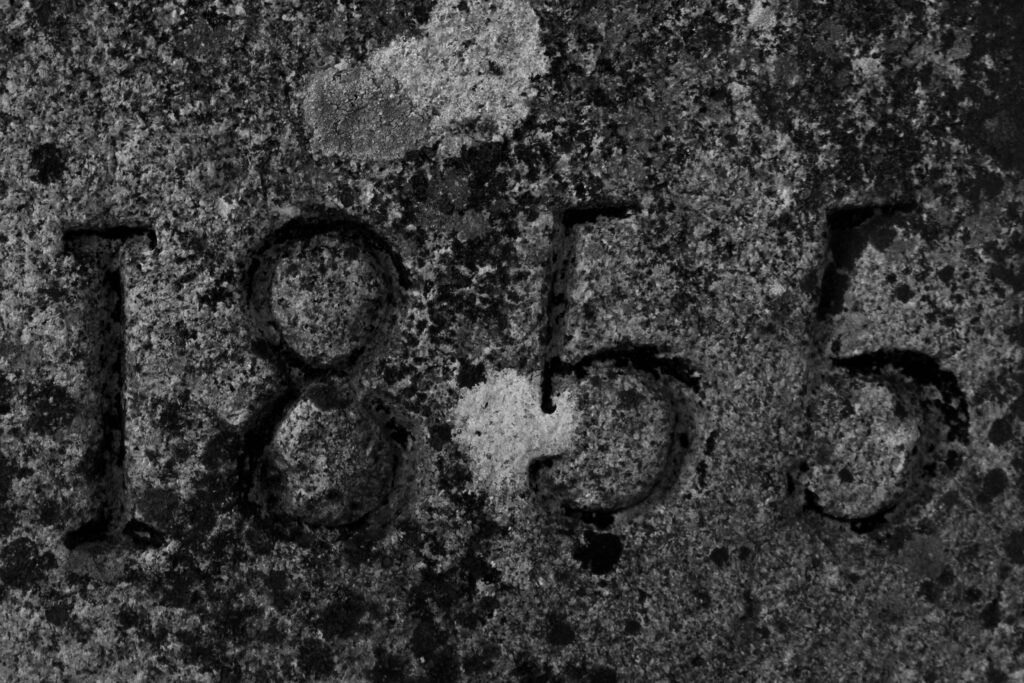


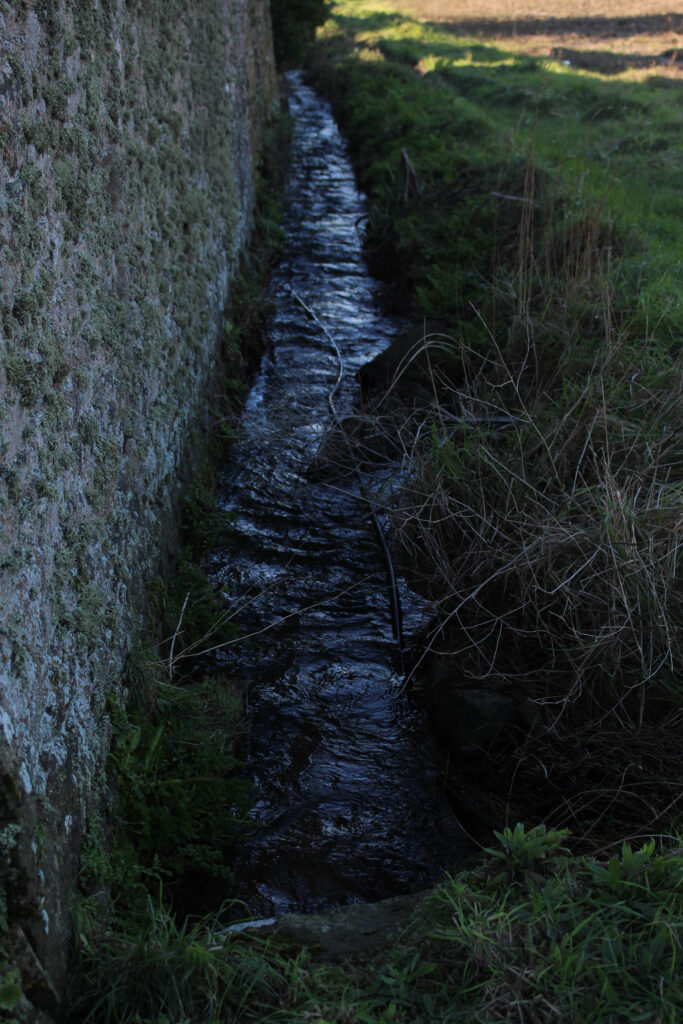
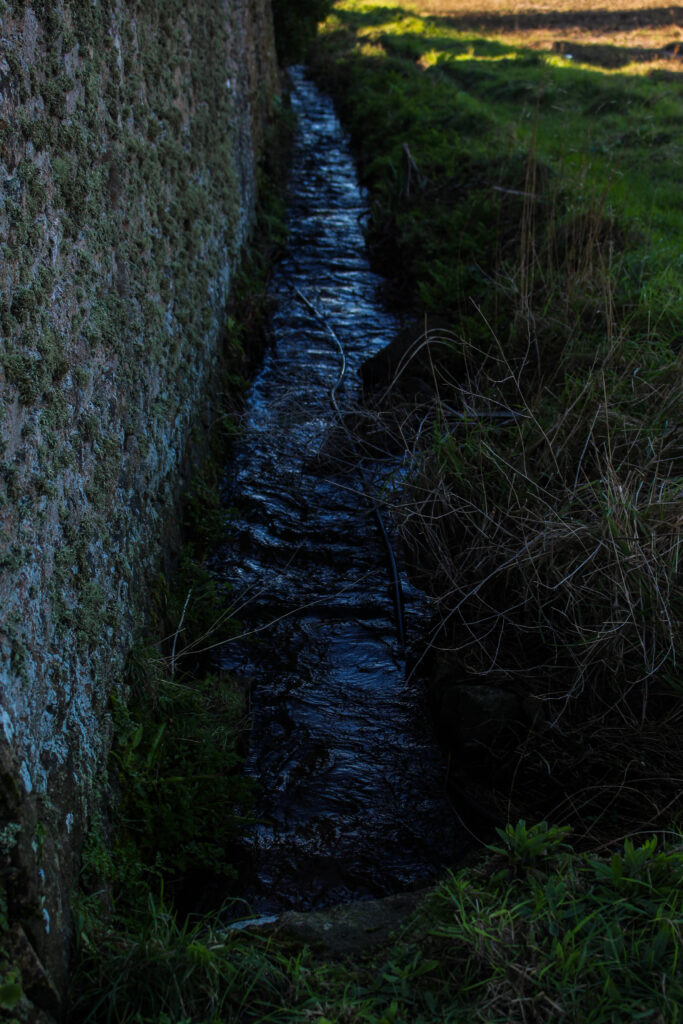
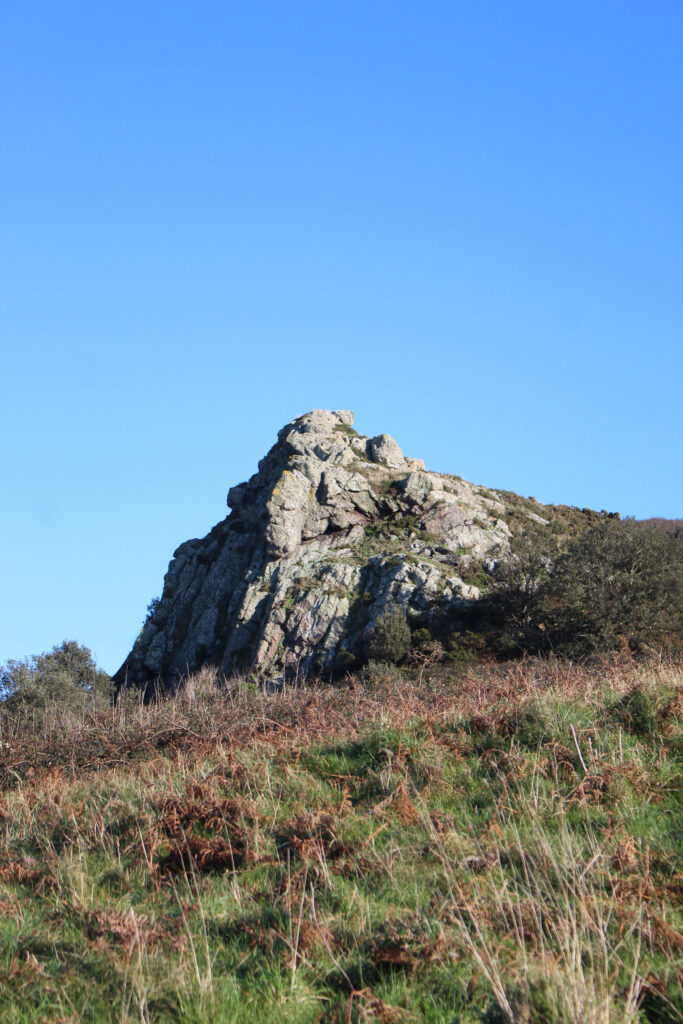
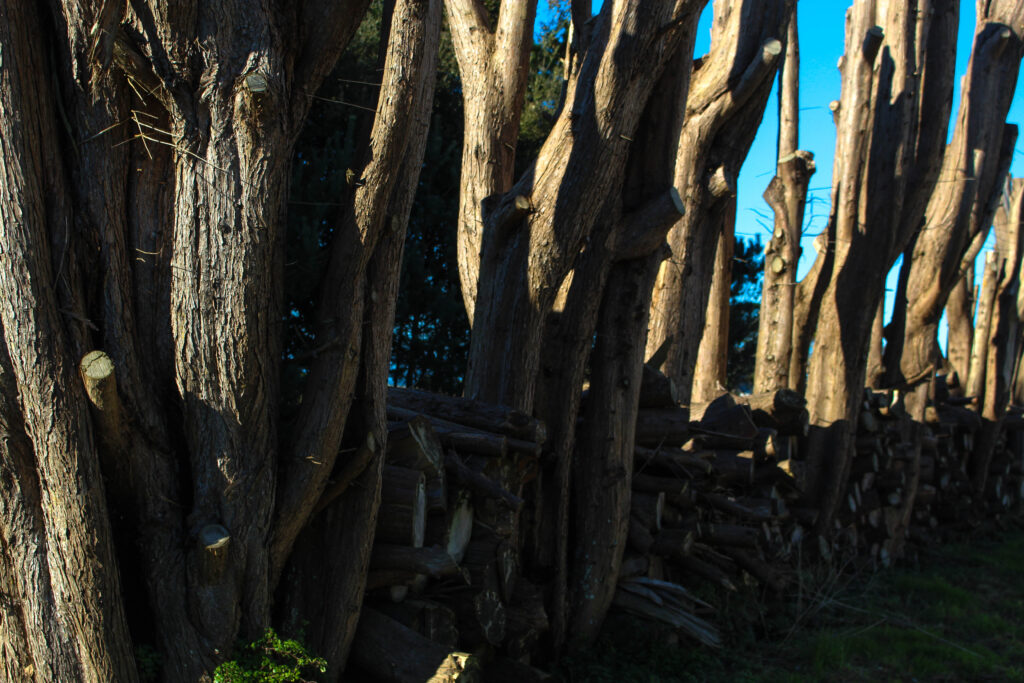
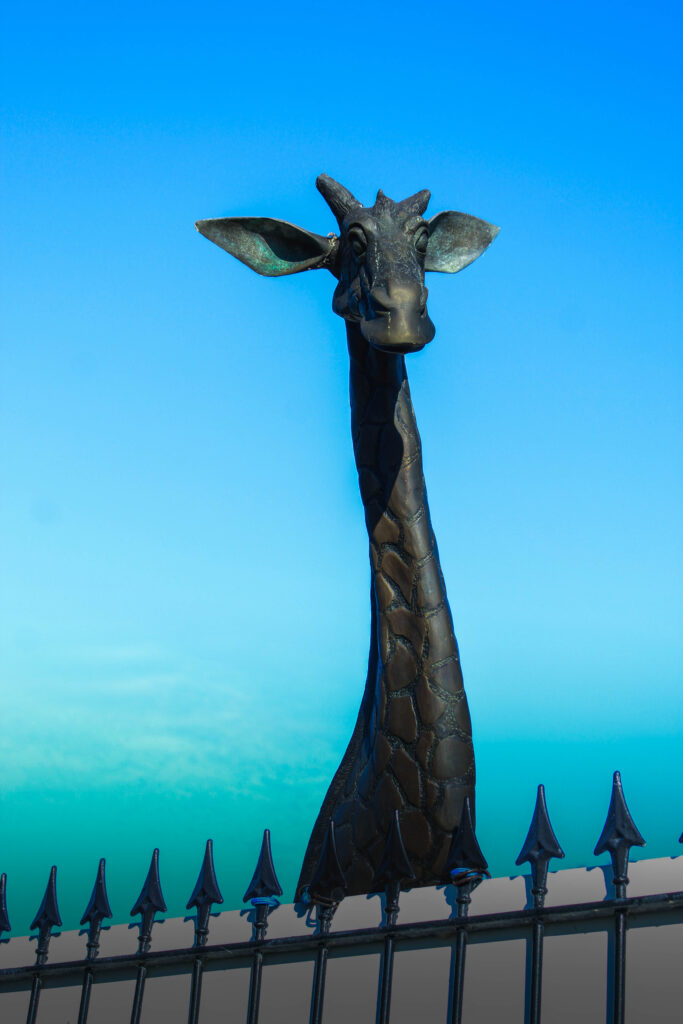
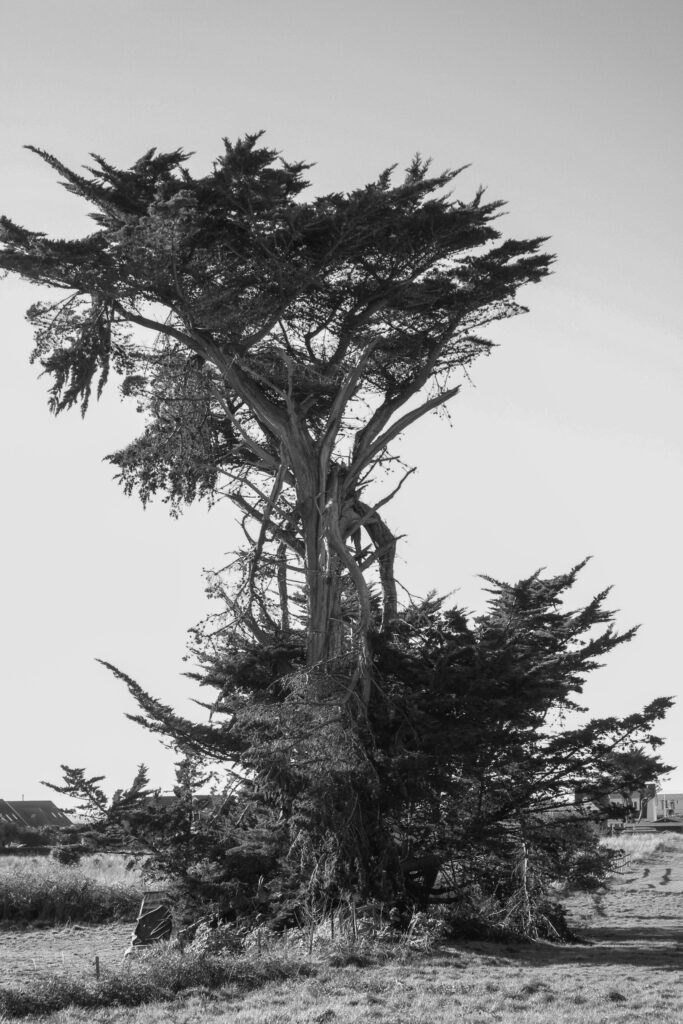
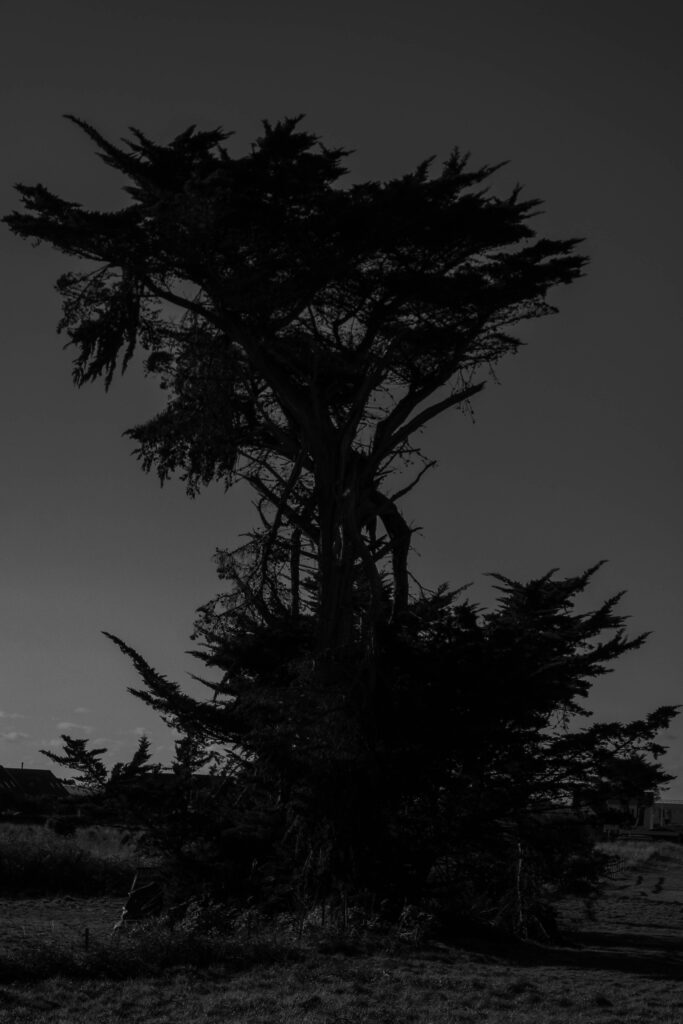
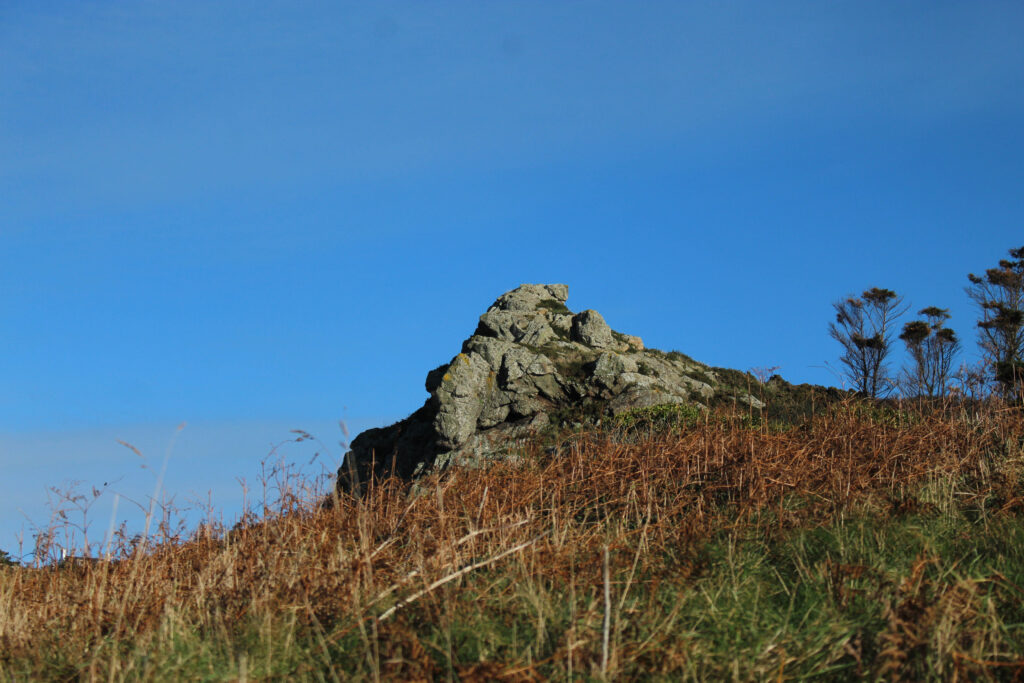

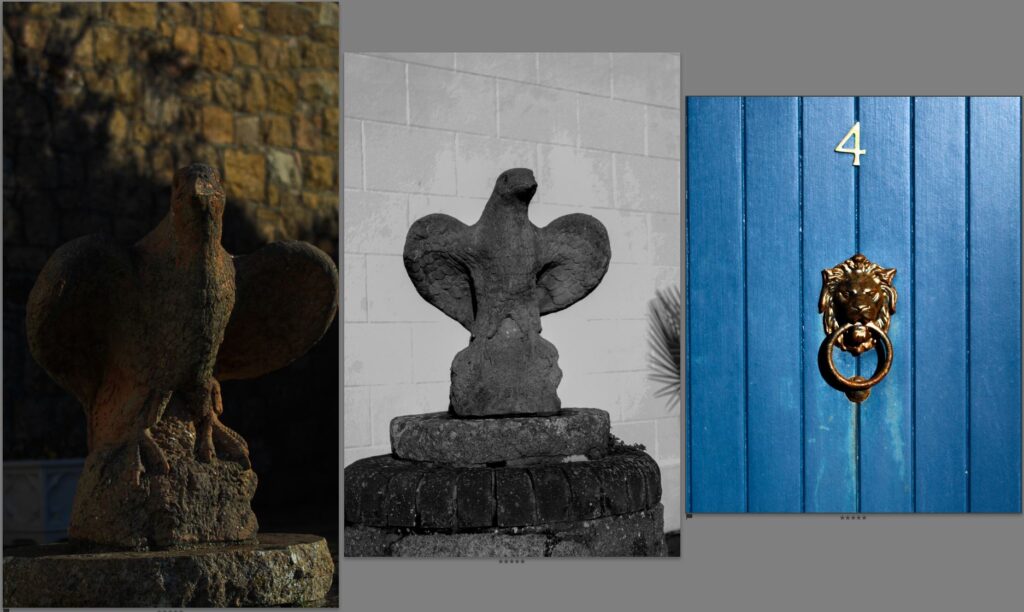

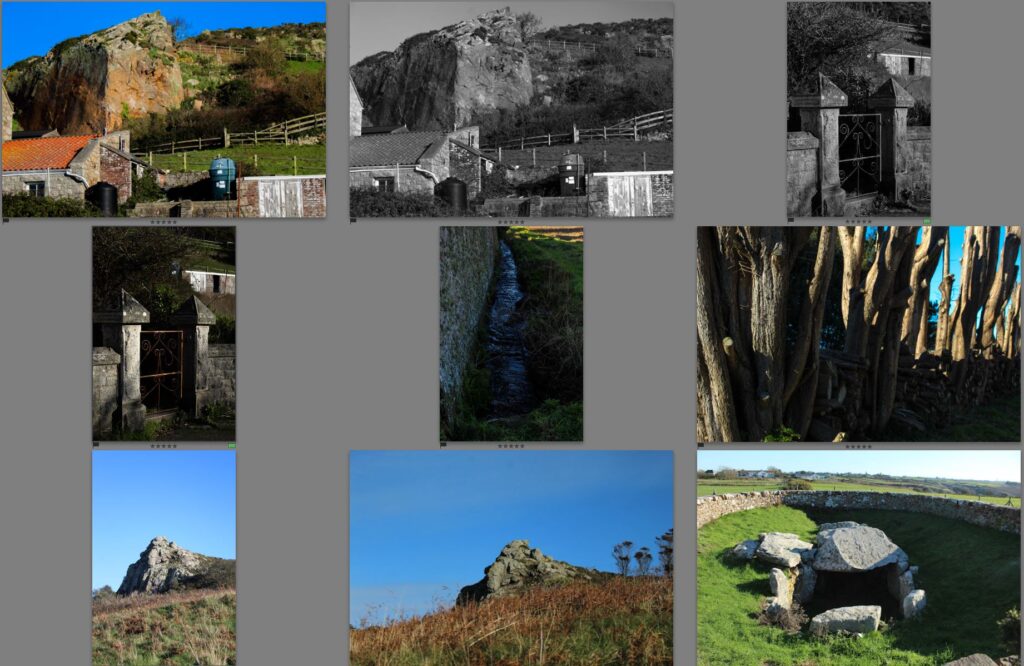
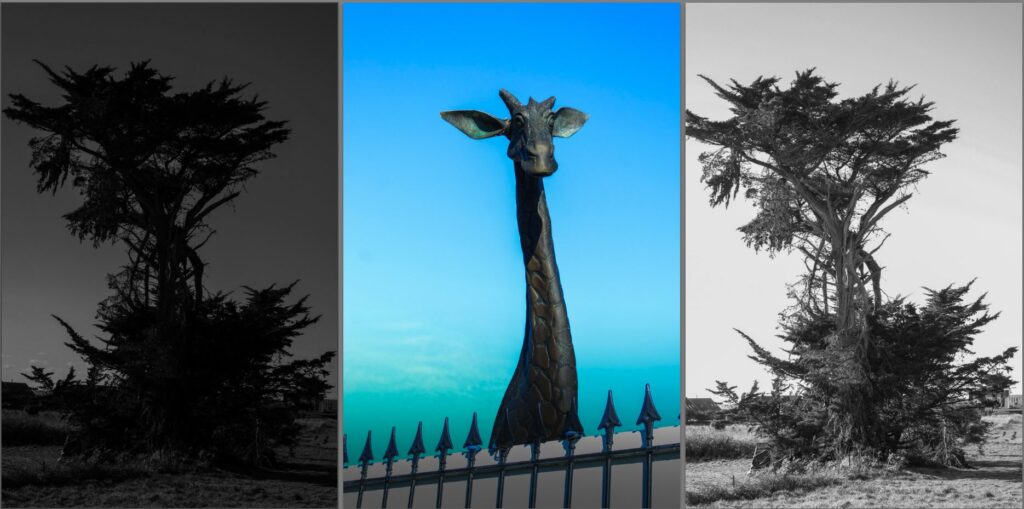
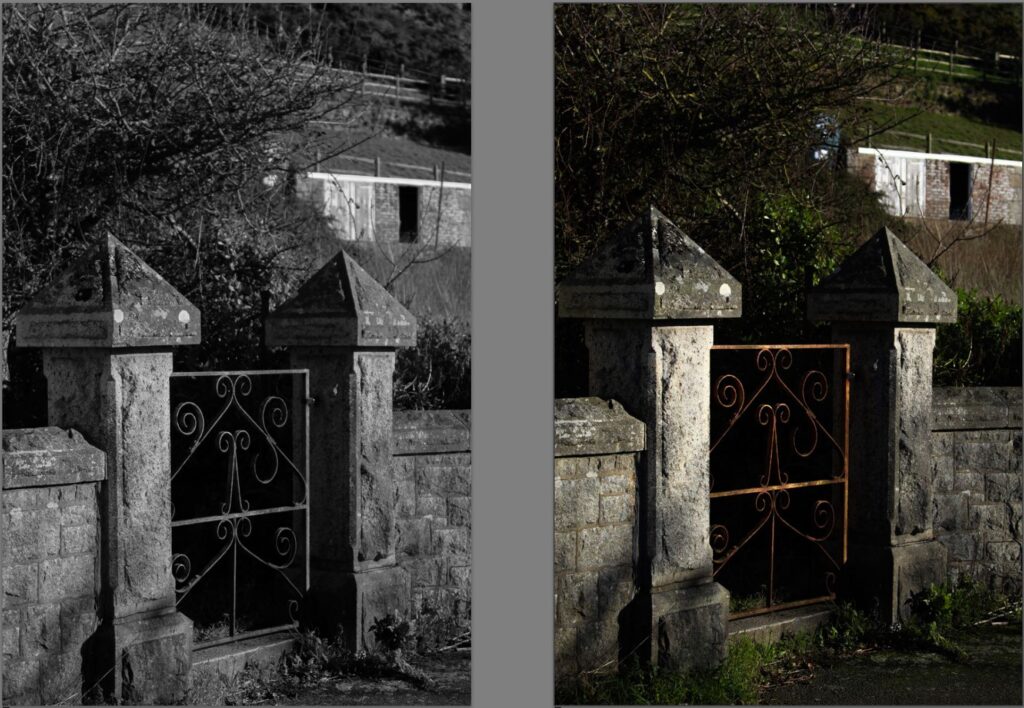












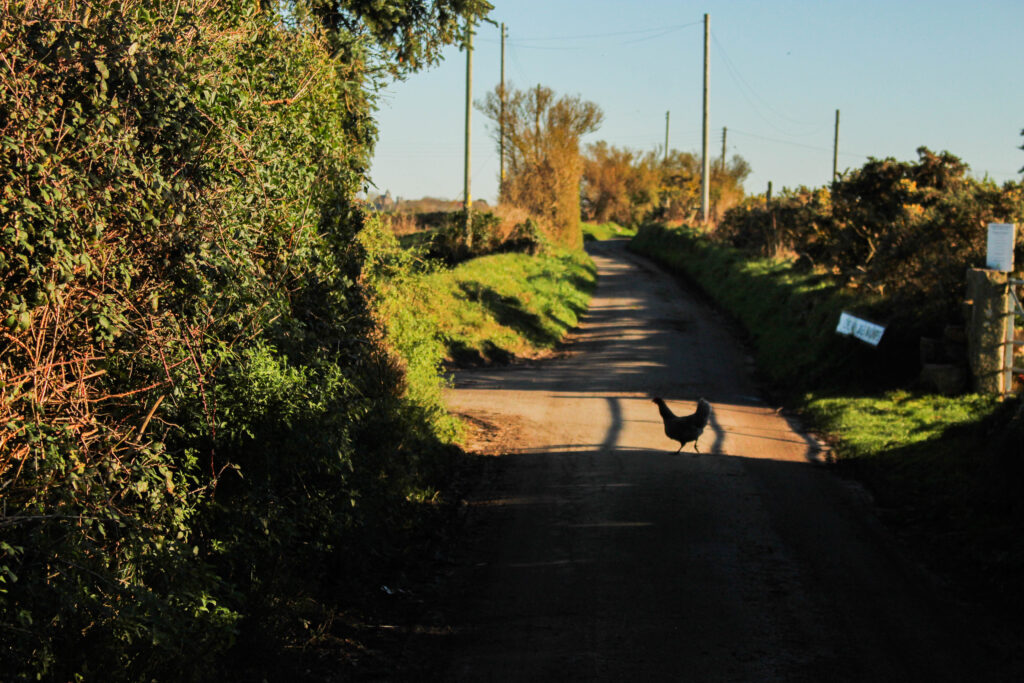
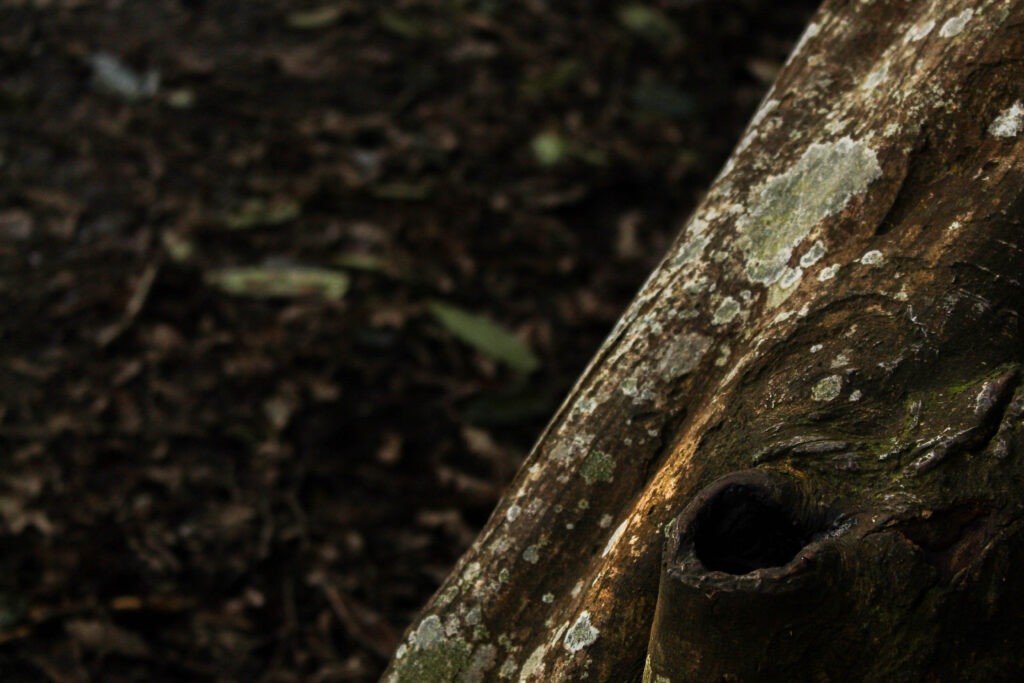
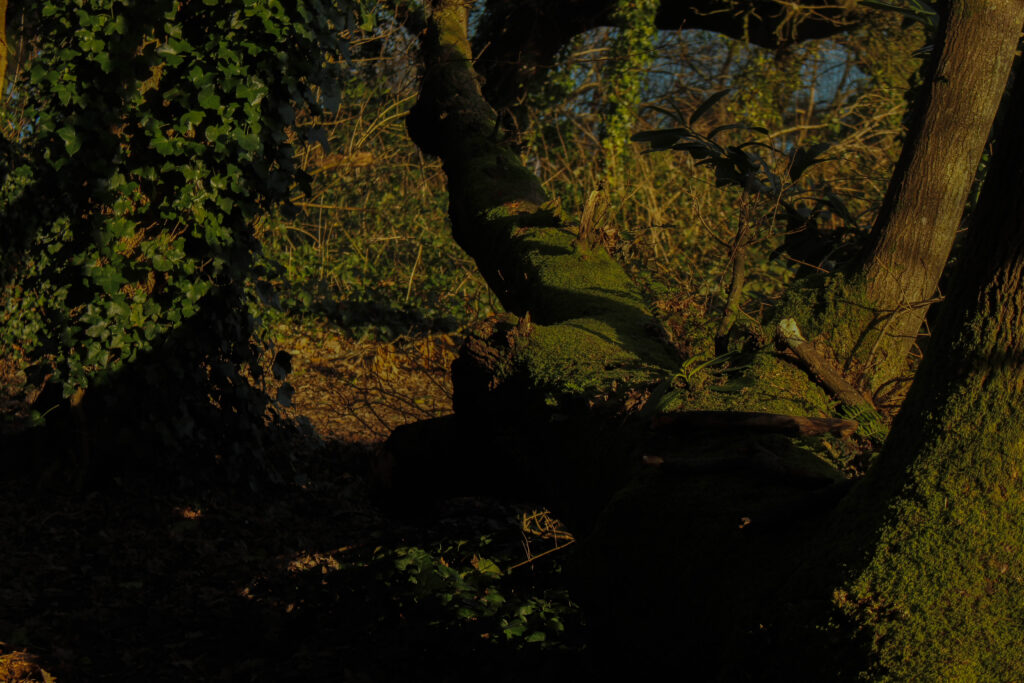
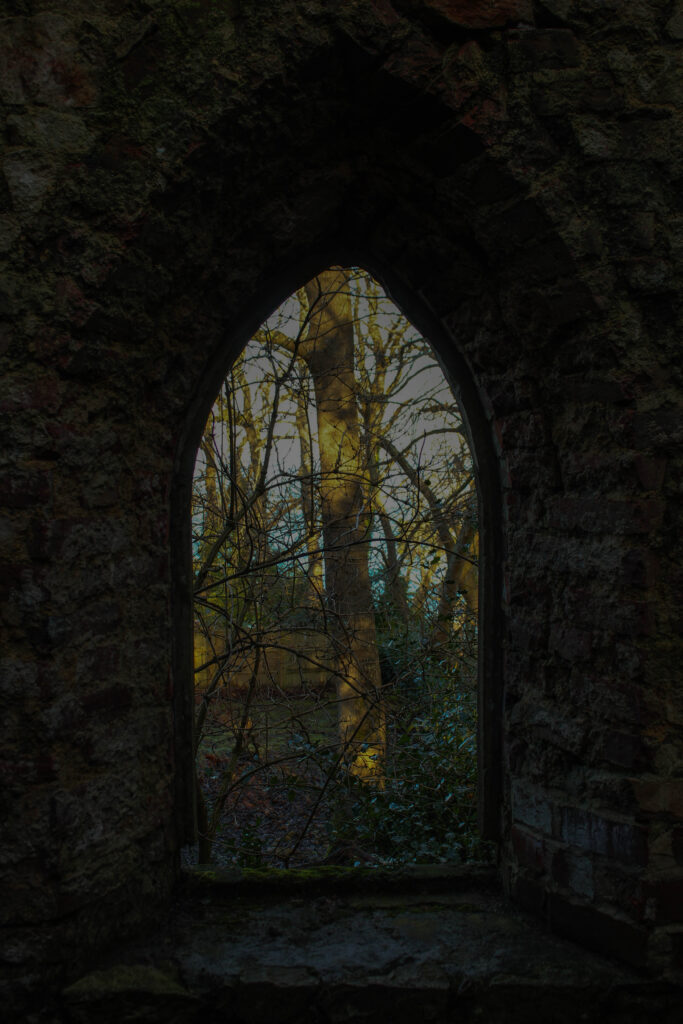
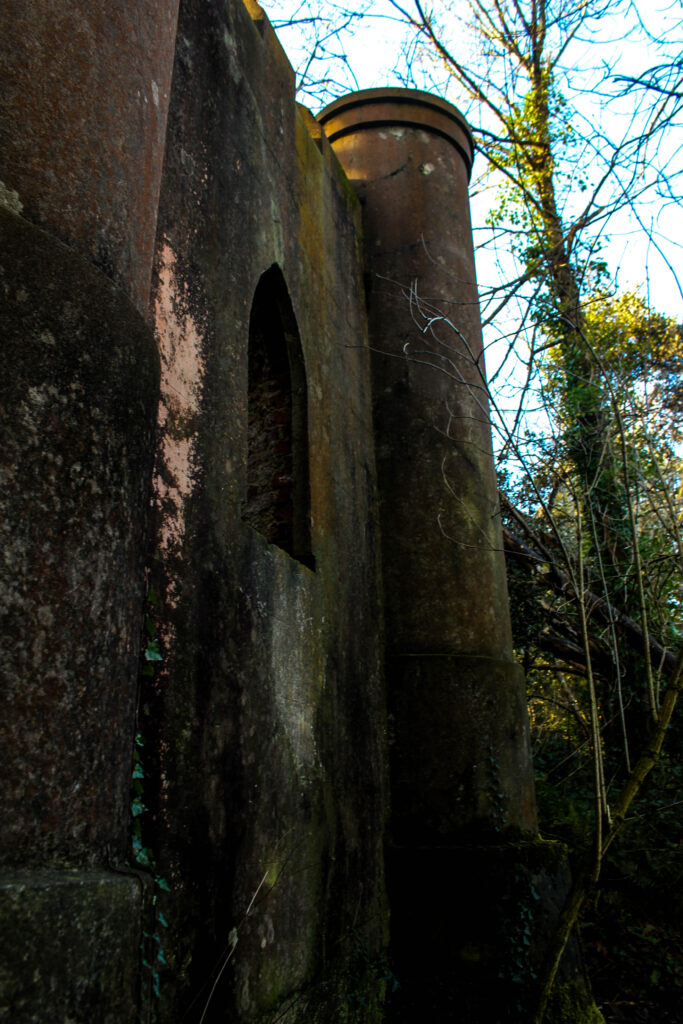
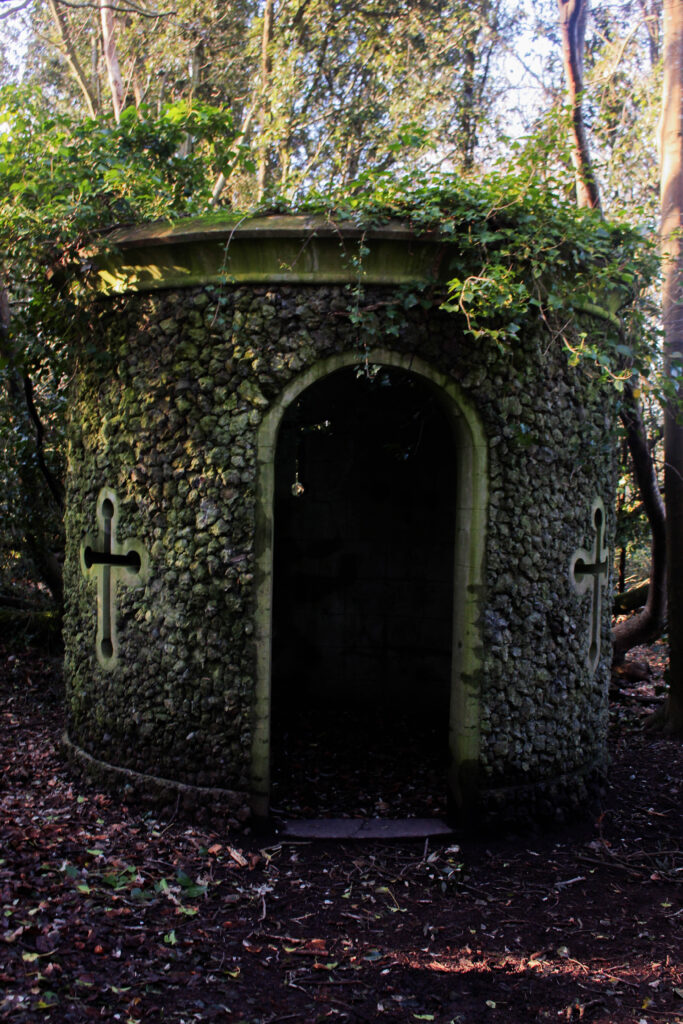

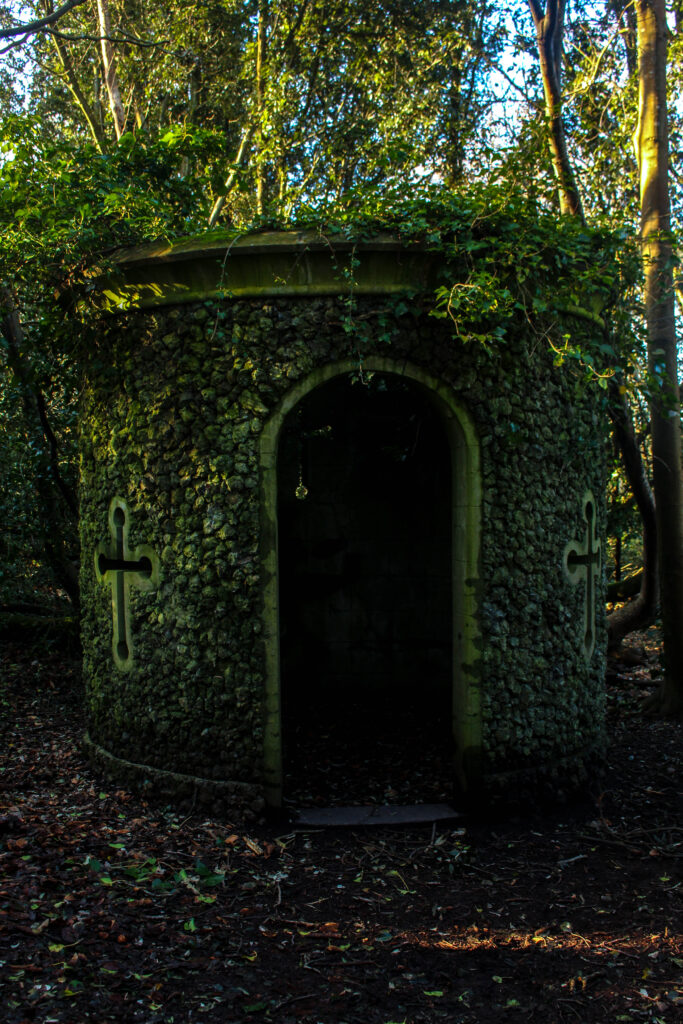
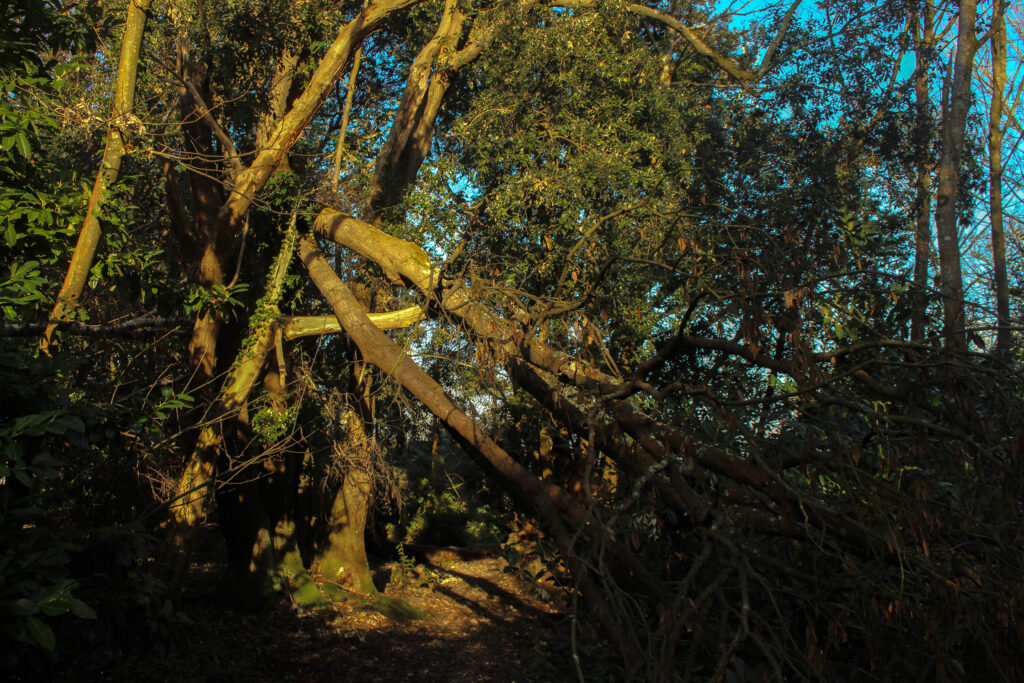
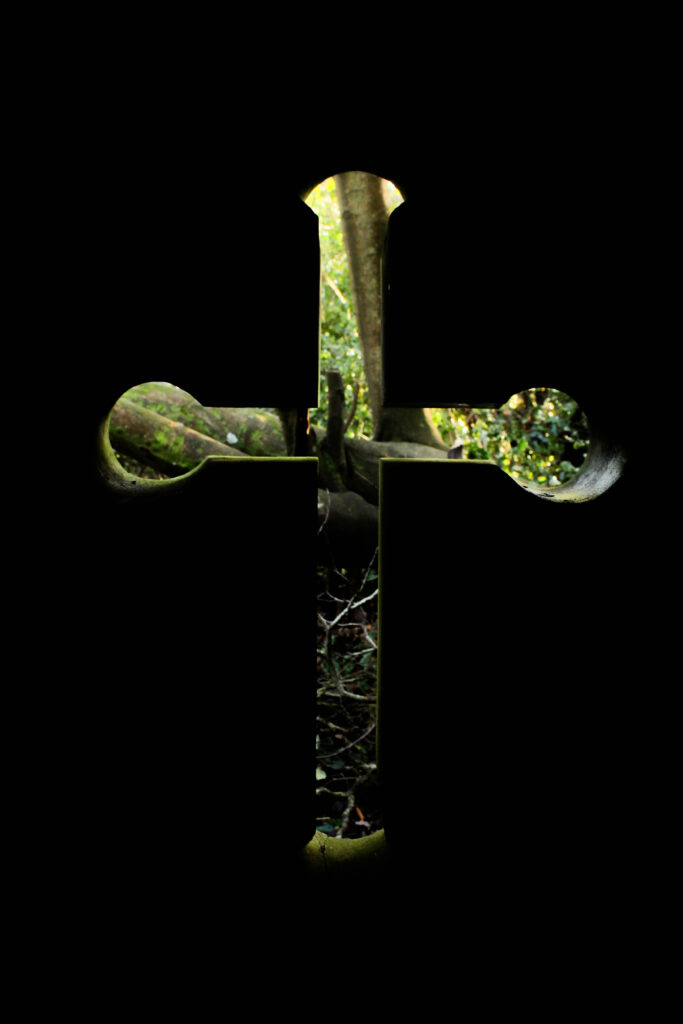
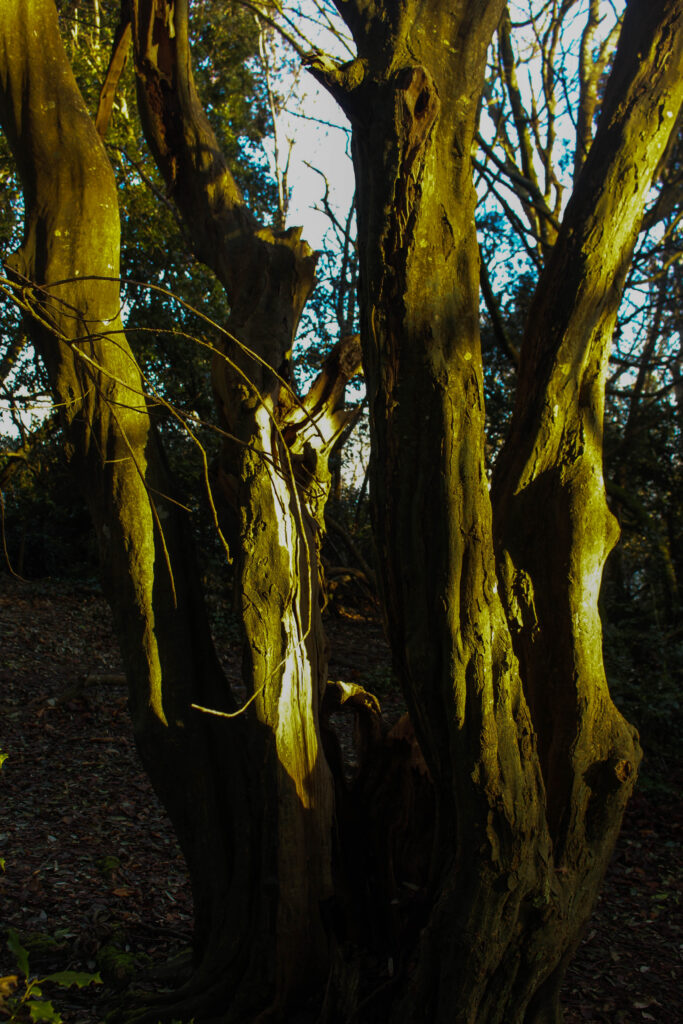

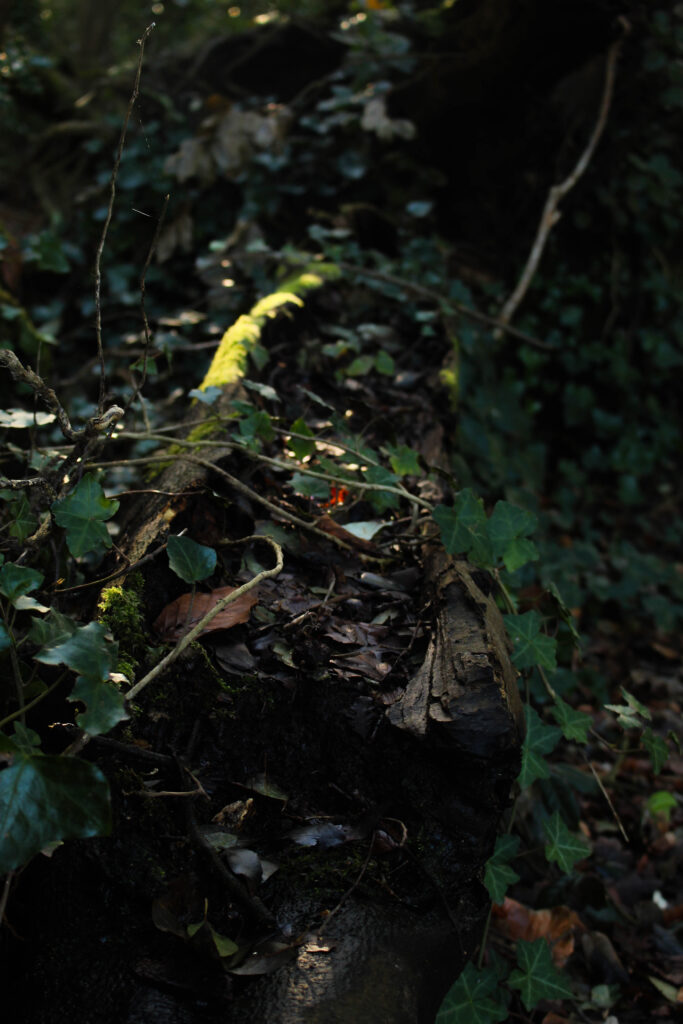
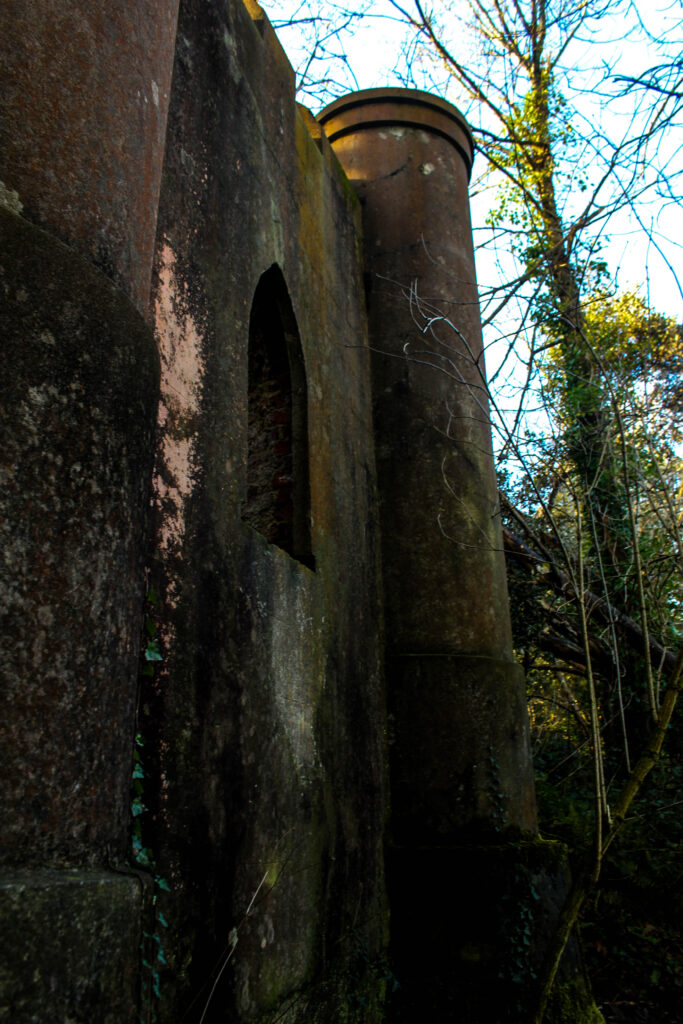
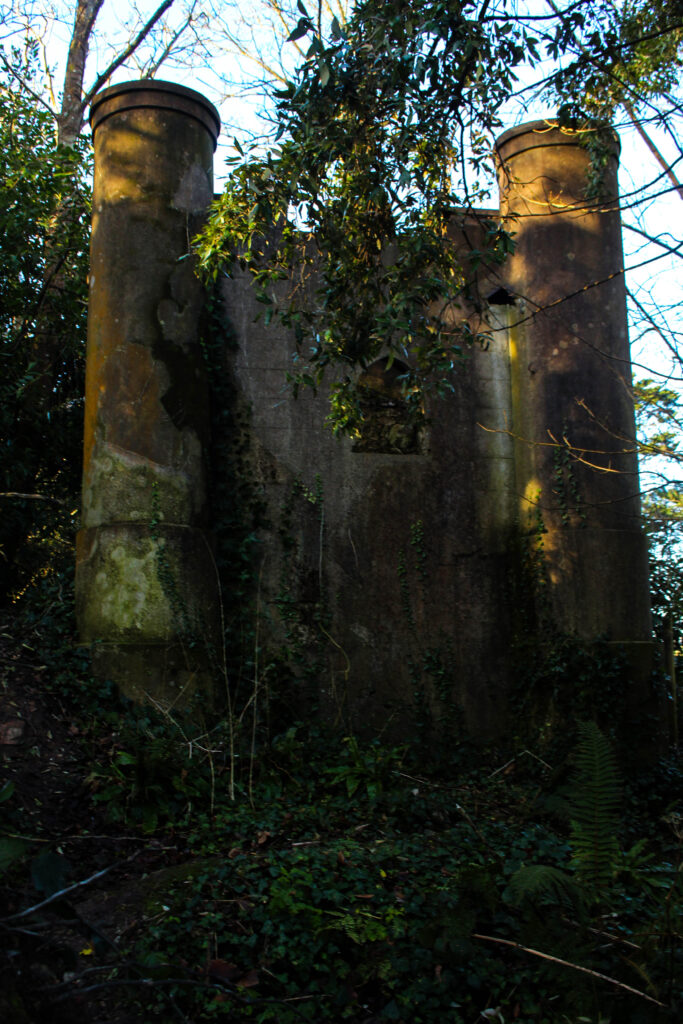

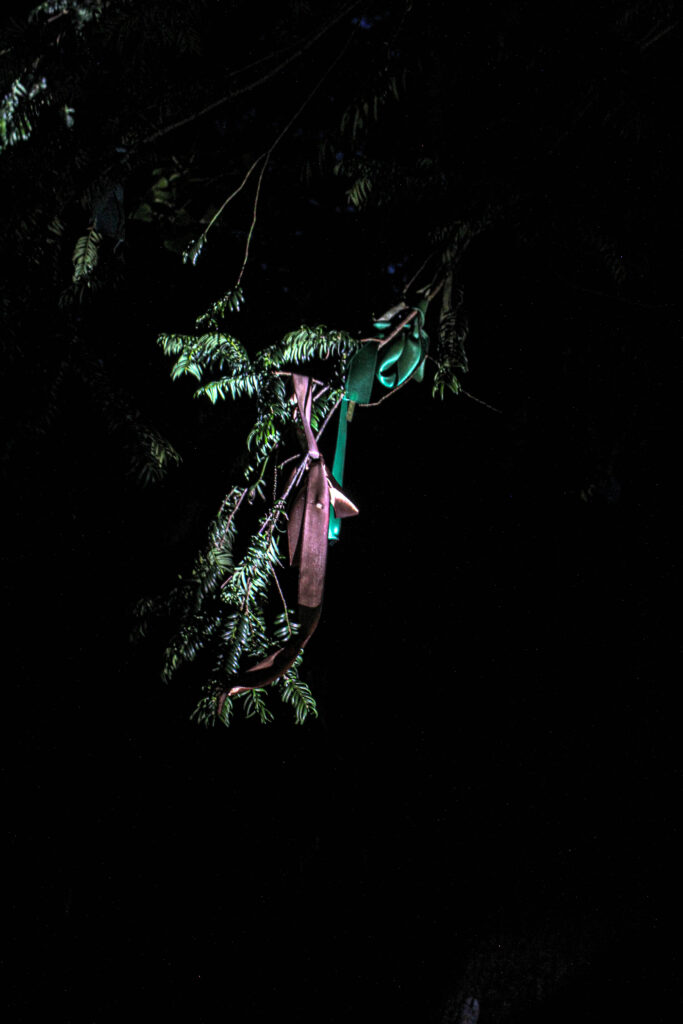
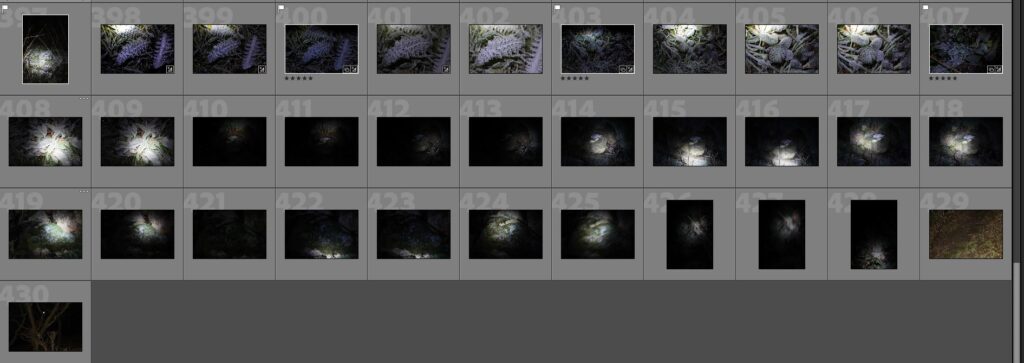



To what extent have Anna Gaskell and Duane Michals explored narrative in their work.
“Trying to combine fiction, fact and my own personal mishmash of life into something new is how I make my work. . .. I try to insert a degree of mystery that ensures that the dots may not connect in the same way every time.”—Anna Gaskell, in NMWA’s See for Yourself card
Both Anna Gaskell and Duane Michal’s explore storytelling and narrative through the medium of photography. I intend to compare, analyse and explore the differing ways they both accomplish coherent and clear narrative through the use of aesthetically interesting images and sequences in order to better understand the art of storytelling. I have chosen Anna Gaskell as a primary focus because of her alternative and dynamic photography focusing on retelling darker and more uncomfortable sides of children’s stories, for example her re-telling of Alice in Wonderland. Her images are disturbing and beautiful on their own but combined tell chilling interpretations of recognizable childhood favourites. My interest in Duane Michals is similar as his work relies on a sequence of images, that appear inconspicuous but when put together create a sense of alienation and disequilibrium. He uses the philosophy that audiences will ‘see what they want to see’ (Michals year: page no? reference source using Harvard system) and believes that literal appearances are unimportant in comparison to the portrayal of the narrative he is trying to convey. This is important for me to understand to create a well-established re-interpretation of Jersey’s urban legends that is disturbing, beautiful and clear in its intentions.

To better understand the concepts of how narrative was explored historically I will investigate when people who first began using photography as an expression of the self rather than a scientific means of recording a moment in time. This leads me to tableaux photography – a style of photography where people are posed in a constructed environment in order to convey a pictorial narrative through a single image, in contrast to photojournalism and documentary photography that make use of series of images in telling stories. Tableaux photography often refers to fables, fairy tales, myths and real-life events as inspiration for recreation, and in this aspect Anna Gaskell draws strongly from the original tableaux photography in her own more modern interpretation. However, tableaux photography depends greatly on the interpretation of the viewer and is often very ambiguous and open-ended recreations of subjective themes. Its origin began with Pictorialism, developed first in the 1870’s. ‘the pictorial image aims to render the real as an ideal; composition should have an idea; meaning’. (author’s surname year: page no? reference source using Harvard system)
Early pictorialist photographers set off through international competitions, exhibitions and publications modelled after the art salon system, often using established painters among the judges. The pictorialist perspective was born in the late 1860s and remained extremely relevant through the first decade of the 20th century. Pictoralist photographers at the time aimed to use the camera as a tool in the same sense as a paintbrush or chisel could be used to convey artistic statements, it was their belief that the camera could be used in a similar manner.
Peter Henry Emerson who was born on the 13th of May 1856 and later died on the 12th May 1936 at 80 years old was a British writer and photographer. His photographs are considered to be early examples of promoting pictorialist sensibilities as an art form. He is renowned for taking beautiful photographs that displayed bucolic settings and more relevantly his disagreements with the photographic establishment about the purpose and meaning of photography. Emerson’s book Naturalistic Photography (1889) was incredibly influential in the last years of the 19th century. Its message reached American and European photographers who began to follow its principles and by organizing associations and exhibitions in effort to show that that photography was capable of producing beauty and expressiveness.

During this strive for photography’s conversion from classical and scientifically documentation to a valued art form, photographers experimented by manipulating images in darkrooms, scratching and marking prints in order to imitate the texture present in canvas paintings, creating blurred images on soft focus to create fuzzy images based on religious and spiritual subject matter, influenced by allegorical paintings. Allegory is a figurative representation of conveying subjective and symbolic figures, using underlying moral ,social ,religious themes and commentary’s, personifying abstract themes such a greed, sloth, charity and envy.
Duane Michals who is lovingly referred too as the father of conceptual photography revolutionised photography in the 1960s by separating himself from traditional documentary and fine art approaches by using innovative techniques that incorporate handwritten messages , poems and multiple frame sequences in order to covey his narrative or ‘story’ through images. ‘Michals manipulated the medium to communicate narratives'(1). Michals work frequently explore themes of identity, desire and the human experience through a subjective and conceptual lens. Michals takes the classic themes from what began as tableaux or pictorialist photography of religion and morality and pioneered his own form of telling individual and intellectual narratives, turning his back to established traditions of documentary and fine art photography, instead of falling into the shadow of respected masters of fine art photography Ansel Adams, Henri Cartier-Bresson and the like. Michal’s creates sequences of multiple images to convey compelling and queried inducing visual stories. ‘ He has always considered himself to be a storyteller.'(2) Michals found himself inspired by the surrealist painter Rene Magritte who challenged viewers perceptions of reality with witty and thought provoking images, and in his like began experimenting with double or triple exposures in order to expand the meaning and interoperability of his subject.

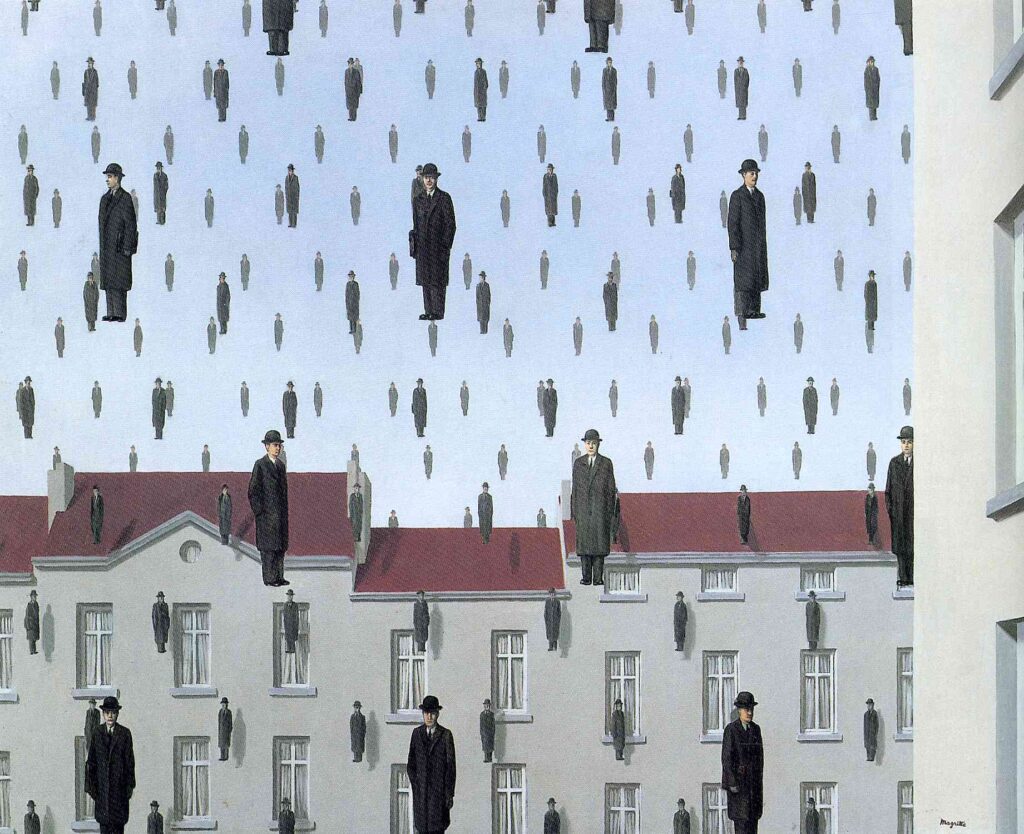
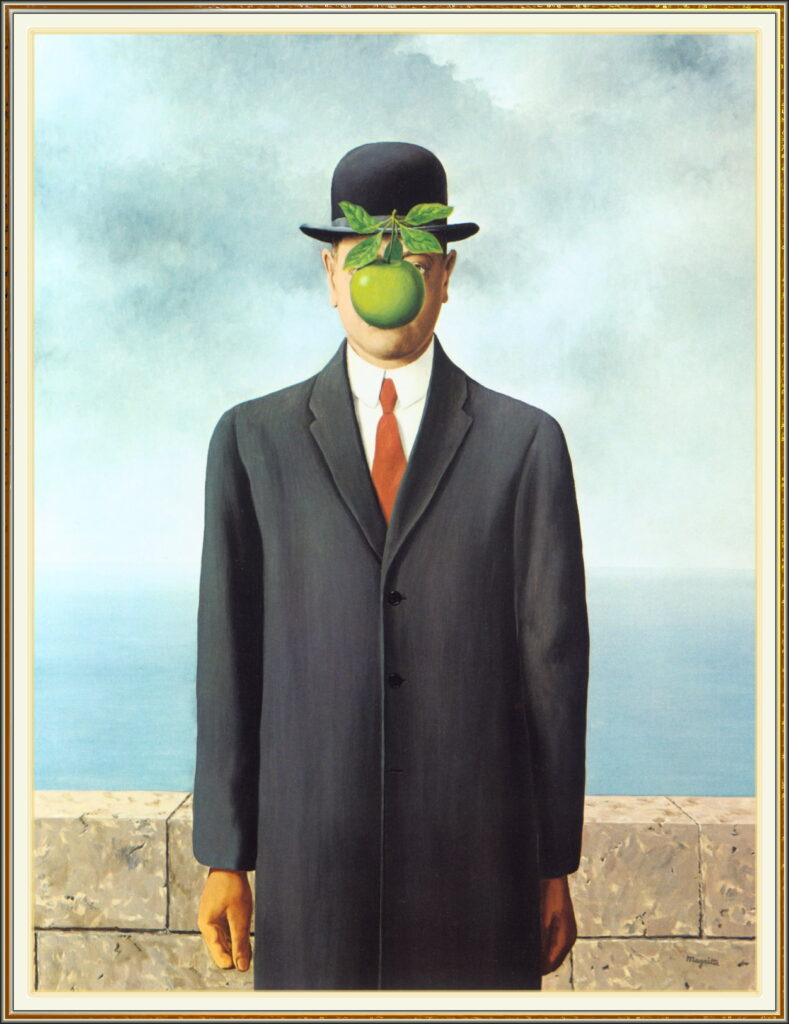

When looking at Michals photography it is very important to consider that his images are typically created to be a singular image in a sequence of many, but when looking that the individually, it is clear to me he typically stylises his images as black and white photographs with high exposer and a wide lens. In this particular image Michals utilises butterfly lighting to create sharp idealistic lines across the face to accentuate the models features as ‘beautiful’ to contrast with a skeletal figure looming behind him, highlighted by the dramatic lighting and deeply contrasting shadows and highlights throughout the photograph. Duane Michals is thought to be ‘rejecting the notion of the “decisive movement,” the supremacy of the sensational singular image, and the glorification of the perfect print'(3) as he regularly aims to capture images mid motion or slightly ‘fuzzy’ in order to portray a moving and compelling narrative.

keeping this in mind when we begin to look at anna Gaskells work and influences we begin to see many similarities in active story telling, Gaskells photographs are often created to represent motion and action, using this similar idea of movement captured within the photograph, using awkward mid movement posing, in contrast with Michals work her photos are clear and in focus.

Gaskell is best known for her photographic series that she calls “elliptical narratives”, which are considerably similar to Cindy Shermans photography. Gaskell’s photographs are inspired by film and painting, rather than the typical conventions of photography in a similar fashion to Shermans photography

A series of photos that is intriguingly similar to Duane Michals photography is her series Turns Gravity where the images follow faceless youthful figures playing and exploring a woodland setting, this series of images is intriguingly ambiguous when compared to some of her other photo series that are clearly and intentionally inspired by childhood stories with dark and twisted underlying themes.
these subjective or ‘ambiguous’ themes are closely related to the interpretability recognised in pictorialism photography and Michals photo series’ she uses tight framing and dramatic staging to distort the figures features as well as a shocking colour scheme encouraged by Gaskell Dressing the boys in black and White. In this series much like most of Gaskells work, their are brief and intense flashes of violence throughout, this in combination with the anonymity of the central figures and the overall mystery of the driving themes this creates a tense and foreboding feeling when viewing the series.
unlike Michal’s, Gaskells photographs are not taken to be viewed in a certain order ‘With no set order to the images, they can form entirely new stories with each change of sequence, inviting the viewer to interpret the enigmatic events of each narrative.'(5), her images can be reconfigured to create entirely new narratives depending on the viewer’s interpretation.
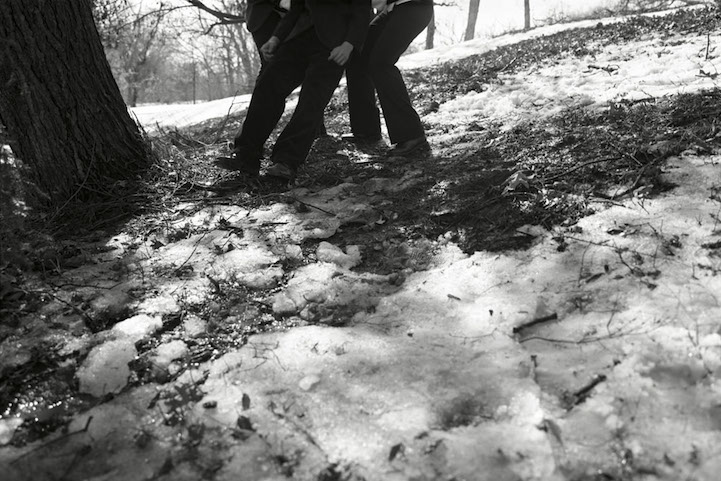

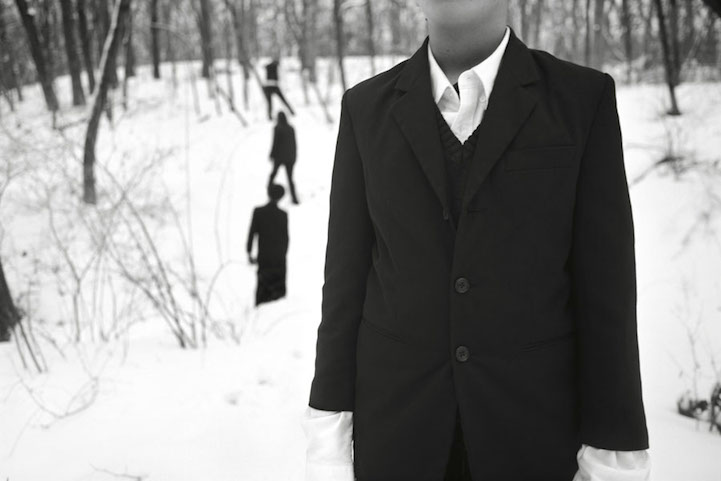
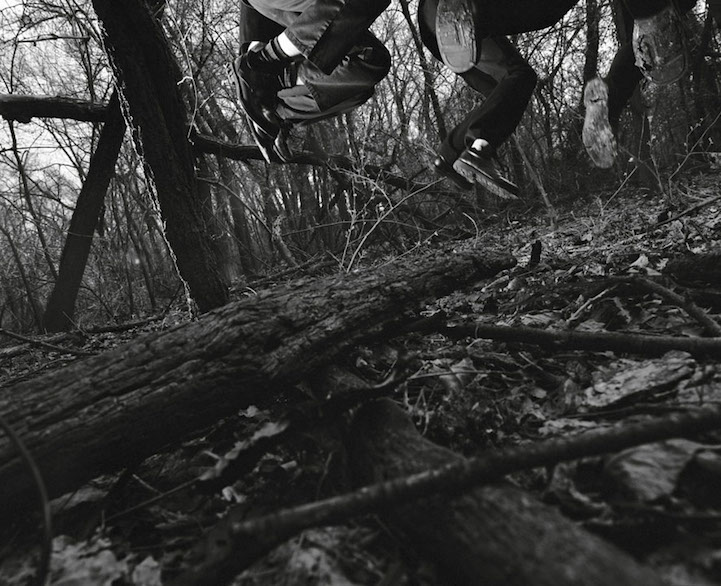
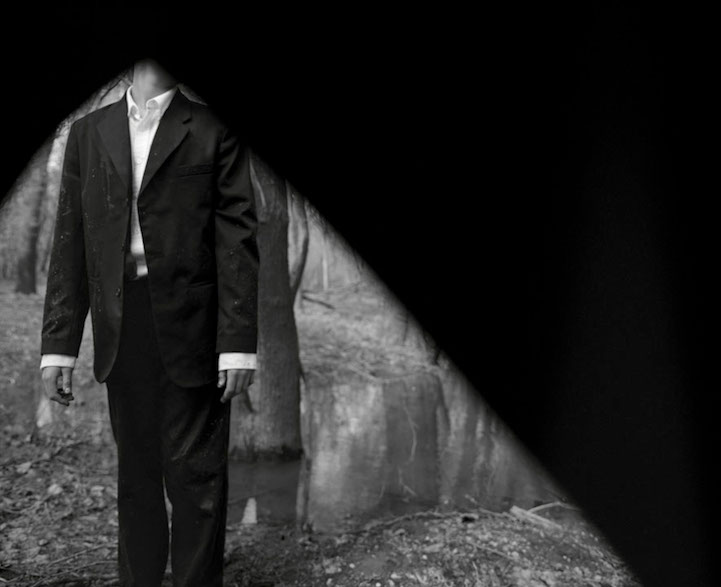
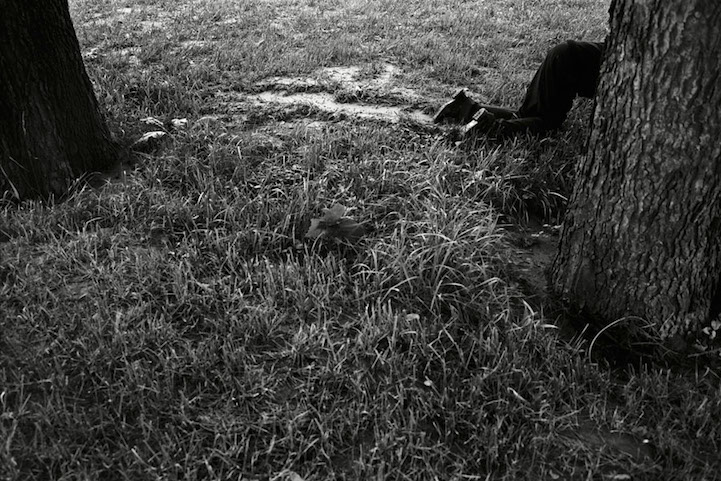
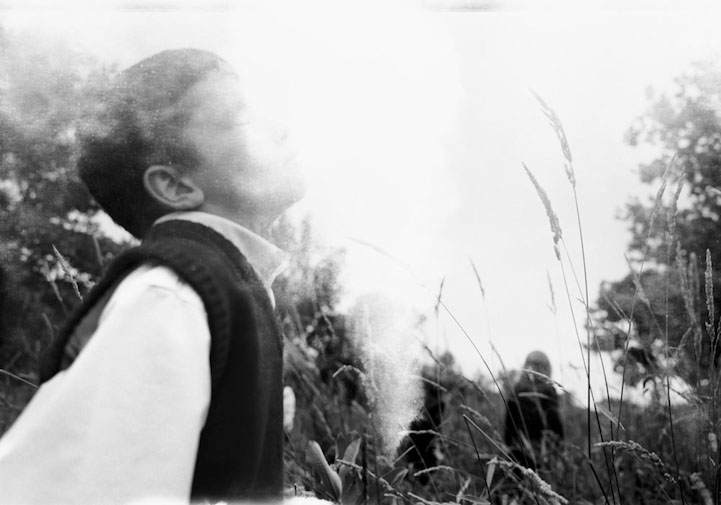
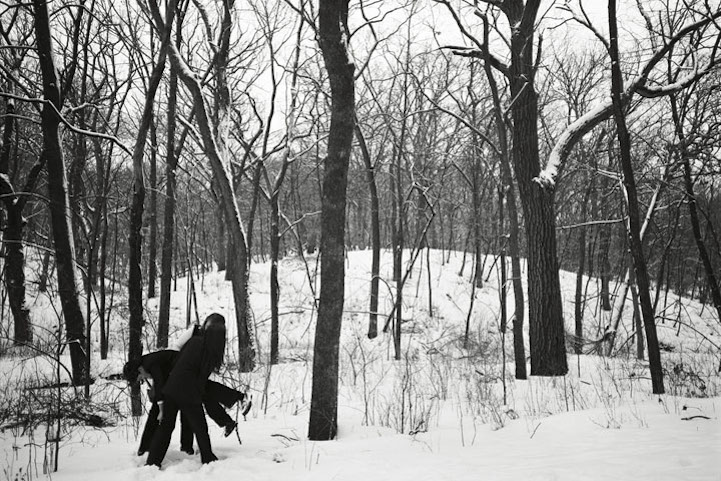
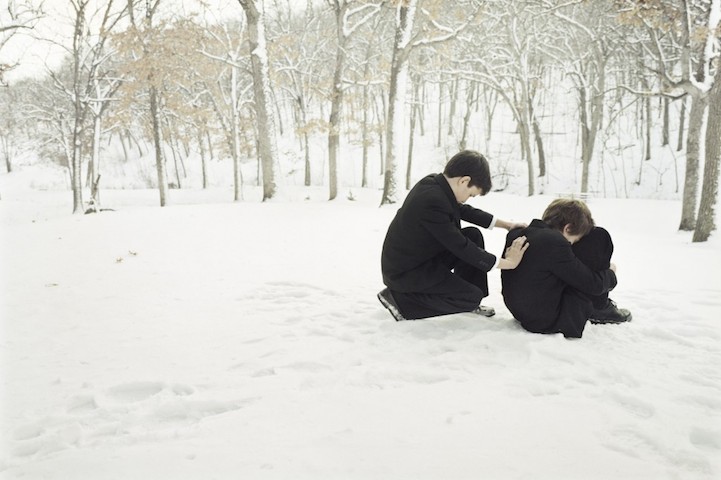
“The stories and events that I choose to use as jumping-off points are simply that. They are only a part of what goes into the work, and perhaps a useful reference for viewers,” she explained. “Trying to combine fiction, fact, and my own personal mishmash of life into something new is how I make my work.”(6)
I believe although influences are different between the artists with Michal’s drawing influence from his own fantasy’s and personal perceptions, and Gaskell drawing influence from traditional and recognisable children’s literature they both make considerable efforts to insert themselves into their photographic series, while Duane’s series’ rely entirely on the viewers perceptions and interpretations in his belief that imagination is far more significant than real life’ believe in the imagination. What I cannot see is infinitely more important than what I can see.'(7) Gaskell uses recognisable situations and stories for the viewer to identify and consider when deconstructing the intentions and narratives behind her photo series’ however both photographers utilise a sense of unidentifiability and ambiguity to covey the stories they are trying to emanate.
Both of their accomplished and recognised abilities to portray clear and unique narratives through photography relies on them building a structure and aesthetic whether that’s a wide camera lenses and slow shutter speed in Michal’s case or Gaskells intentional cropping a posing that directs the viewer to their conclusion, whether it was the photographers intended conclusion or otherwise.
1=thephotographicjournal.com. (n.d.). Duane Michals. [online] Available at: https://thephotographicjournal.com/interviews/duane-michals/.
2=Carnegie Museum of Art. (2024). Storyteller: The Photographs of Duane Michals. [online] Available at: https://carnegieart.org/exhibition/storyteller-the-photographs-of-duane-michals/ [Accessed 2 Feb. 2025].
3=Popular Photography. (2019). Interview: Duane Michals on 50 Years of Sequences and Staging Photos. [online] Available at: https://www.popphoto.com/american-photo/interview-duane-michals-50-years-sequences-and-staging-photos/.
4=BOMB Magazine. (2024). BOMB Magazine | Duane Michals. [online] Available at: https://bombmagazine.org/articles/1987/07/01/duane-michals/.
5=Zhang, J. (2014). Intriguingly Ambiguous Visual Narratives by Anna Gaskell. [online] My Modern Met. Available at: https://mymodernmet.com/anna-gaskell-turns-gravity/ [Accessed 4 Feb. 2025].
6=Artnet.com. (2023). Available at: https://www.artnet.com/artists/anna-gaskell/.
7=BrainyQuote. (2025). BrainyQuote. [online] Available at: https://www.brainyquote.com/quotes/duane_michals_106045 [Accessed 4 Feb. 2025]
when considering my favourite image from my rear screen experimentation I noticed I could create a similar effect with studio lights and coloured gels


using two flash lights with varying different coloured gels, with the intention of creating harsh shadows and interesting lighting combinations. this photo is less about story telling and more aimed to present a clear and impactful image of the creature





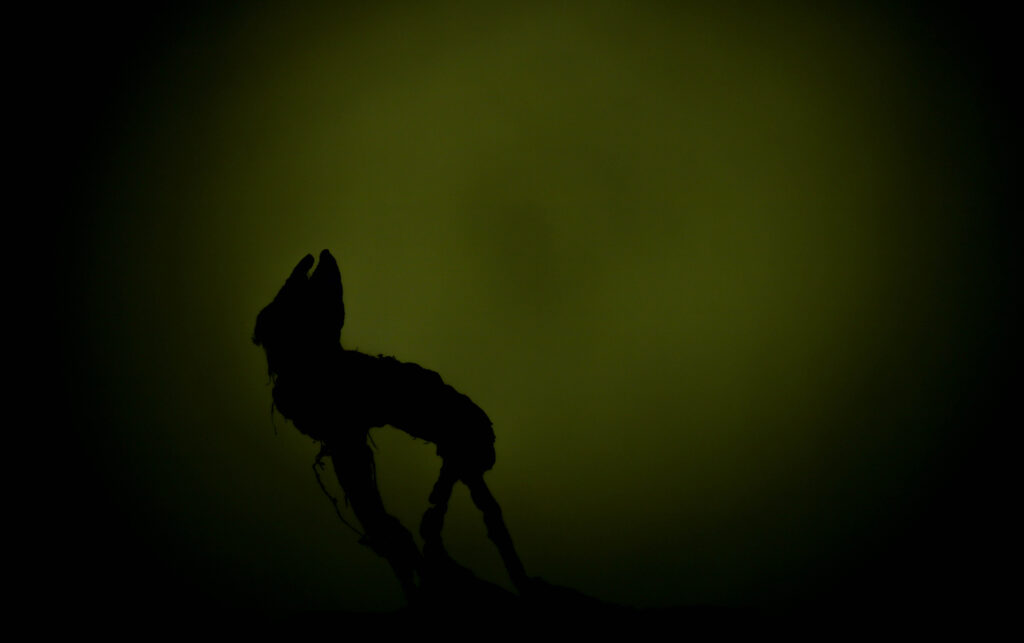
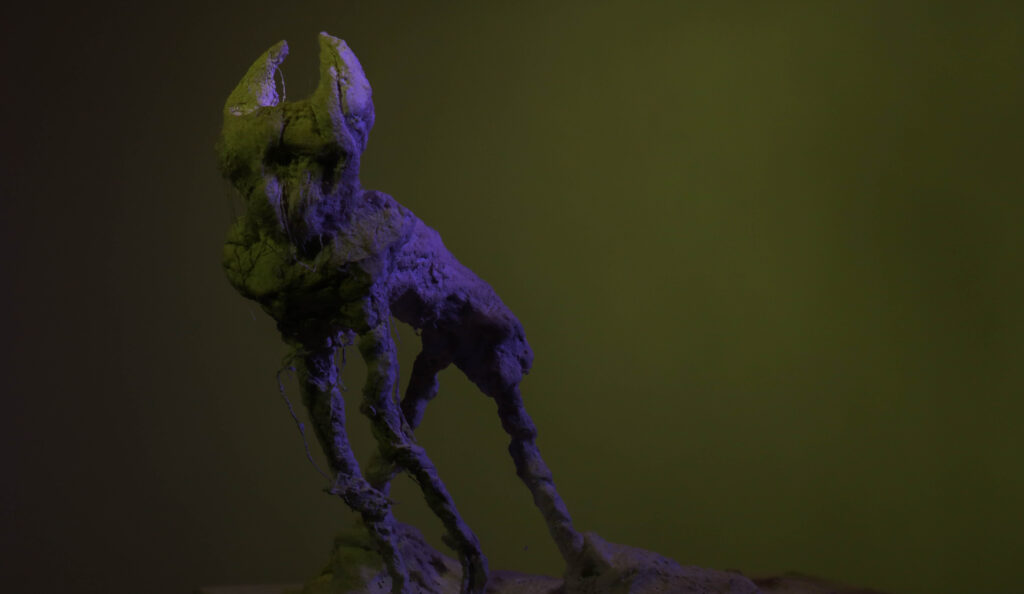
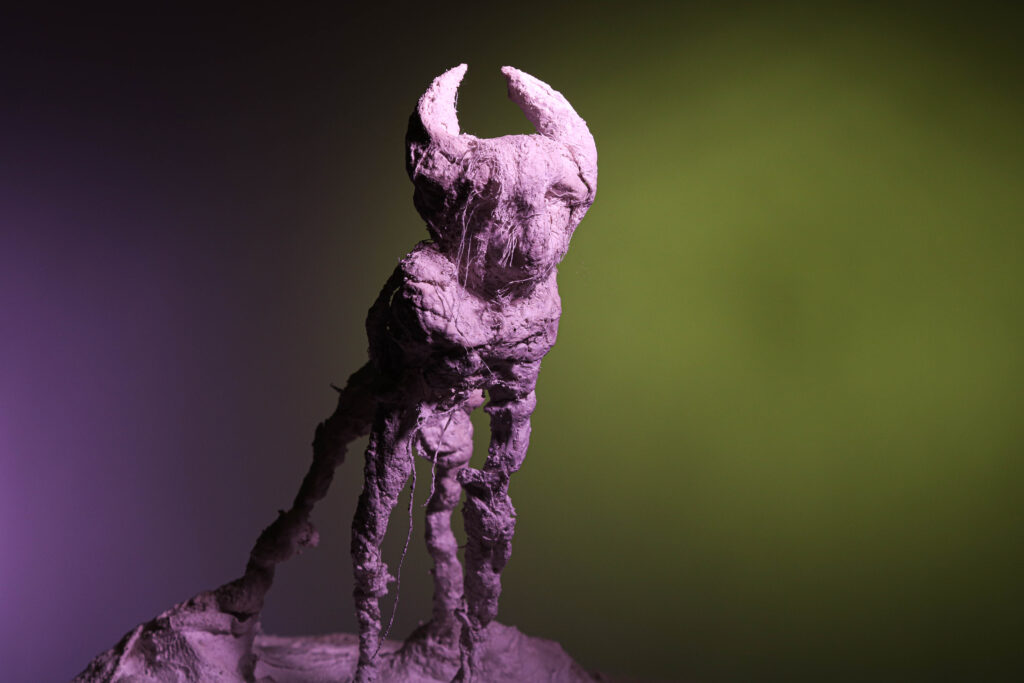
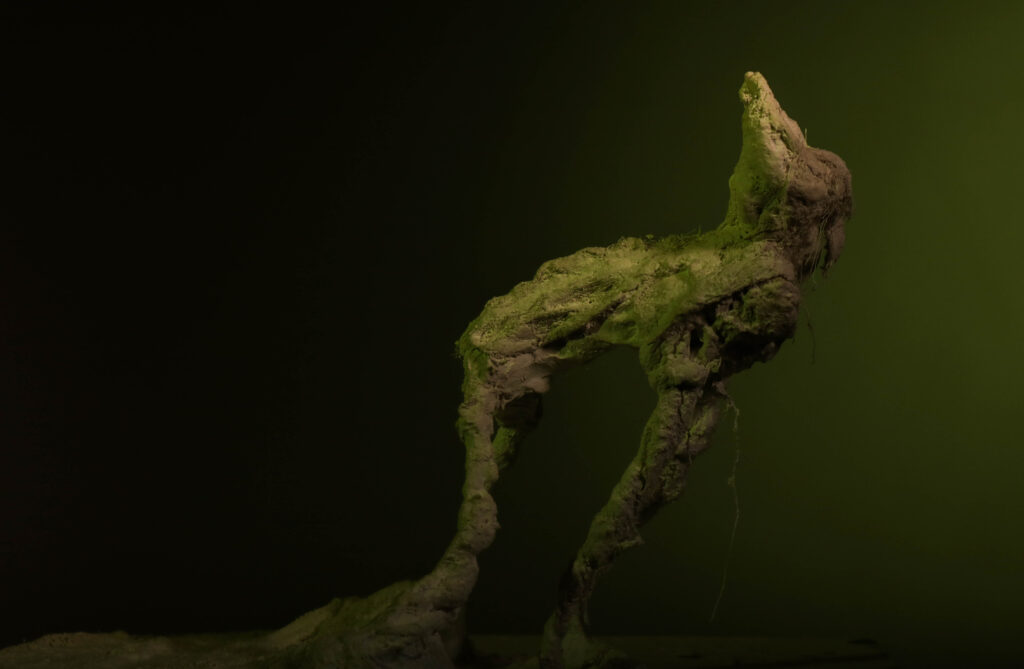
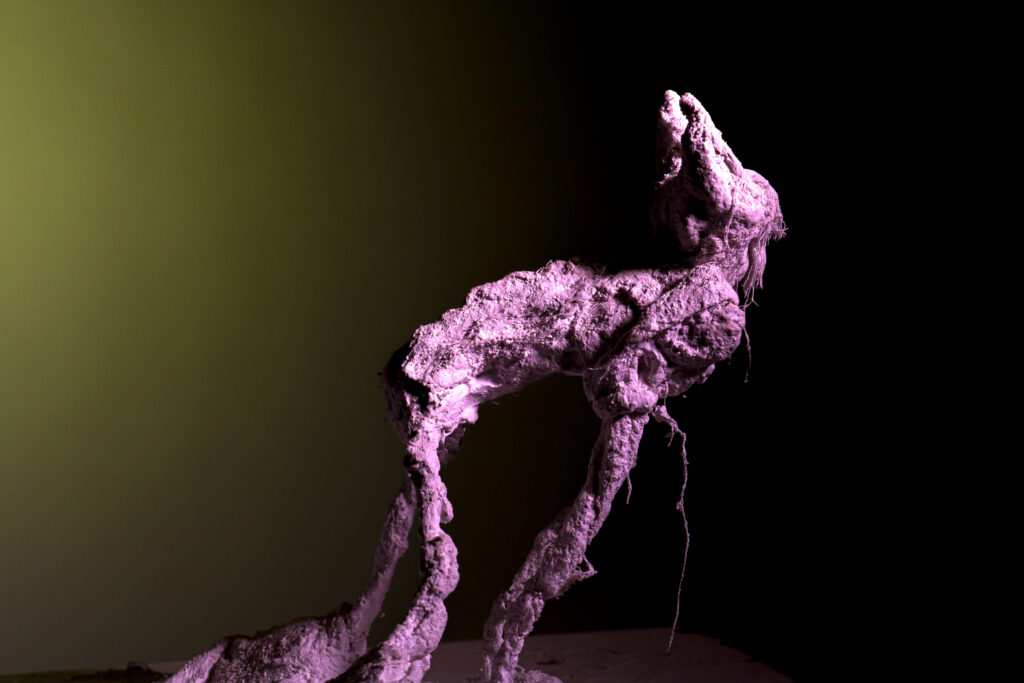


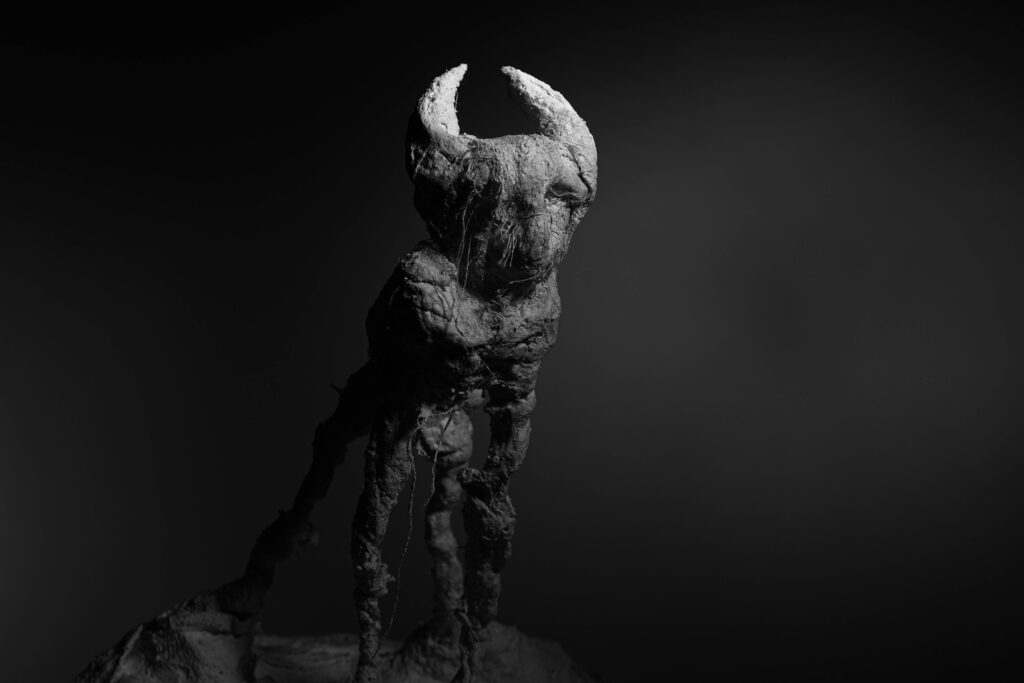

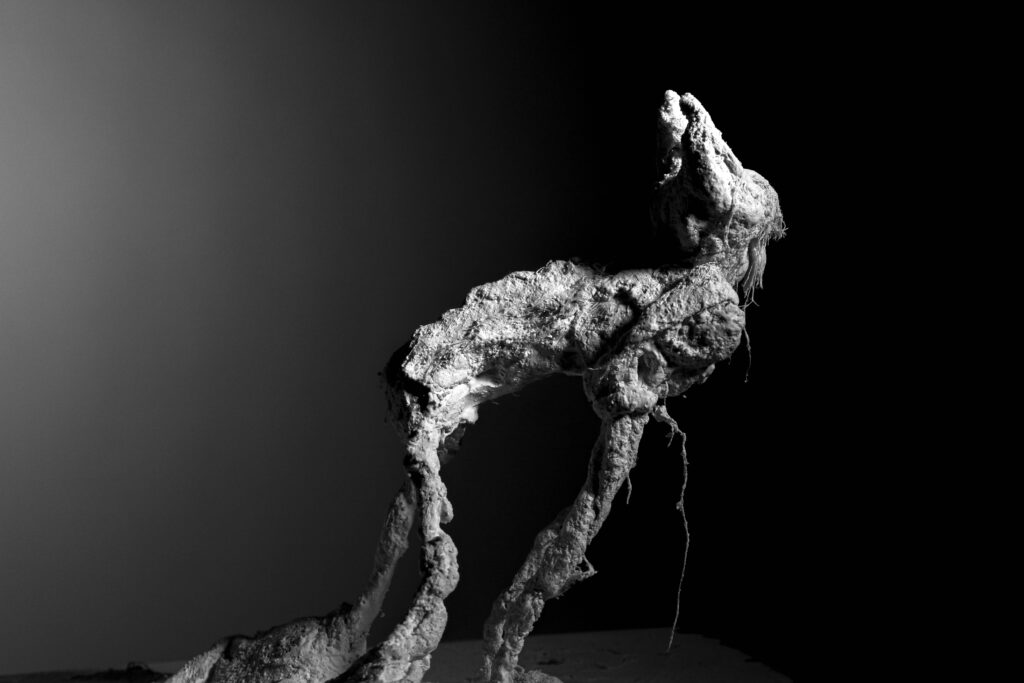
Concept
The original idea was to use projection to create silhouette images of my sculpture with landscape backgrounds to create the perception of a large creature when in-fact my sculpture was about the size of a doll
Inspiration
for this idea I drew inspiration from Cindy Sherman’s rear screen projection

Studio Set Up
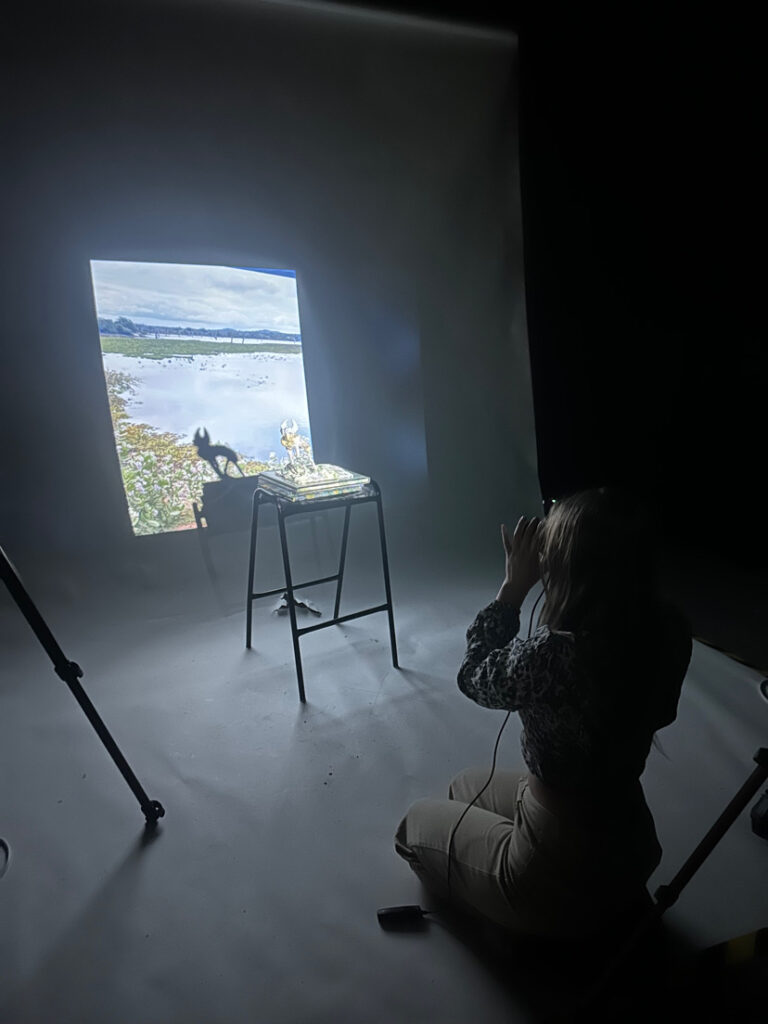
Using a projector and a my sculpture propped up i began this process, at first I was manually taking the photos but after experimentation I discovered a low shutter speed would create the highest quality images, in light of this I began using a tripod to prevent image blur and in order to capture the highest quality image I was able too
Photoshoot

favourite images focussing on silhouette
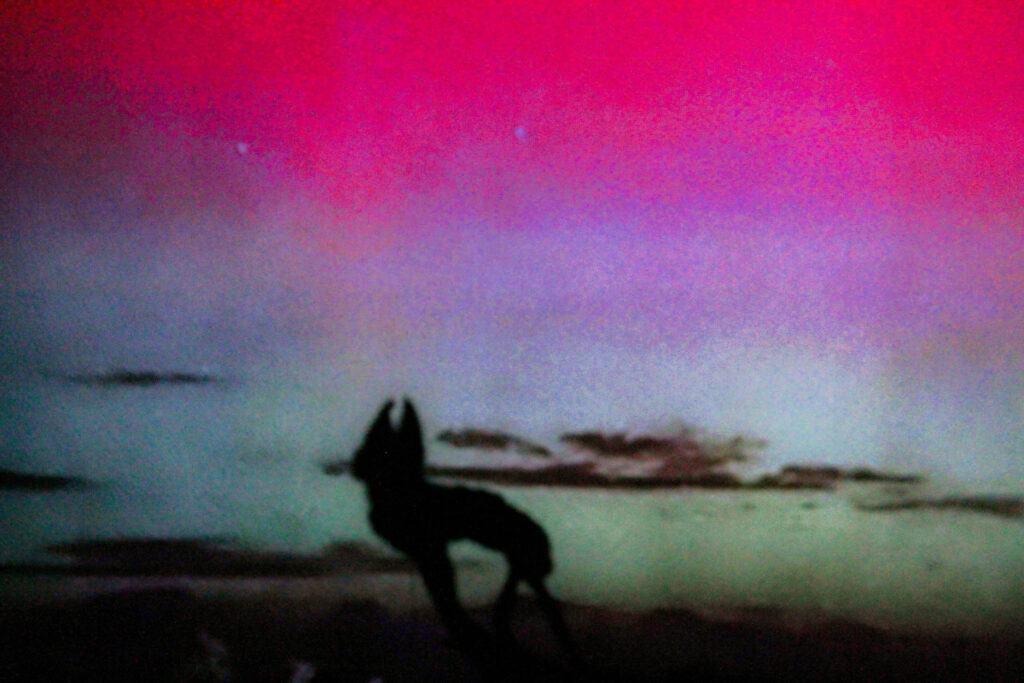
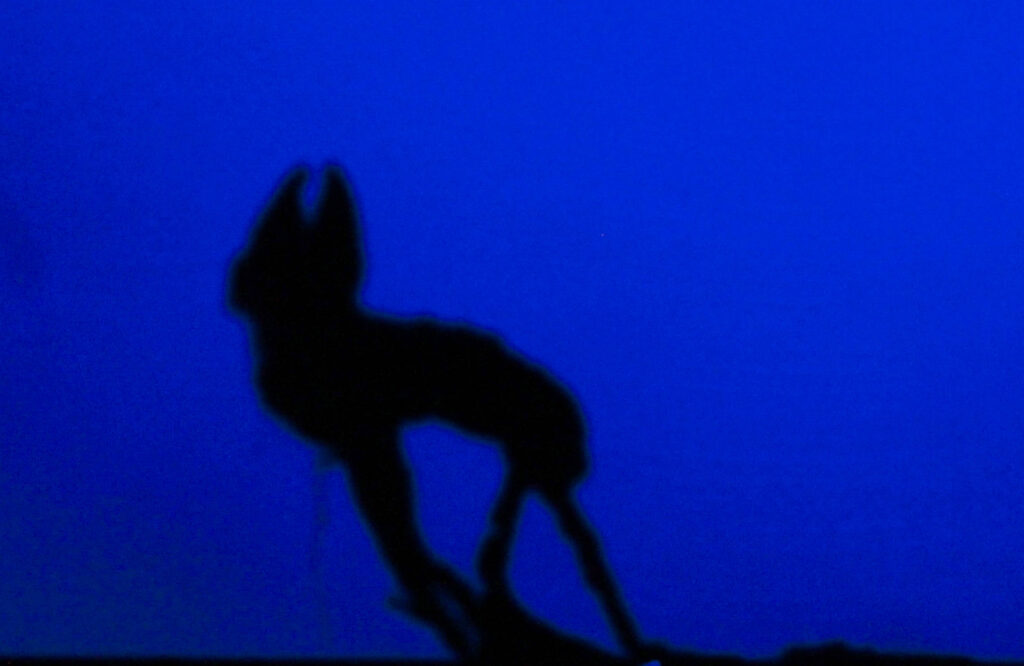
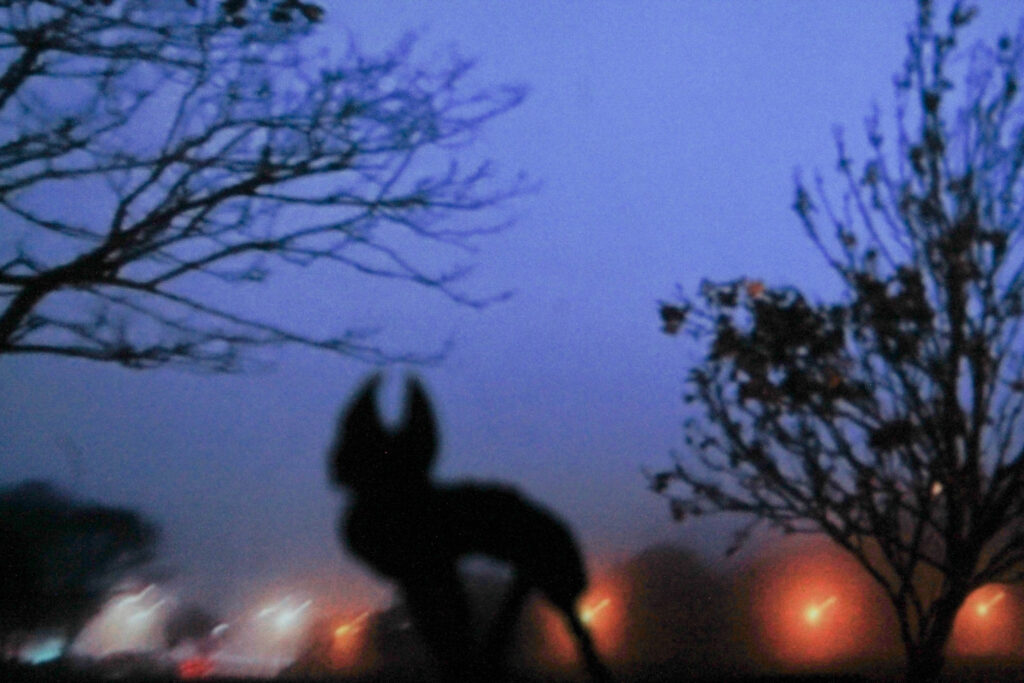
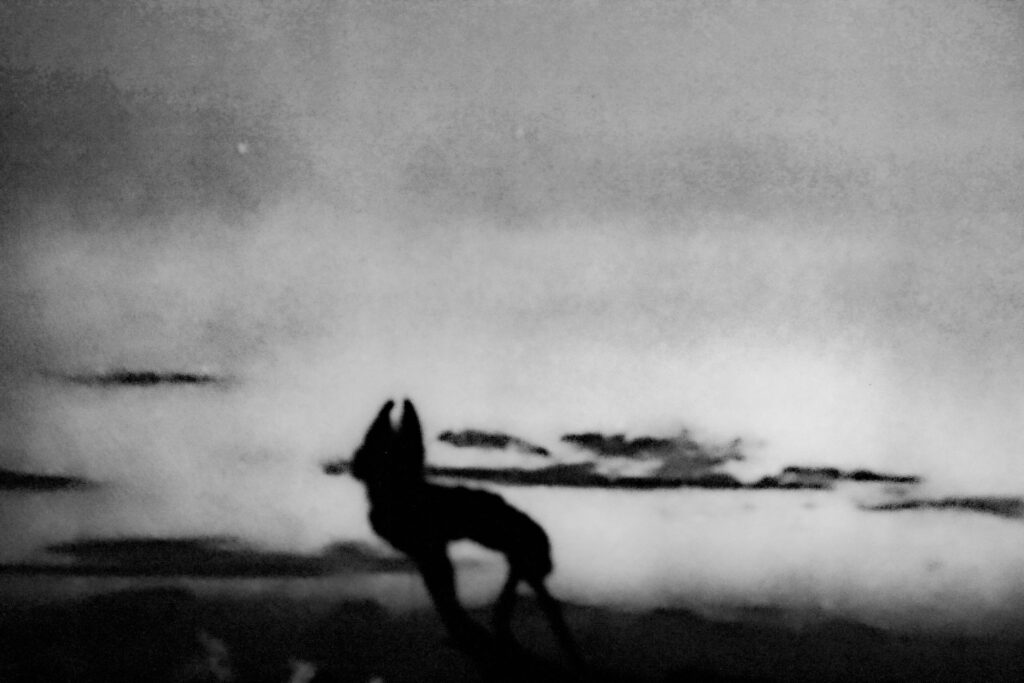


next steps
After experimenting with silhouettes I next began projecting onto the sculpture instead of behind and I found this far more successful
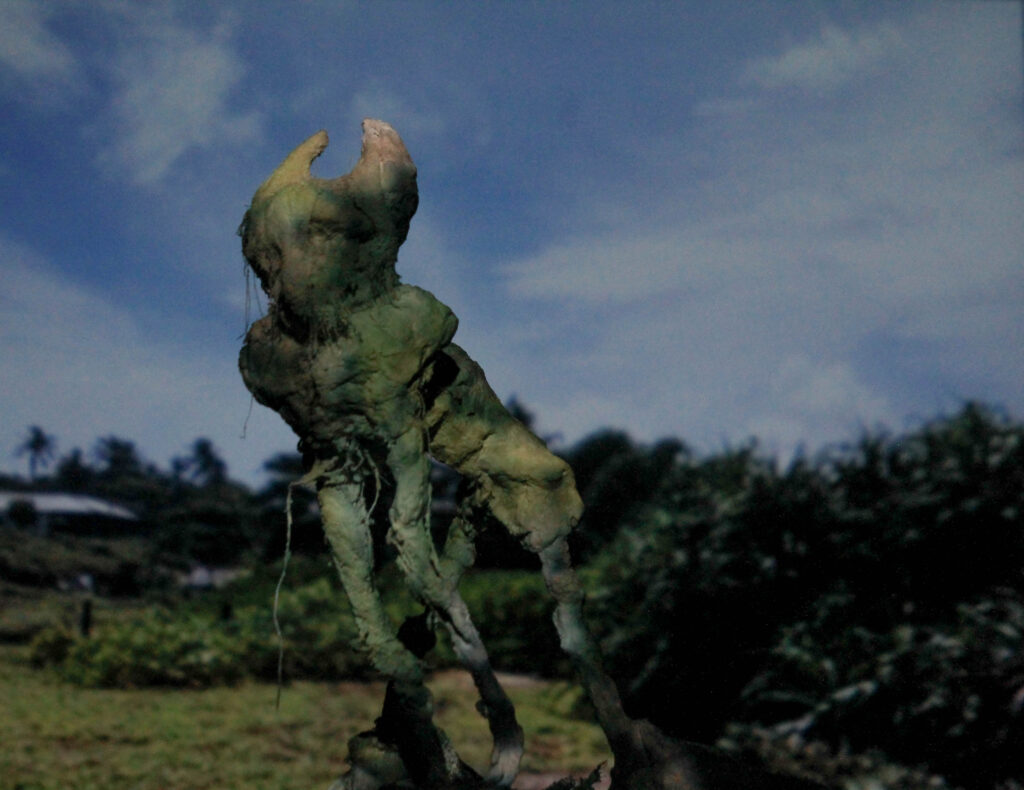
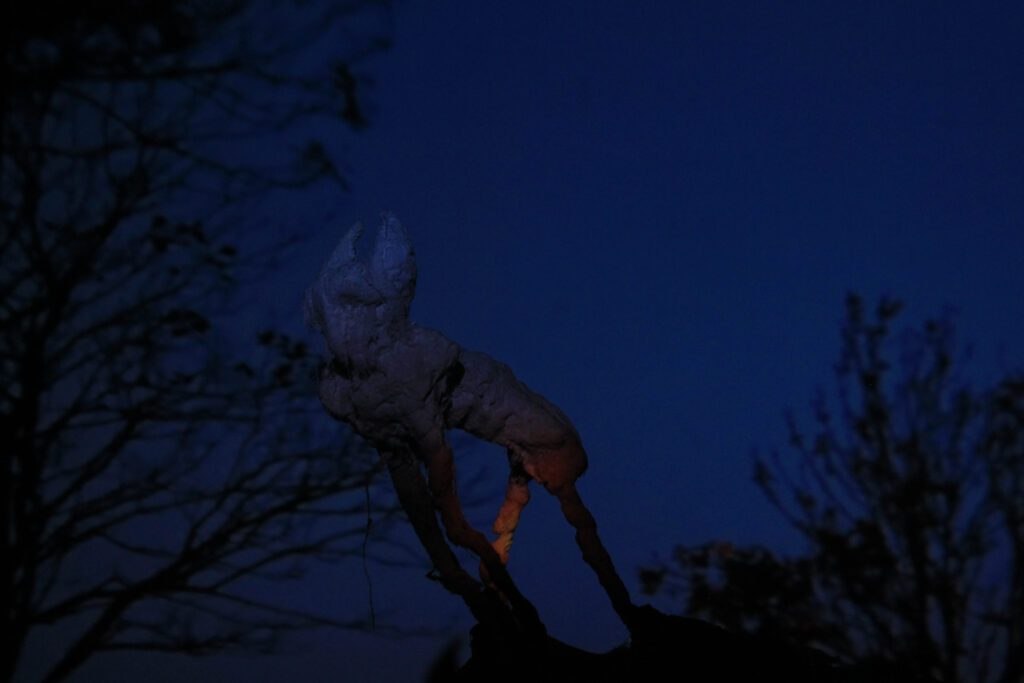


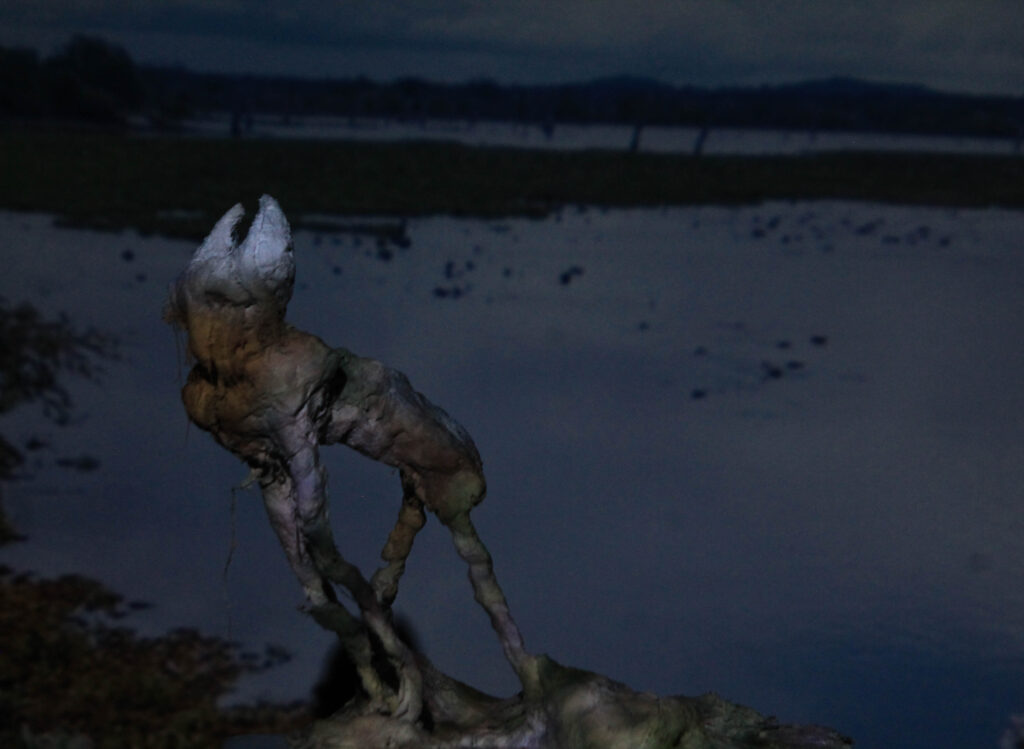
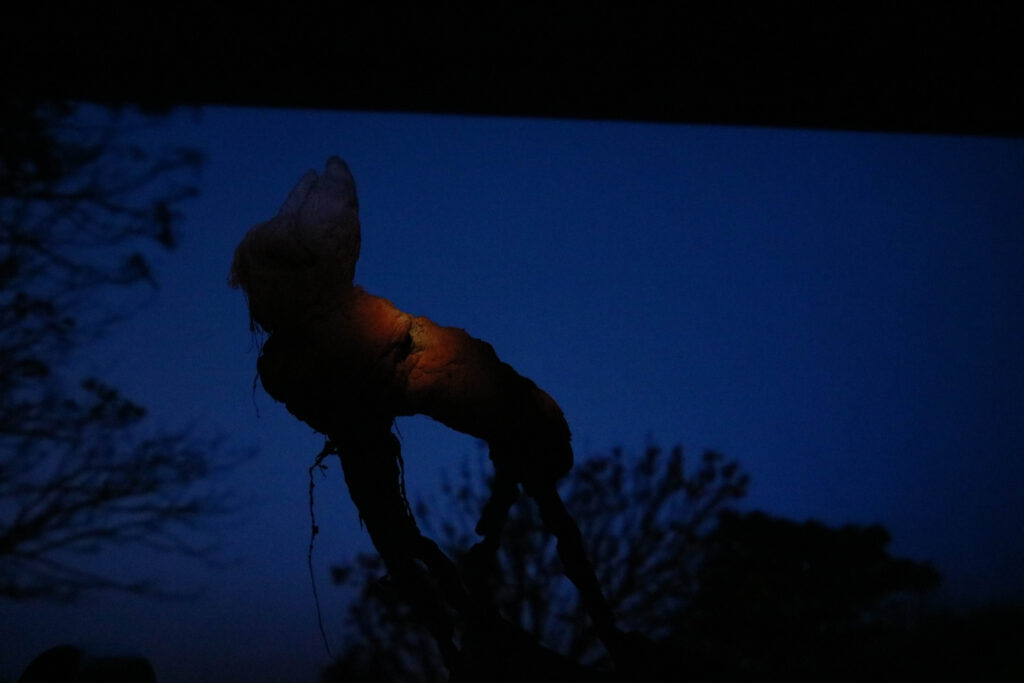
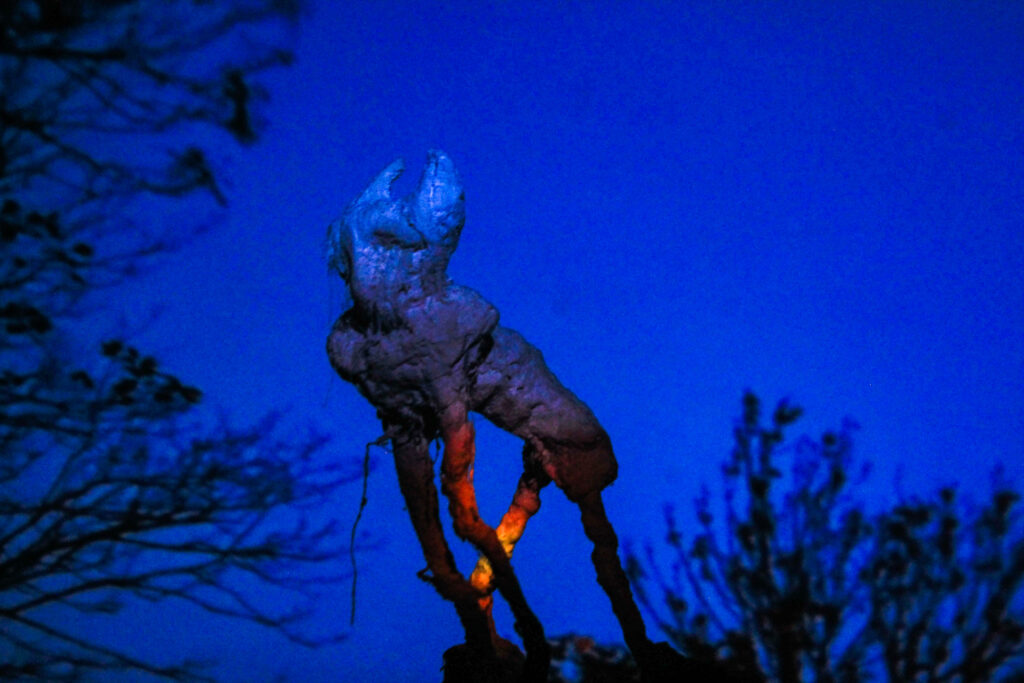

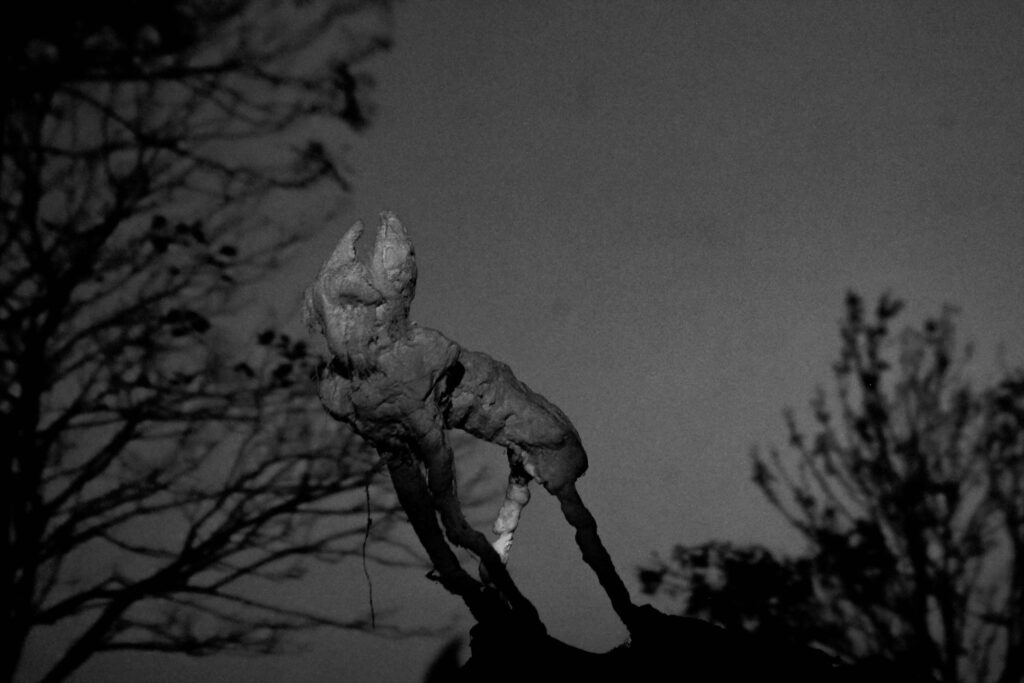
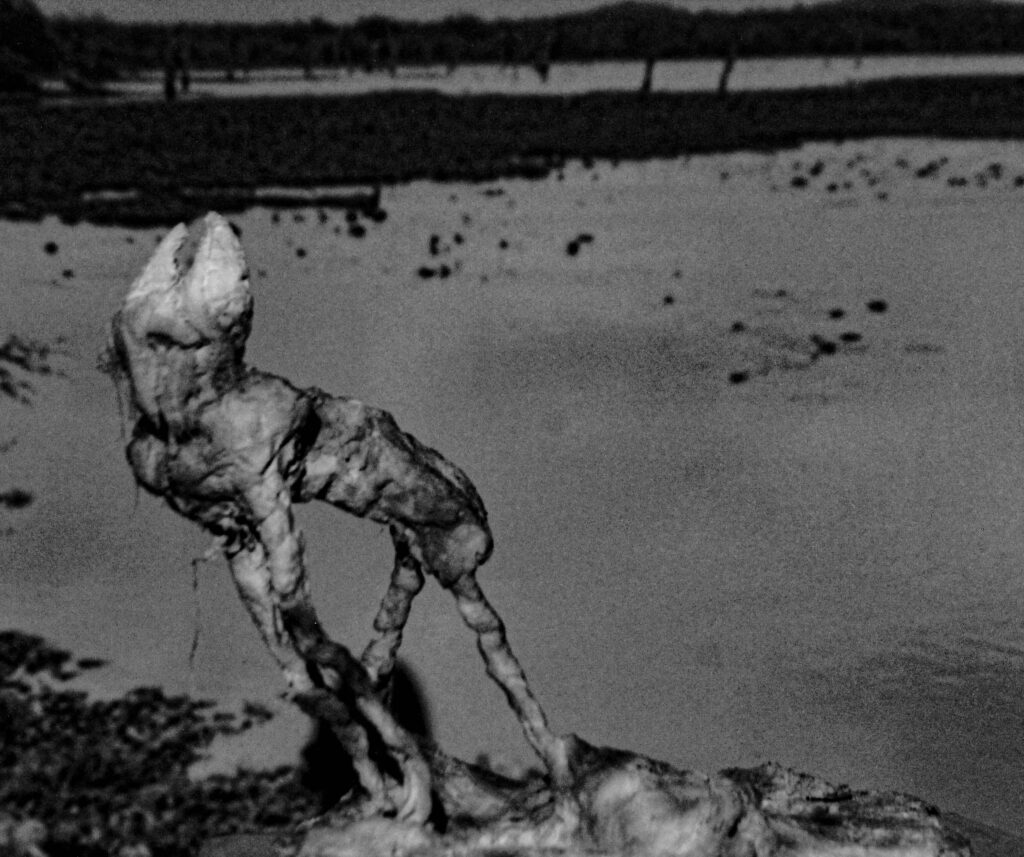
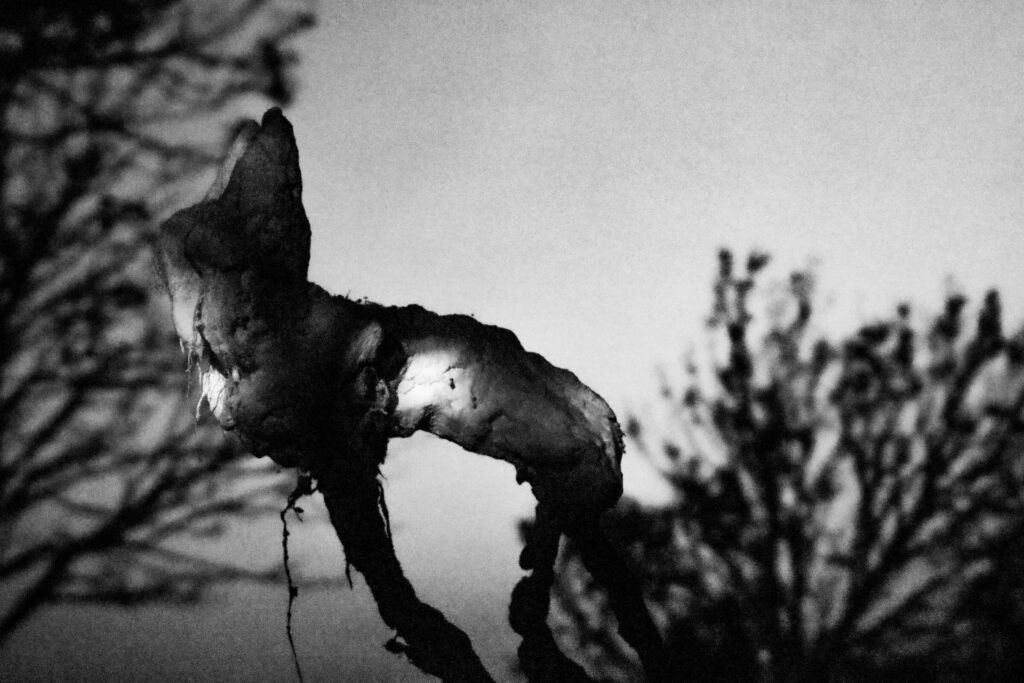
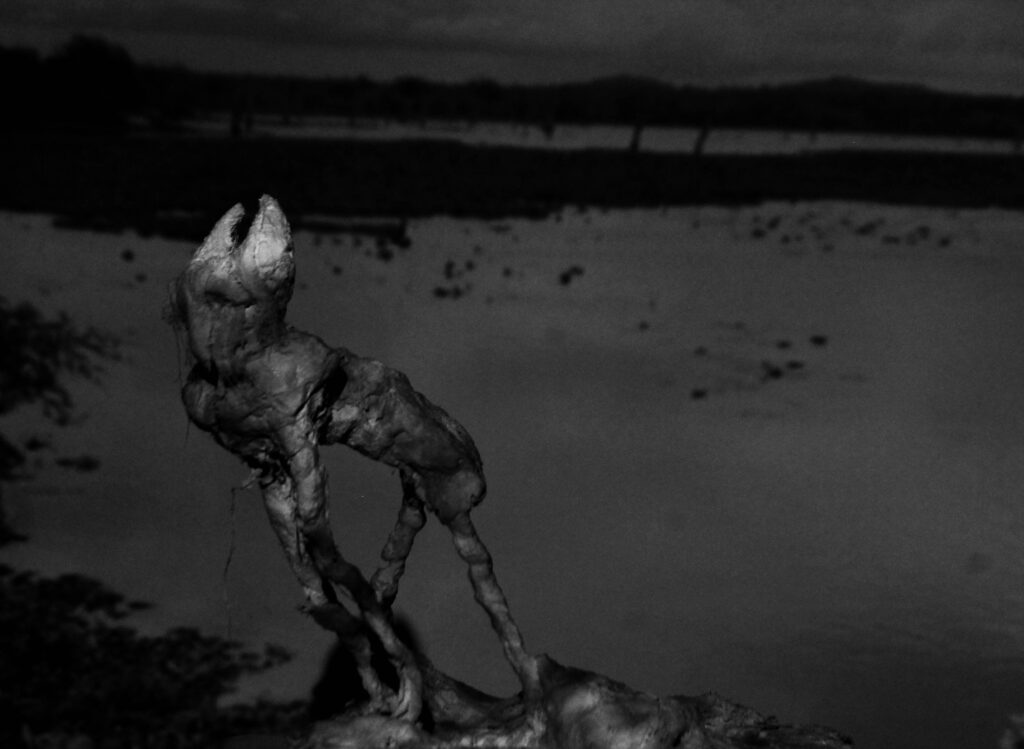
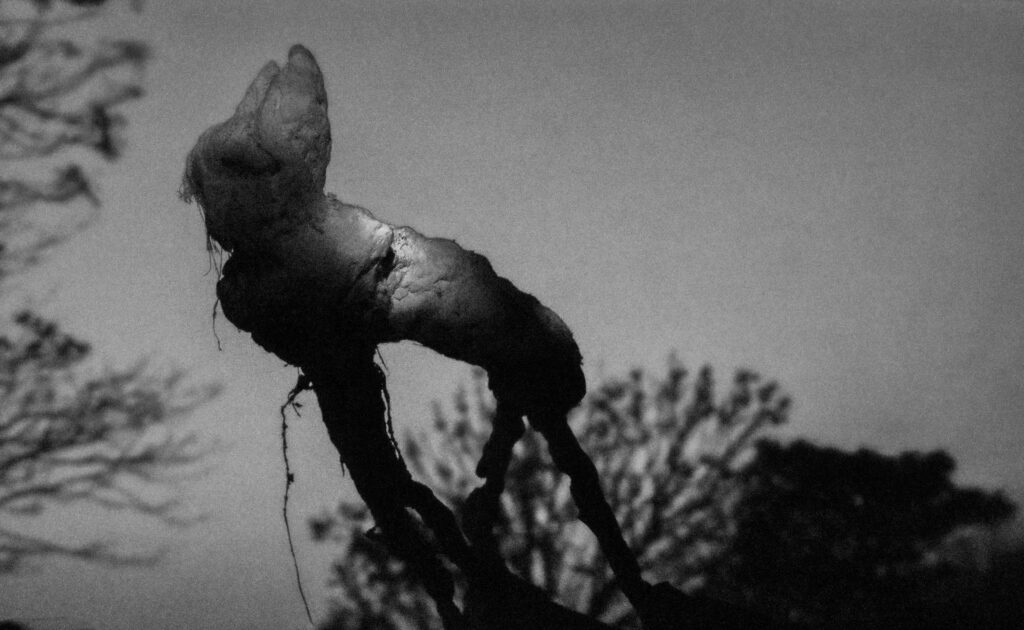


these images will be fundamental story telling images in my picture book, in order to portray the size and supernatural nature of the creature.
using photoshop i then began to experiment with the camouflage effect i was able to create through projecting onto to sculpture with higher quality photos of local woods.
